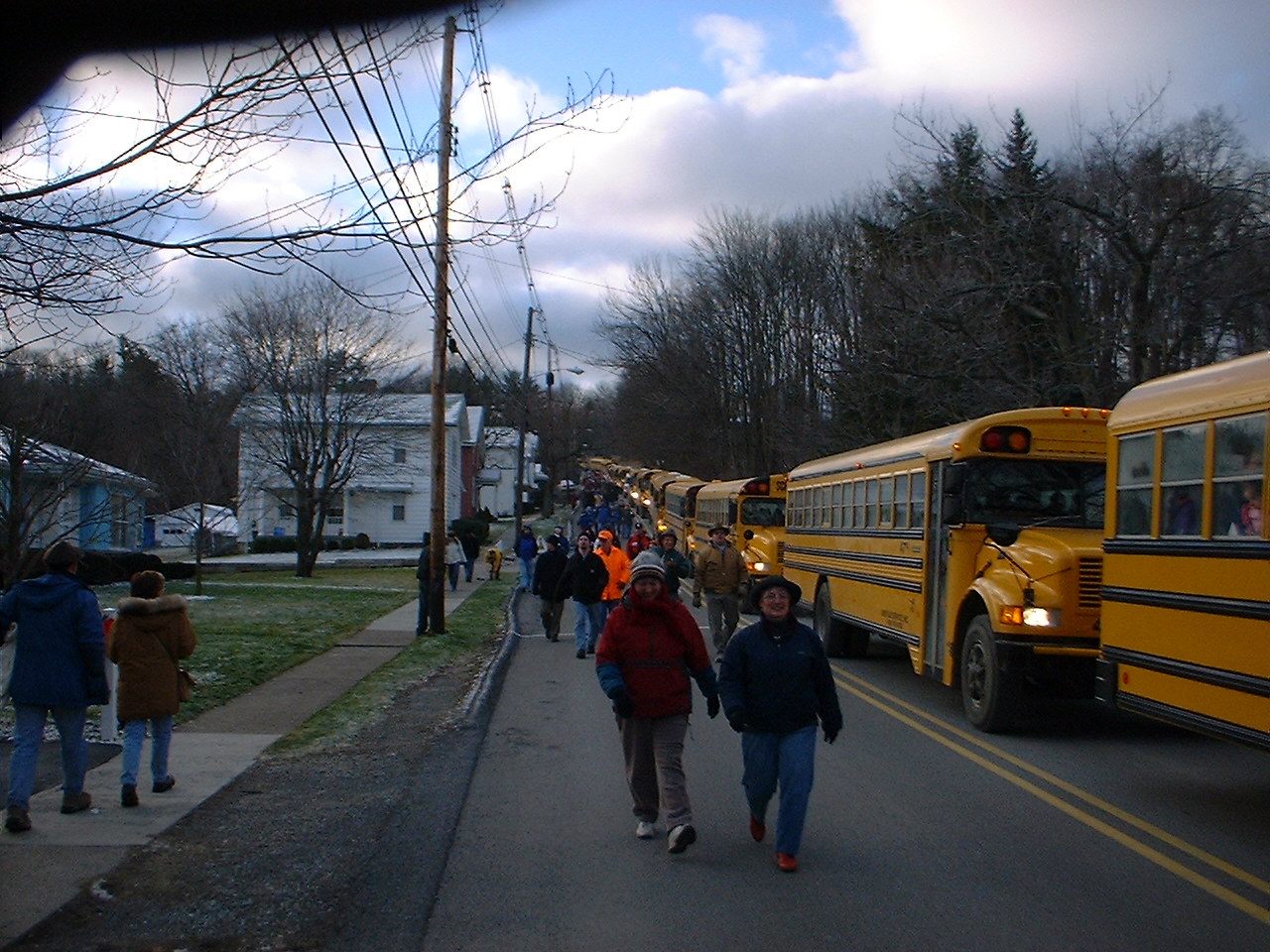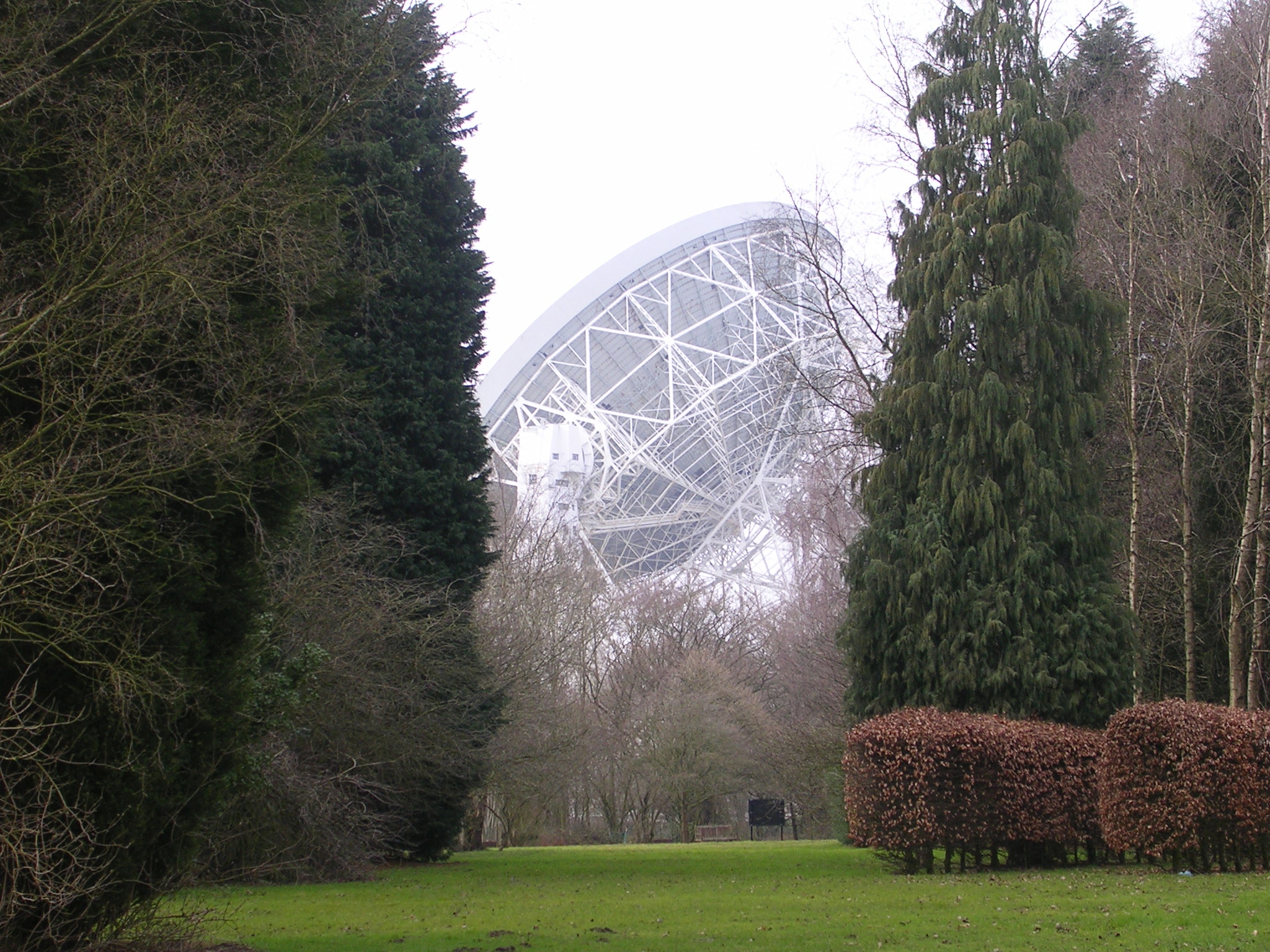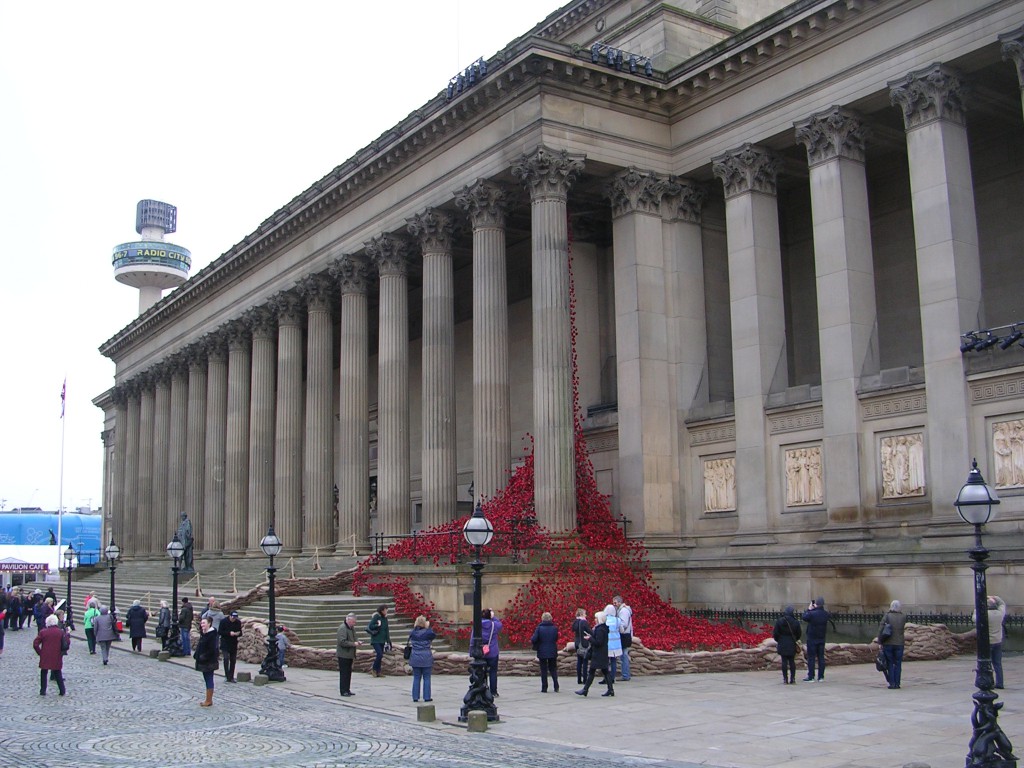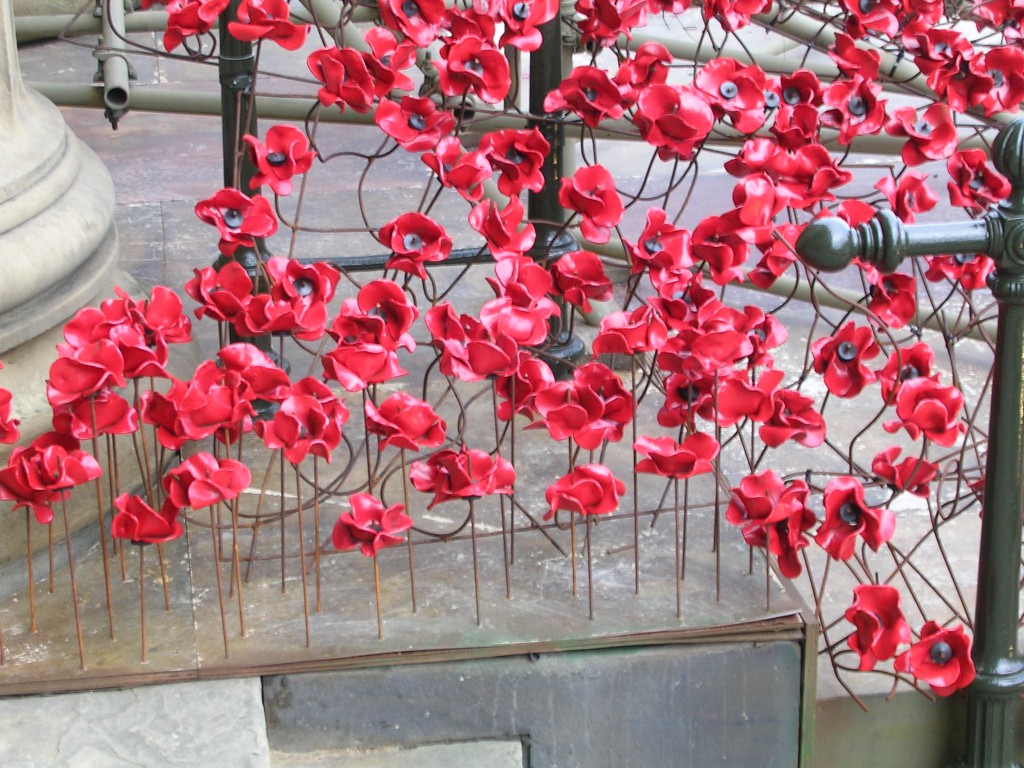Opened in 1911, the Tees Transporter Bridge in Middlesbrough is the last remaining transporter bridge in the UK still providing daily public service.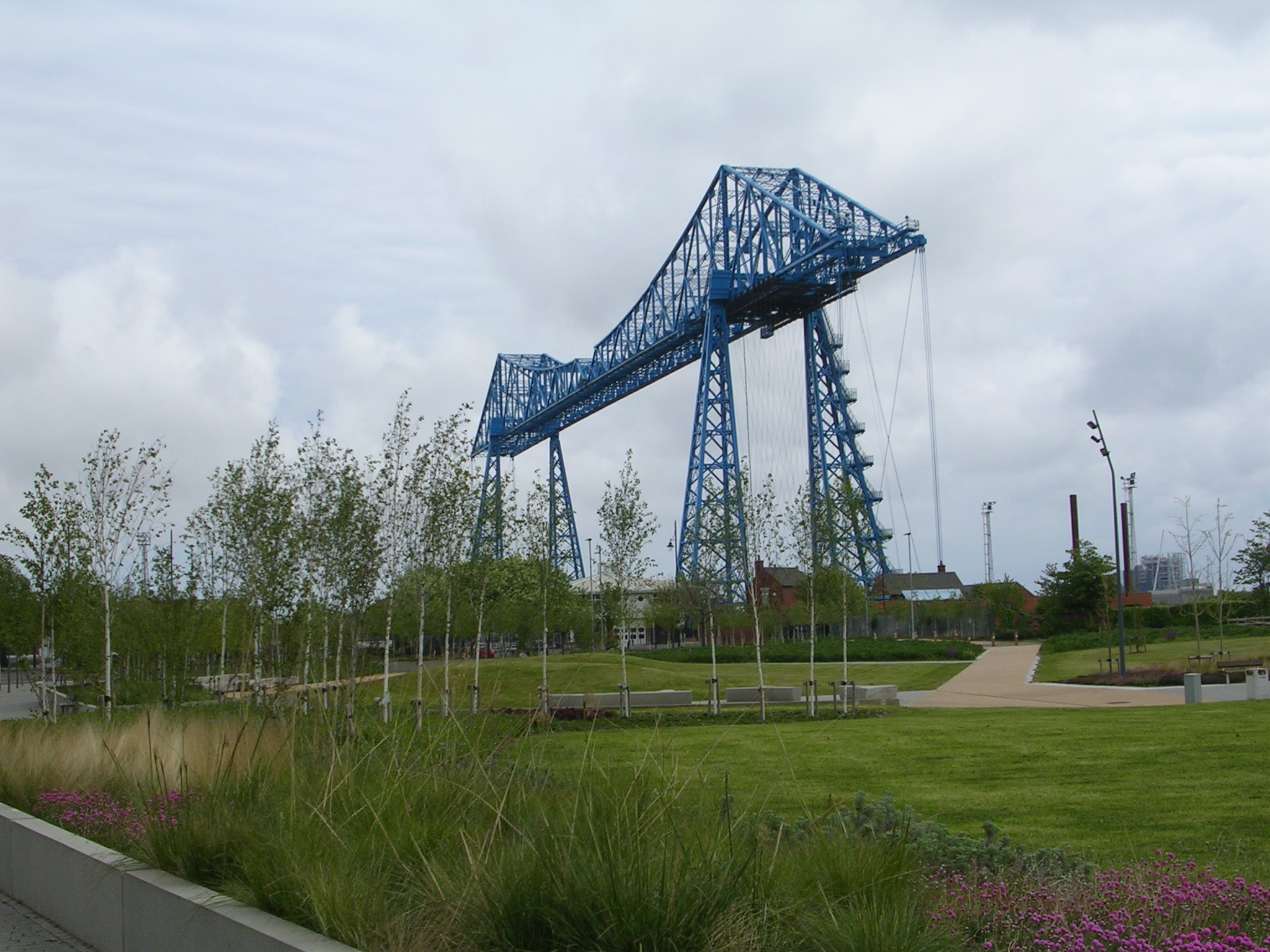
 As well as ferrying pedestrians and cars across the Tees, the bridge is now a tourist attraction and friendly and knowledgeable bridge staff and volunteers will take you on a tour which includes a lift up to the top and a walk across the bridge. In the past the upper walkway was a route across the river for those who couldn’t afford a ride in the gondola. Here’s a couple of views from the walkway:
As well as ferrying pedestrians and cars across the Tees, the bridge is now a tourist attraction and friendly and knowledgeable bridge staff and volunteers will take you on a tour which includes a lift up to the top and a walk across the bridge. In the past the upper walkway was a route across the river for those who couldn’t afford a ride in the gondola. Here’s a couple of views from the walkway: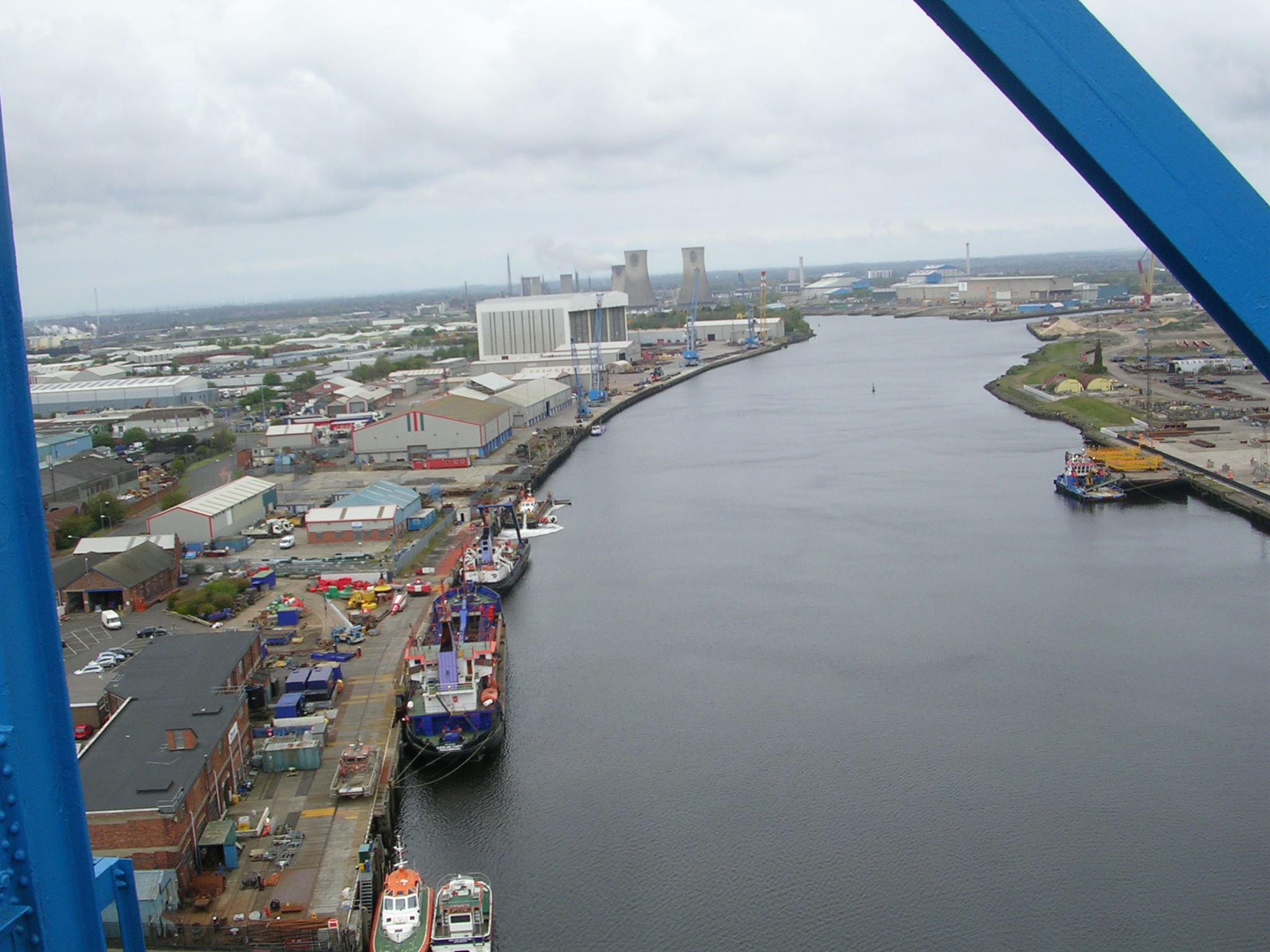
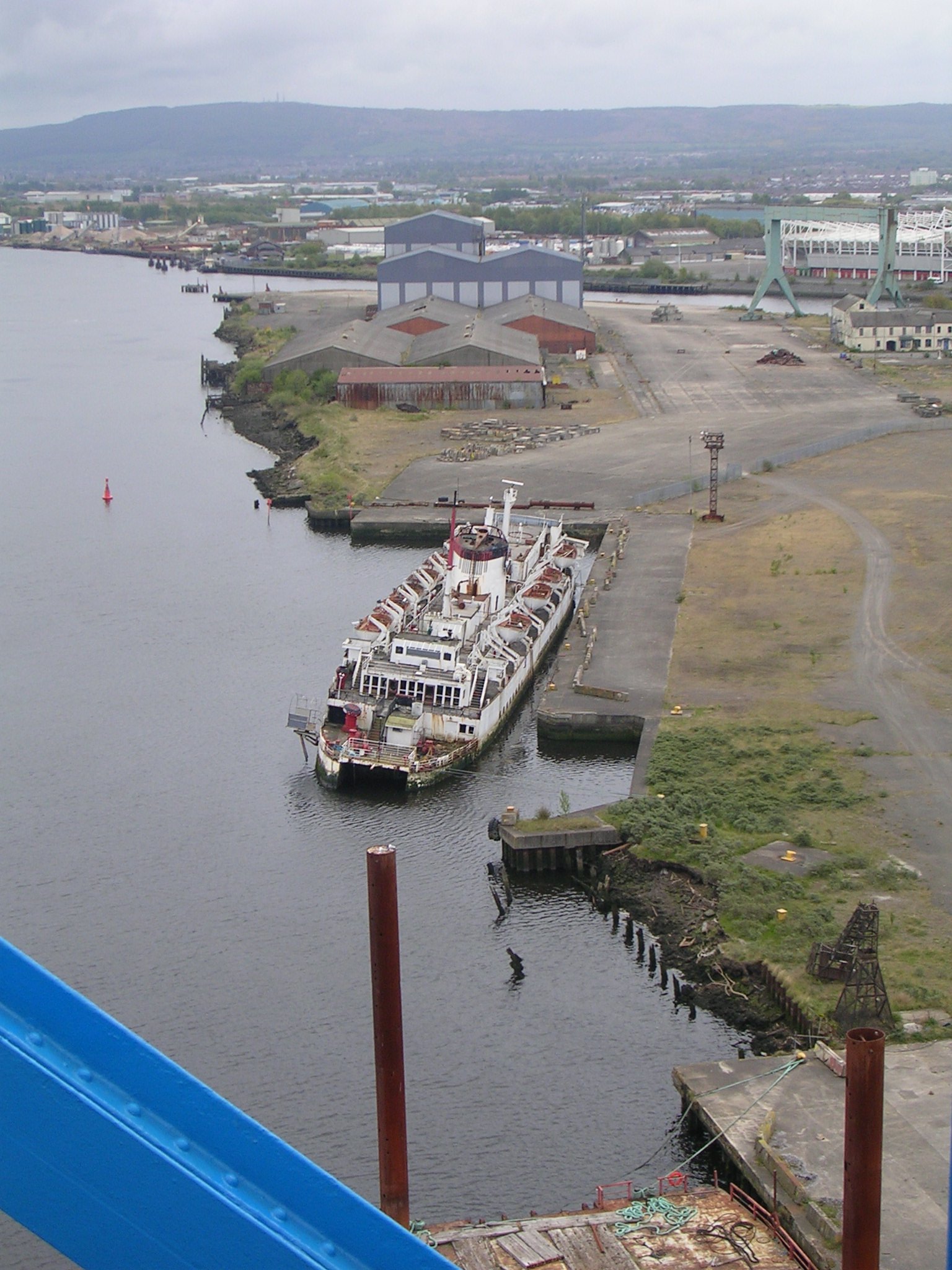
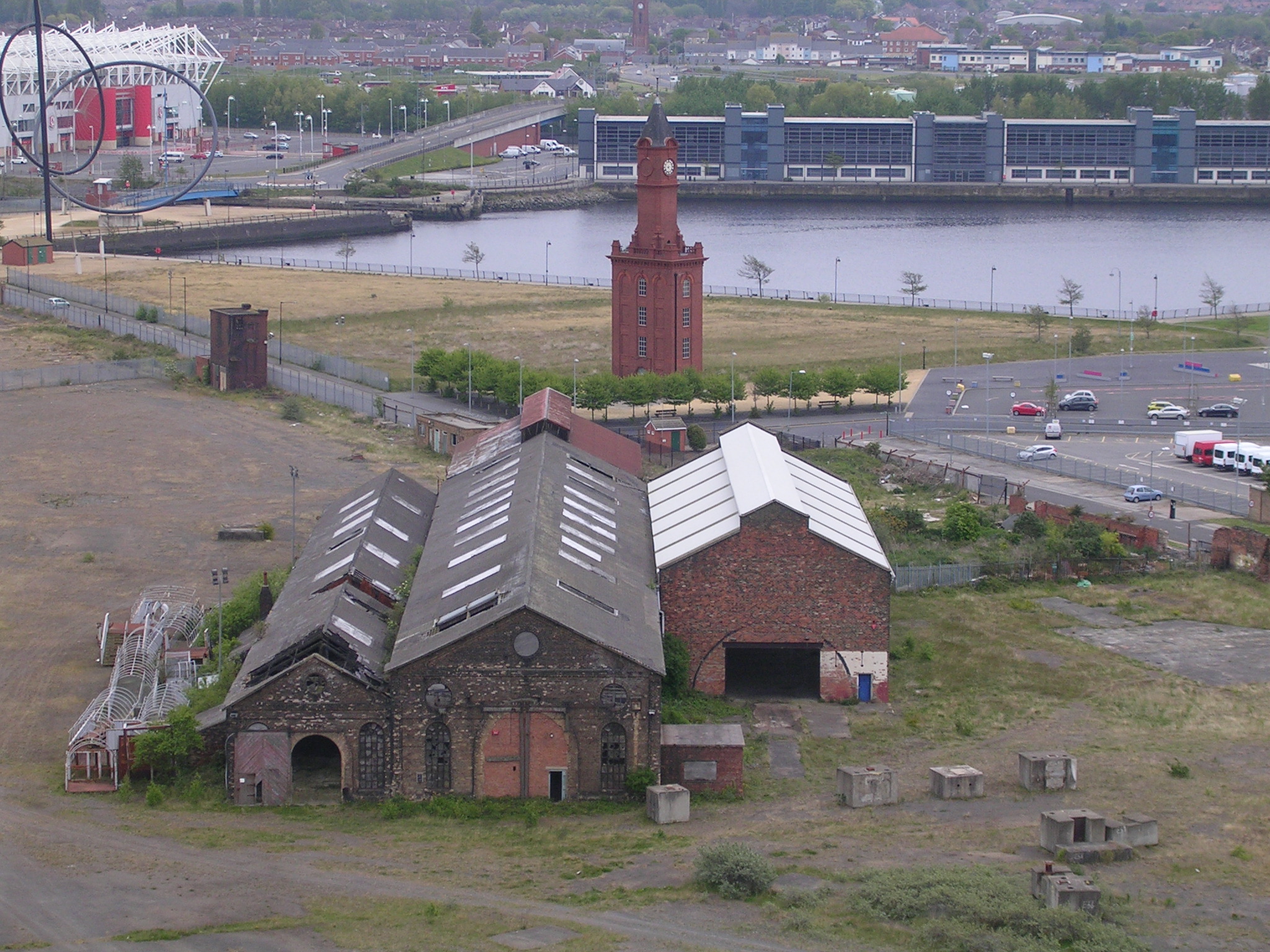 This dredger passed under my feet as we walked across:
This dredger passed under my feet as we walked across: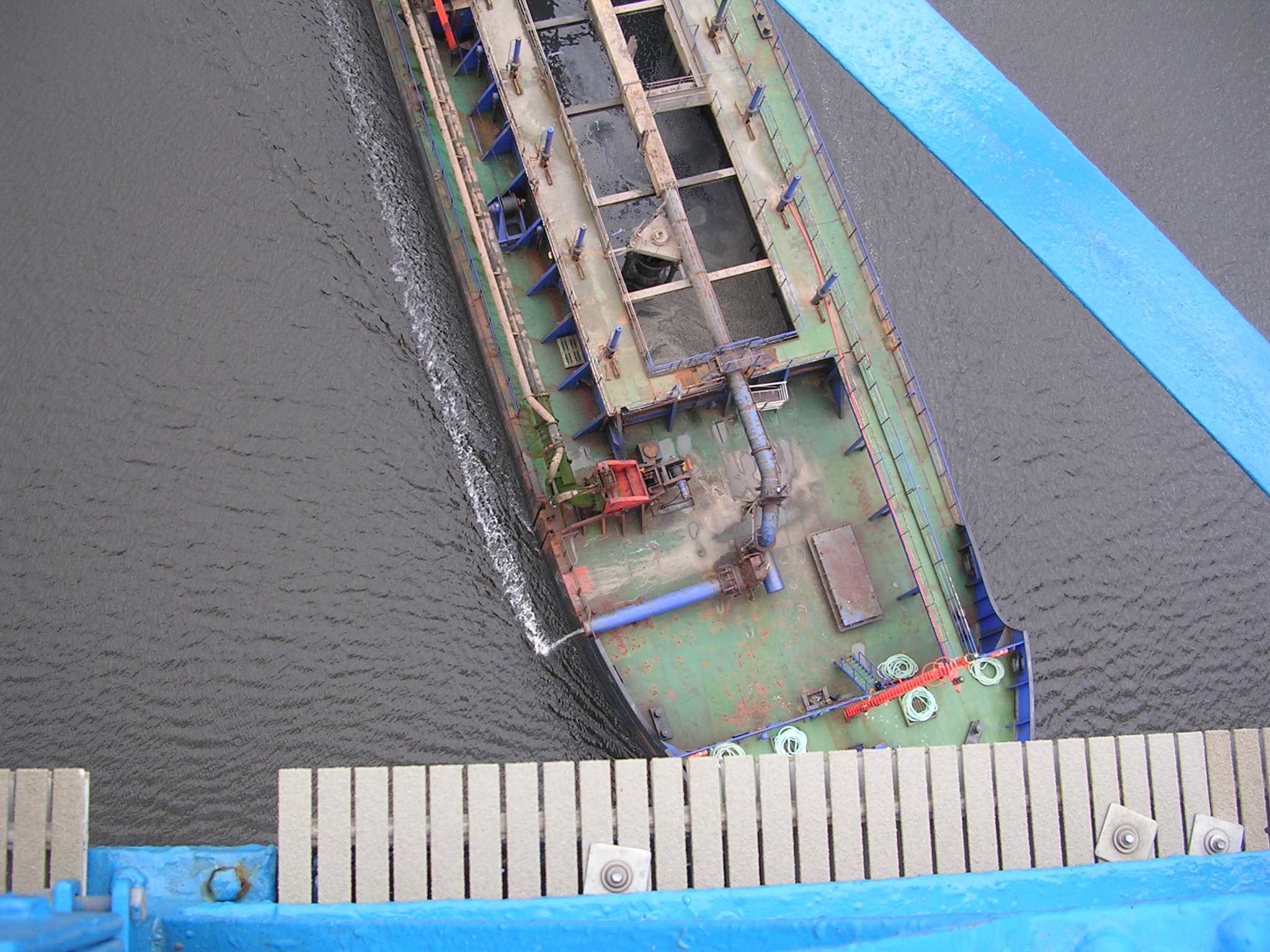 … and once it was clear the gondola came across:
… and once it was clear the gondola came across: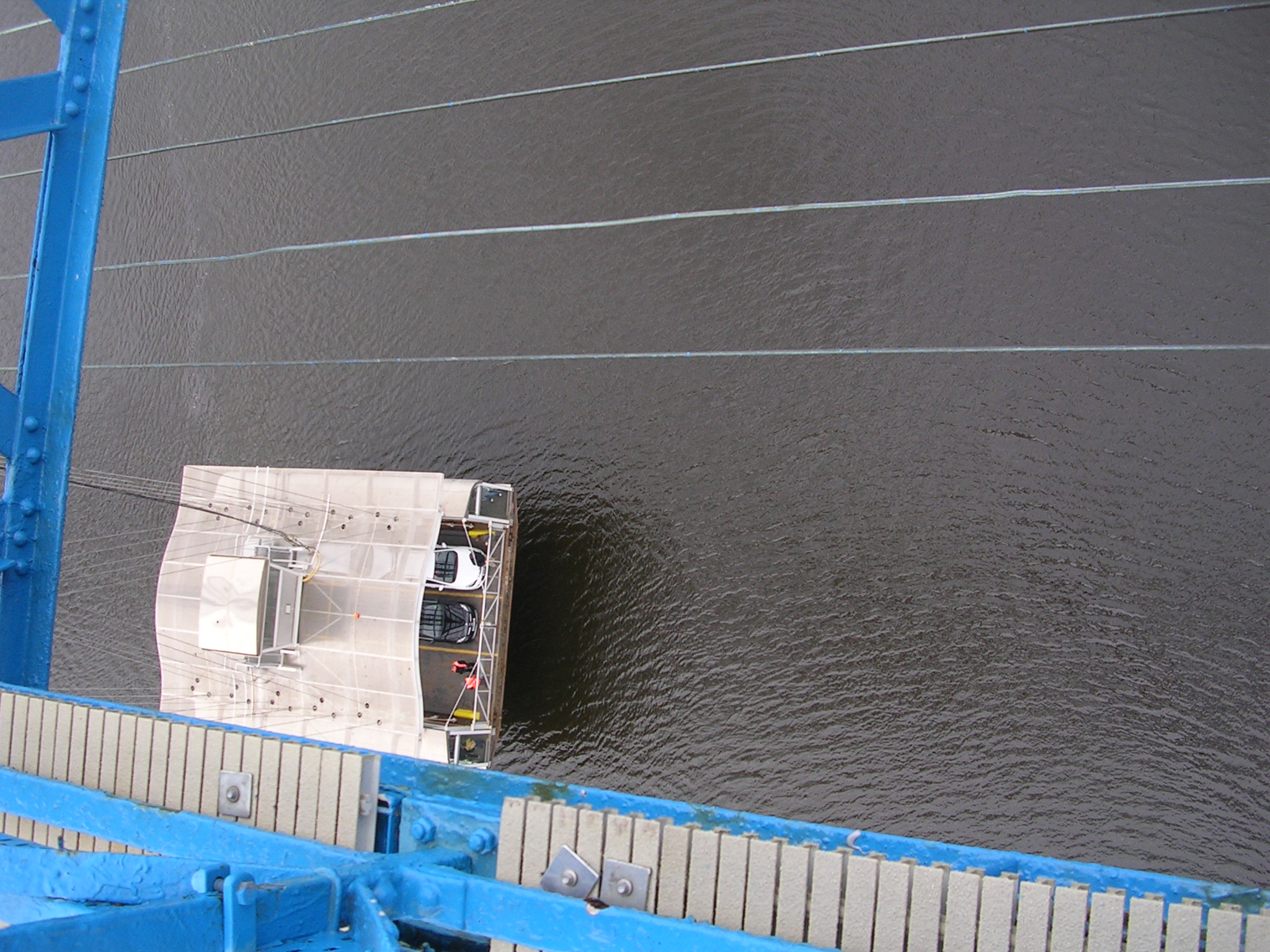 At the Port Clarence (northern) end, I could just see Shell’s Brent Delta oil platform which arrived last week on the largest ship in the world, for dismantling. (You may have seen it on the TV news.)
At the Port Clarence (northern) end, I could just see Shell’s Brent Delta oil platform which arrived last week on the largest ship in the world, for dismantling. (You may have seen it on the TV news.)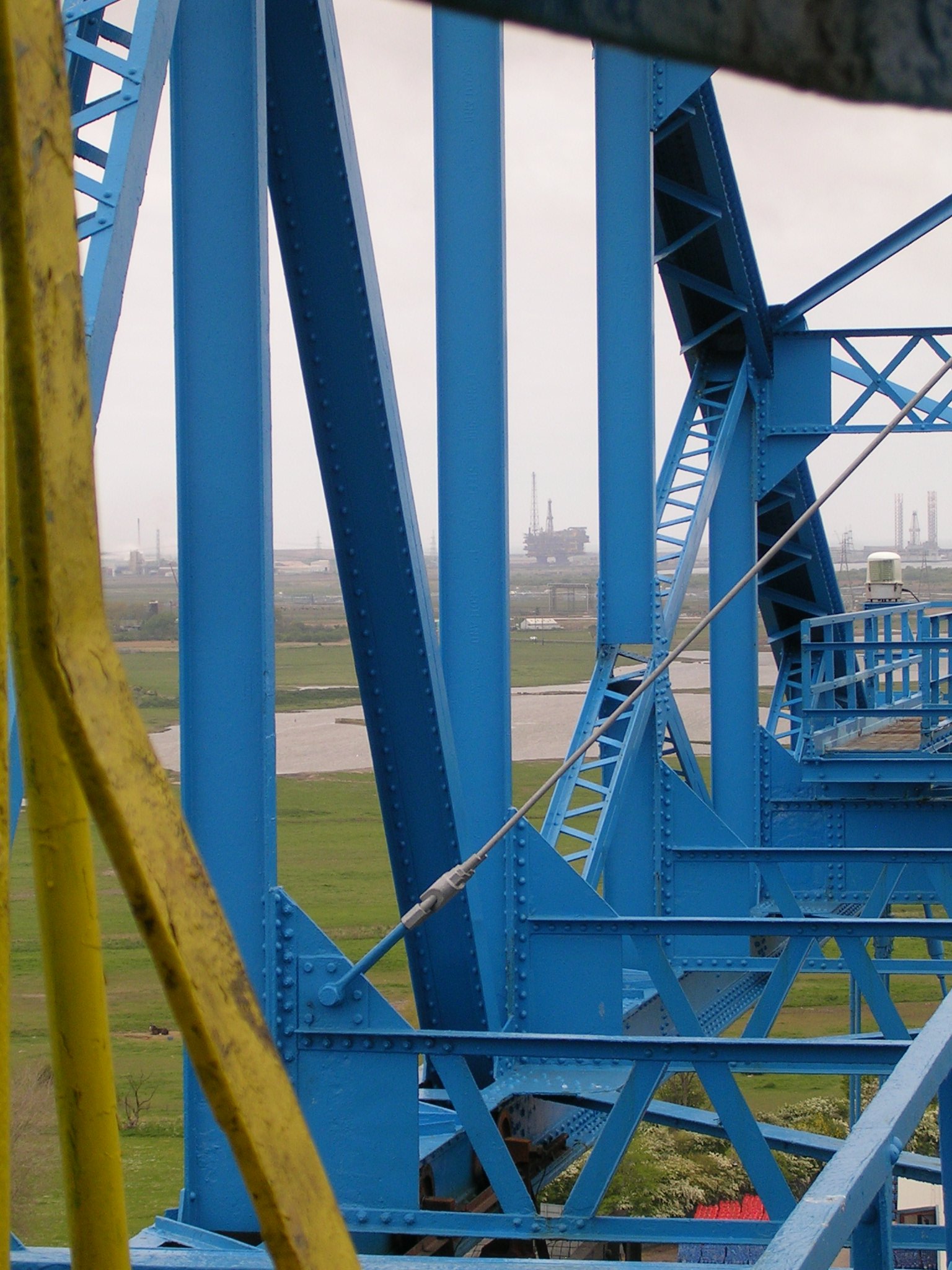 Back on the ground it was time to go for a ride. The gondola is suspended on thirty cables, and runs on sixty wheels at the top. I got to press the button on the little remote control that sent us across the river, the biggest thing I’ve ever driven, I think!
Back on the ground it was time to go for a ride. The gondola is suspended on thirty cables, and runs on sixty wheels at the top. I got to press the button on the little remote control that sent us across the river, the biggest thing I’ve ever driven, I think!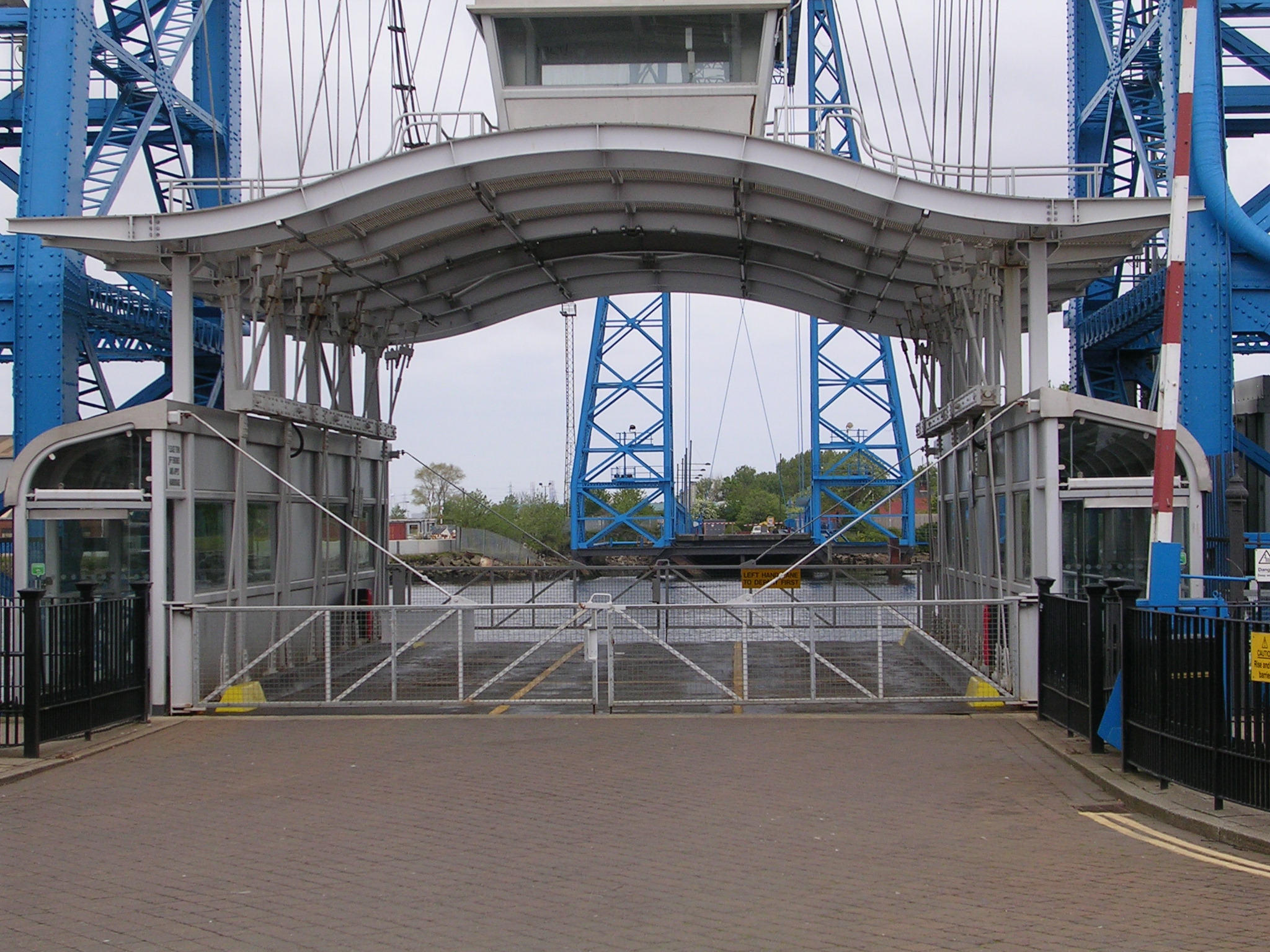 The winding house across the road provides the power to move the gondola.
The winding house across the road provides the power to move the gondola.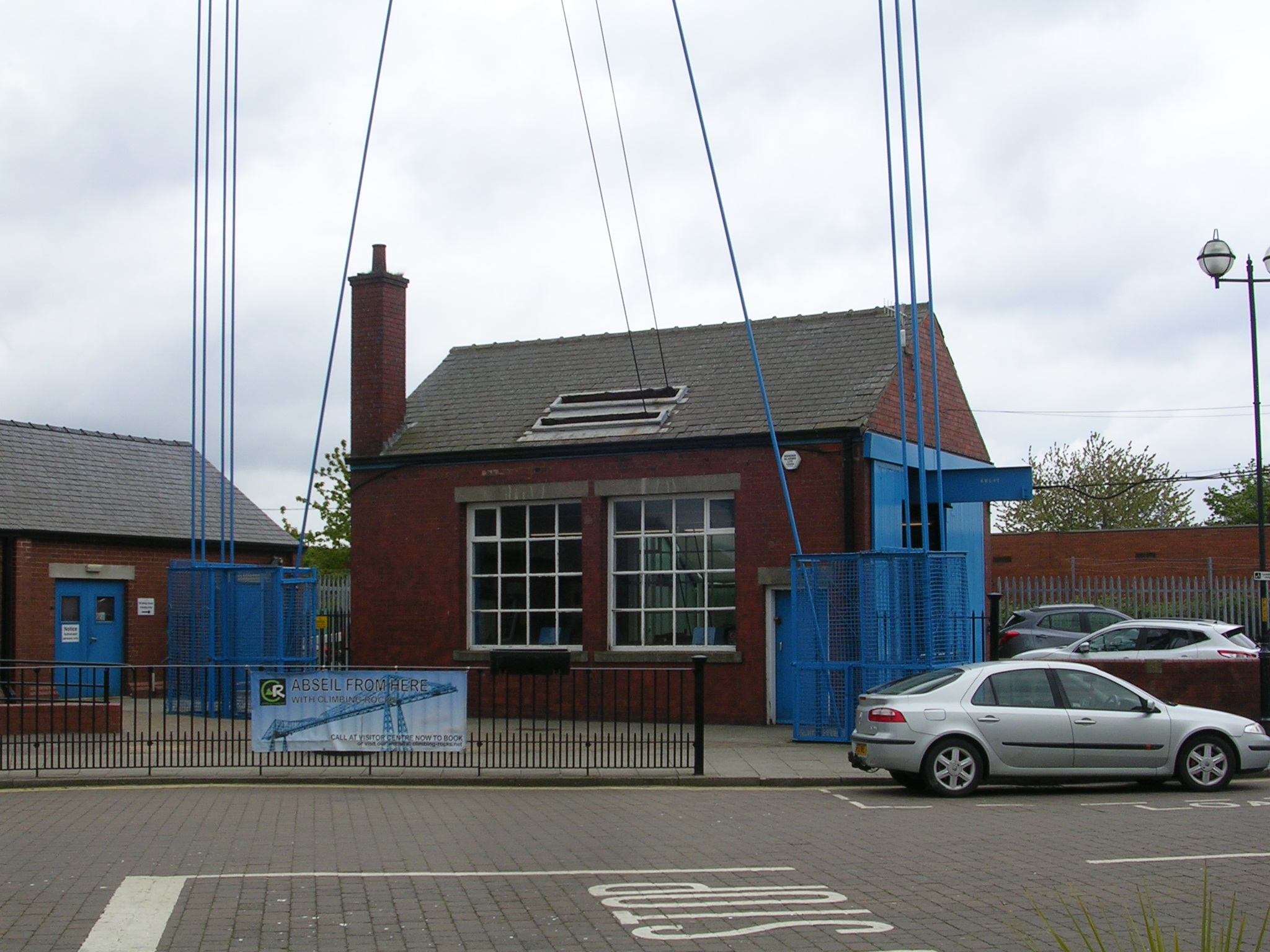
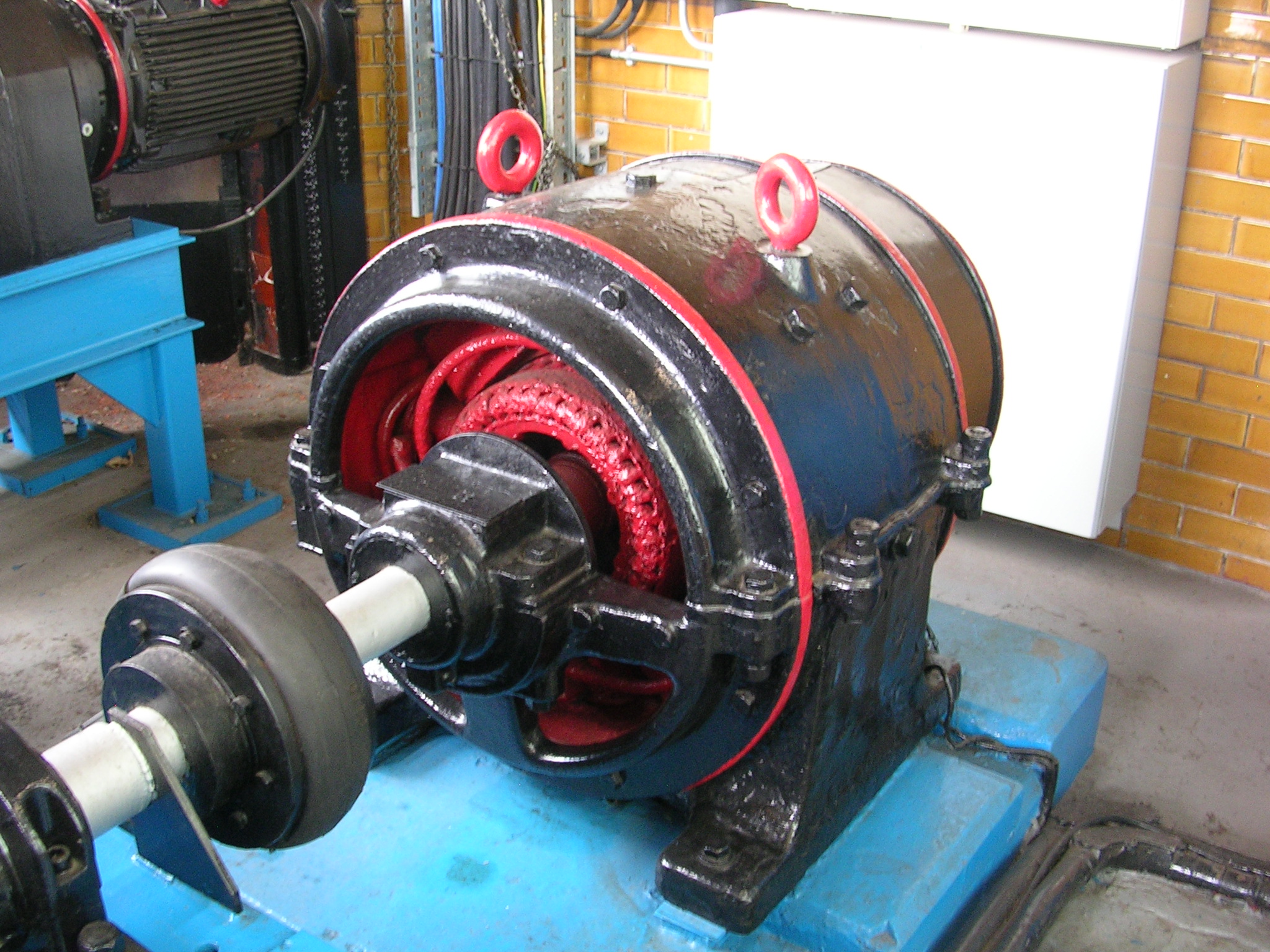 Original (no longer used) motor on the right, new one on the left, cable drum in the middle:
Original (no longer used) motor on the right, new one on the left, cable drum in the middle: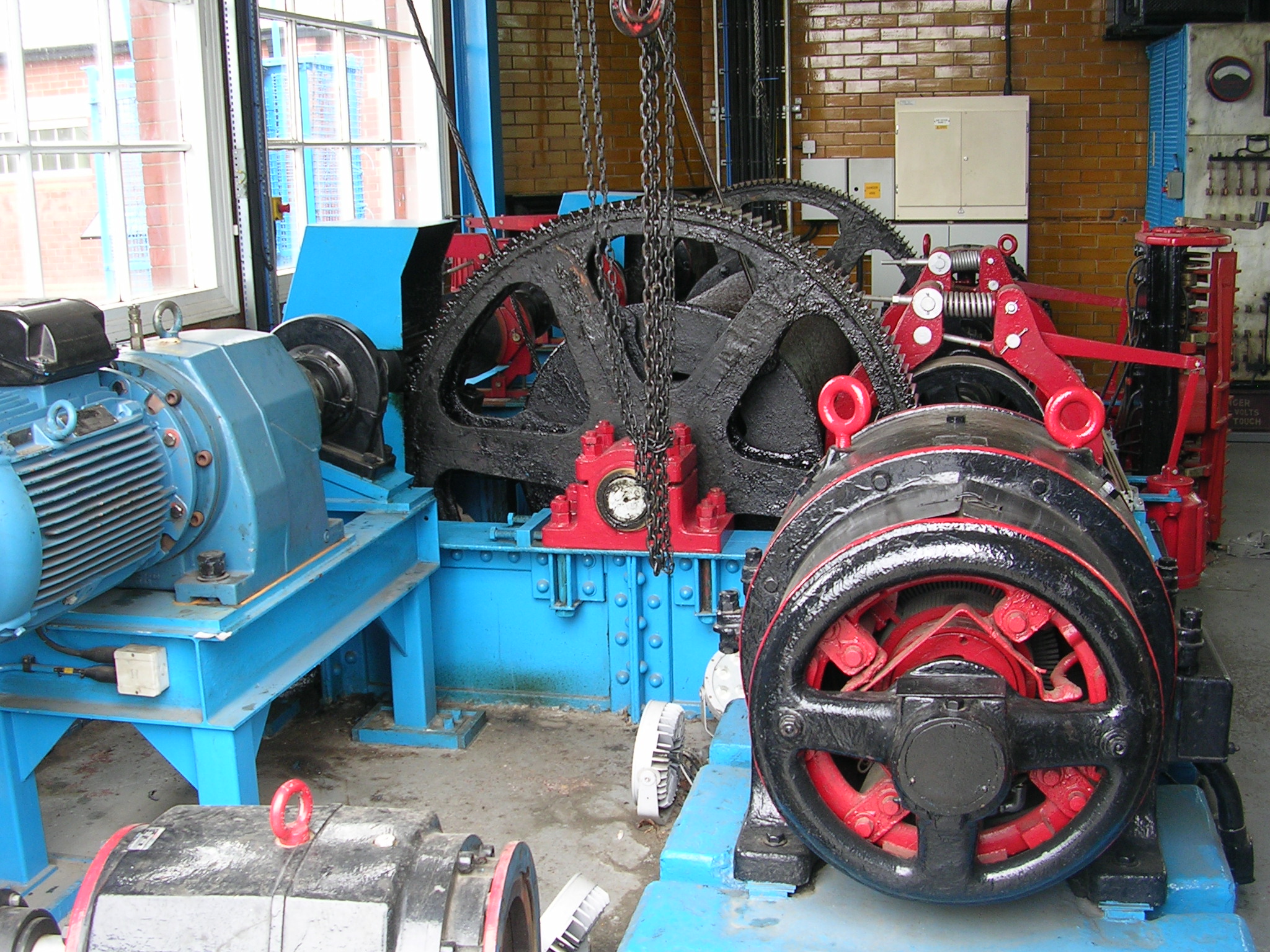 The original control panel:
The original control panel: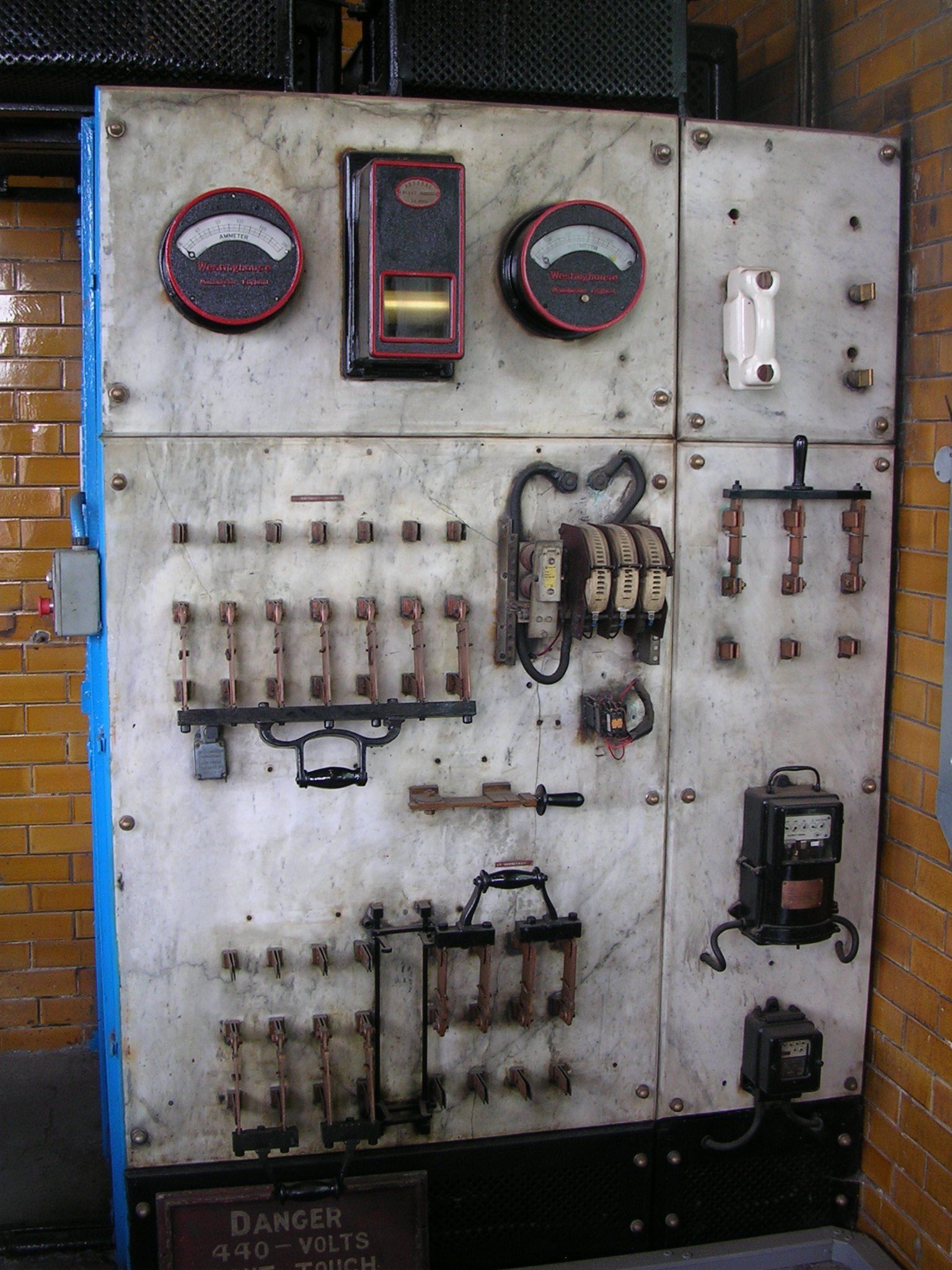 Having completed the excellent tour I took a stroll through the industrial wastelands downriver to see if I could find a good angle to photograph the bridge. I couldn’t:
Having completed the excellent tour I took a stroll through the industrial wastelands downriver to see if I could find a good angle to photograph the bridge. I couldn’t: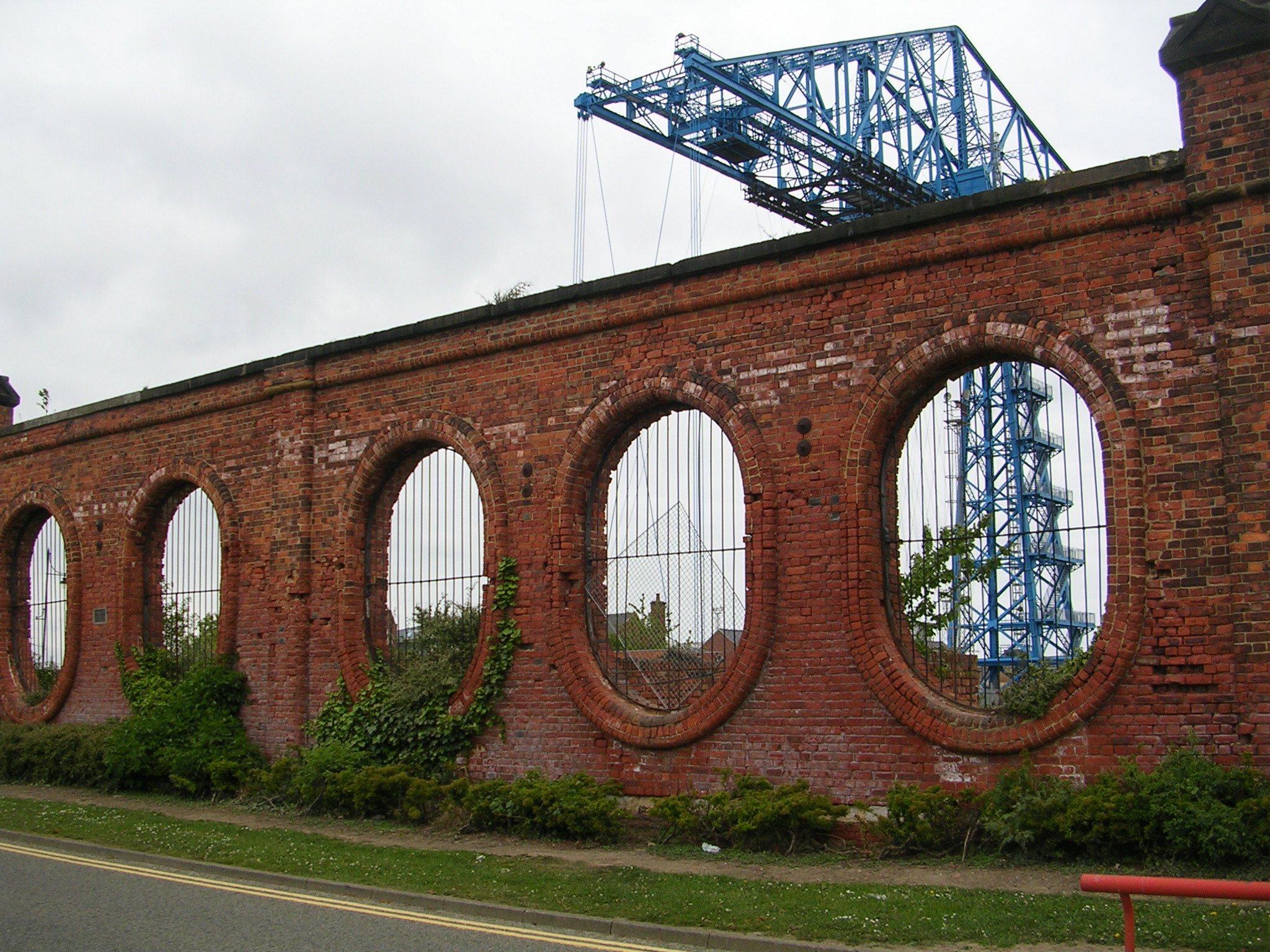 Note the gondola in the process of crossing in this last picture:
Note the gondola in the process of crossing in this last picture: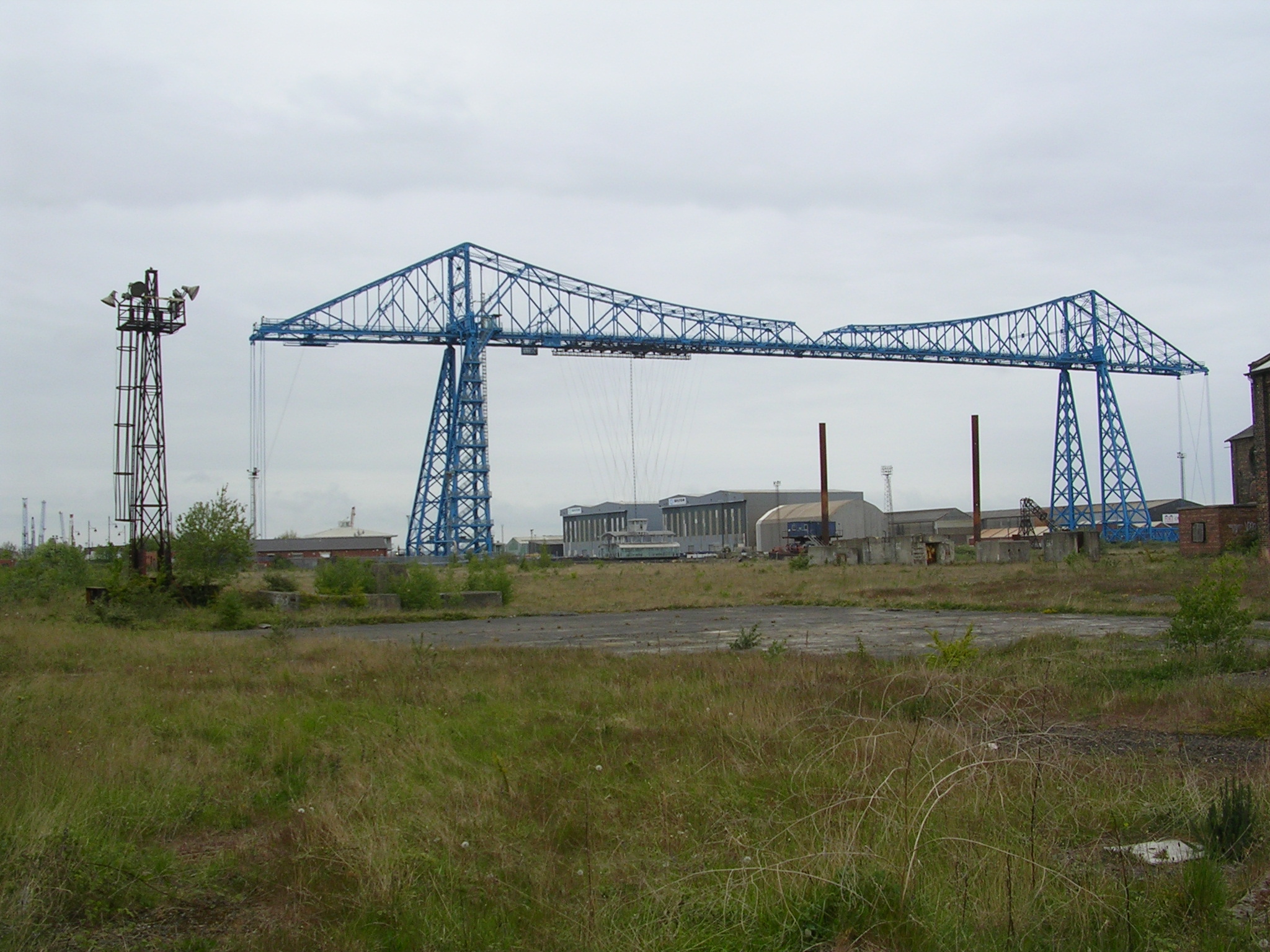 Middlesbrough itself has a number of interesting buildings, here’s a small selection starting with the former National Provincial Bank:
Middlesbrough itself has a number of interesting buildings, here’s a small selection starting with the former National Provincial Bank: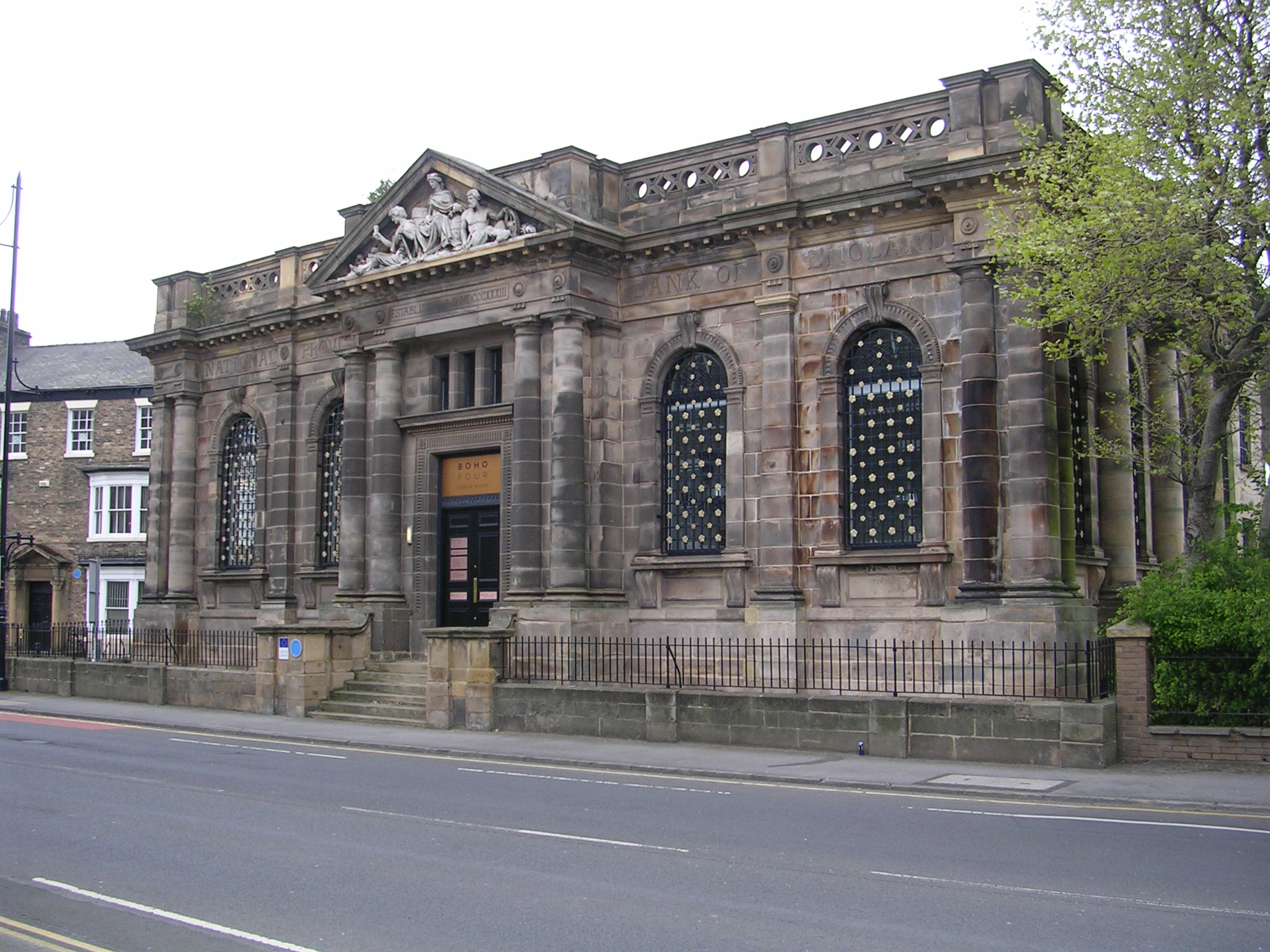
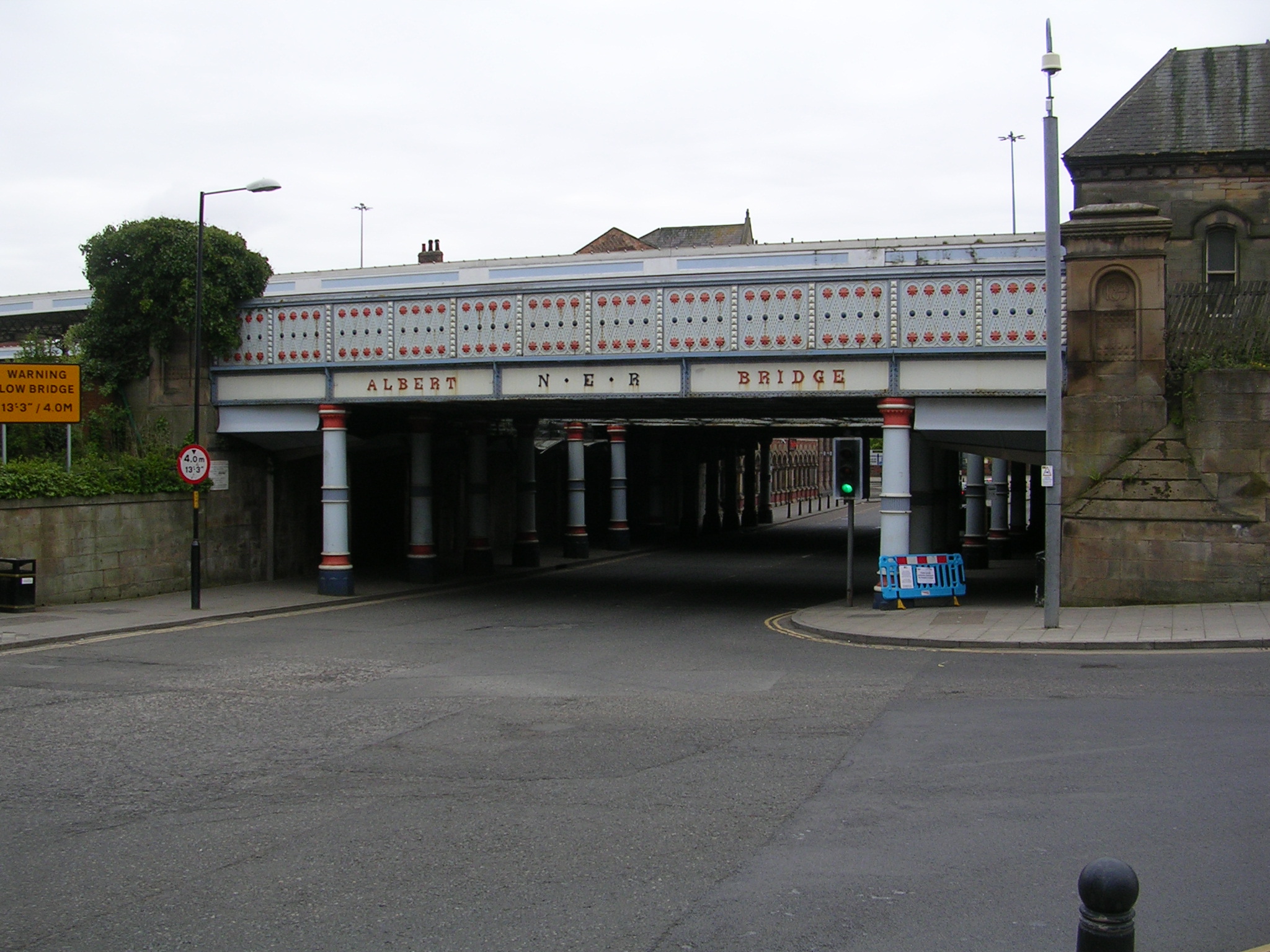
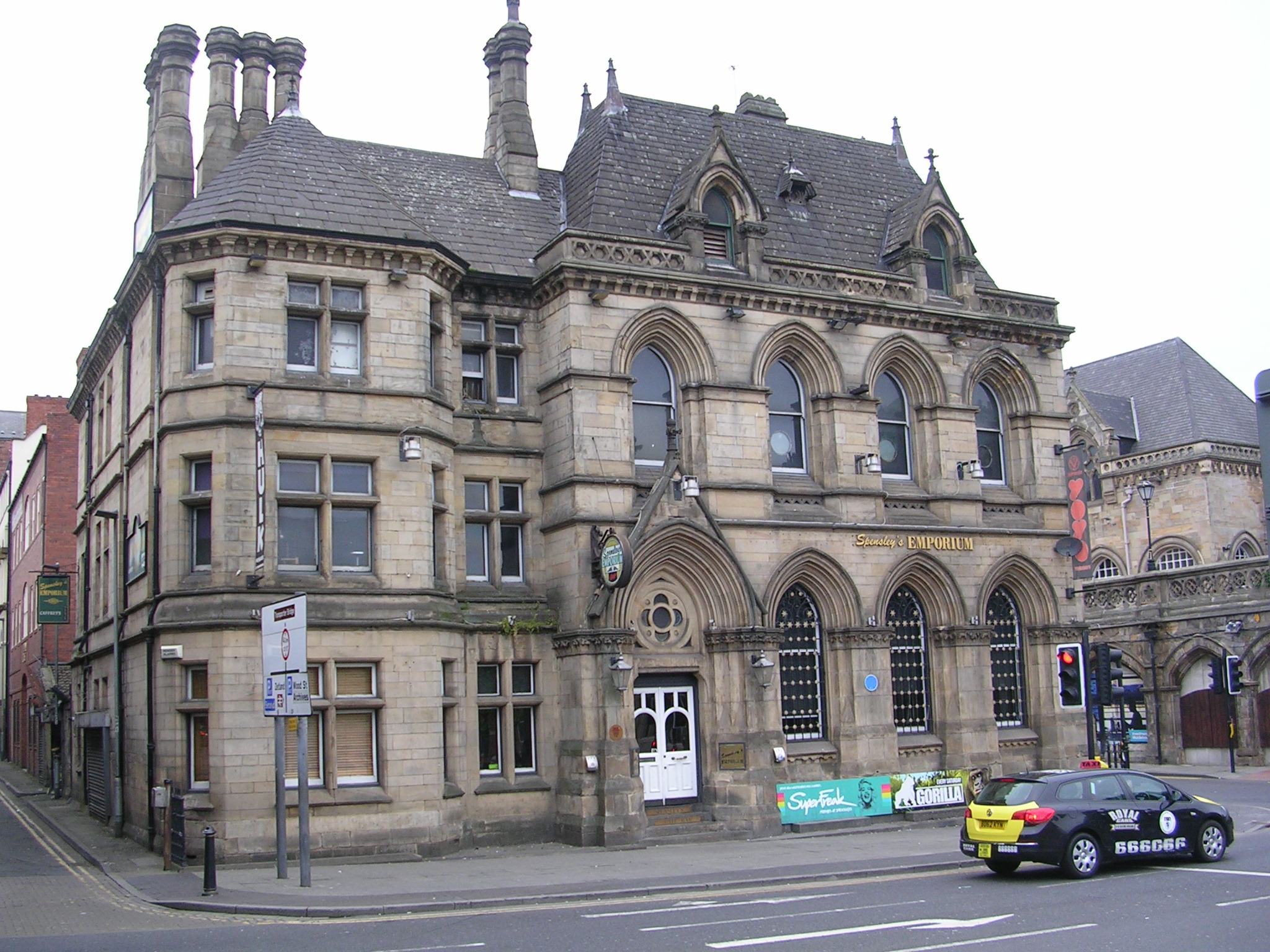
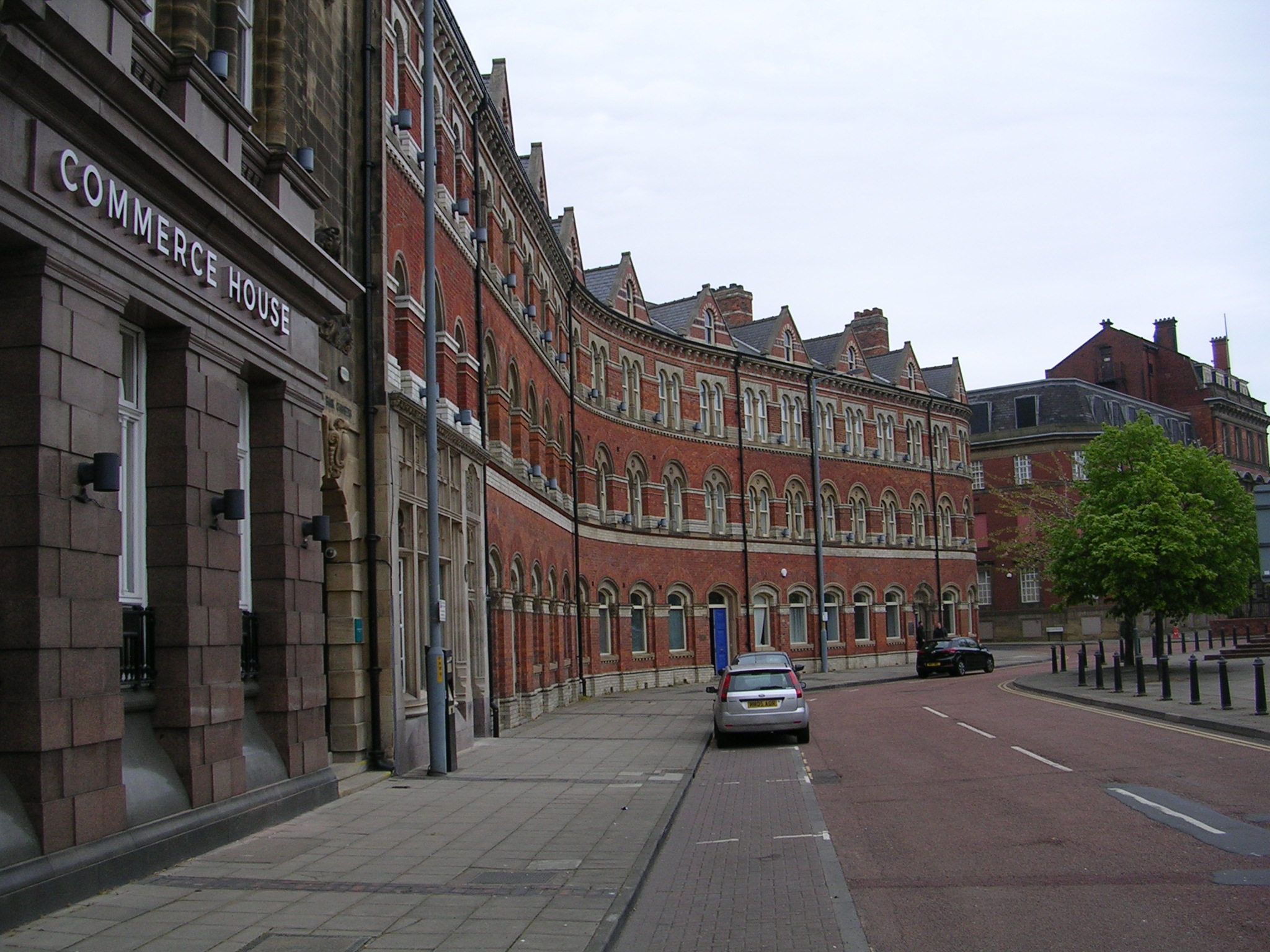 The impressive town hall is undergoing refurbishment:
The impressive town hall is undergoing refurbishment: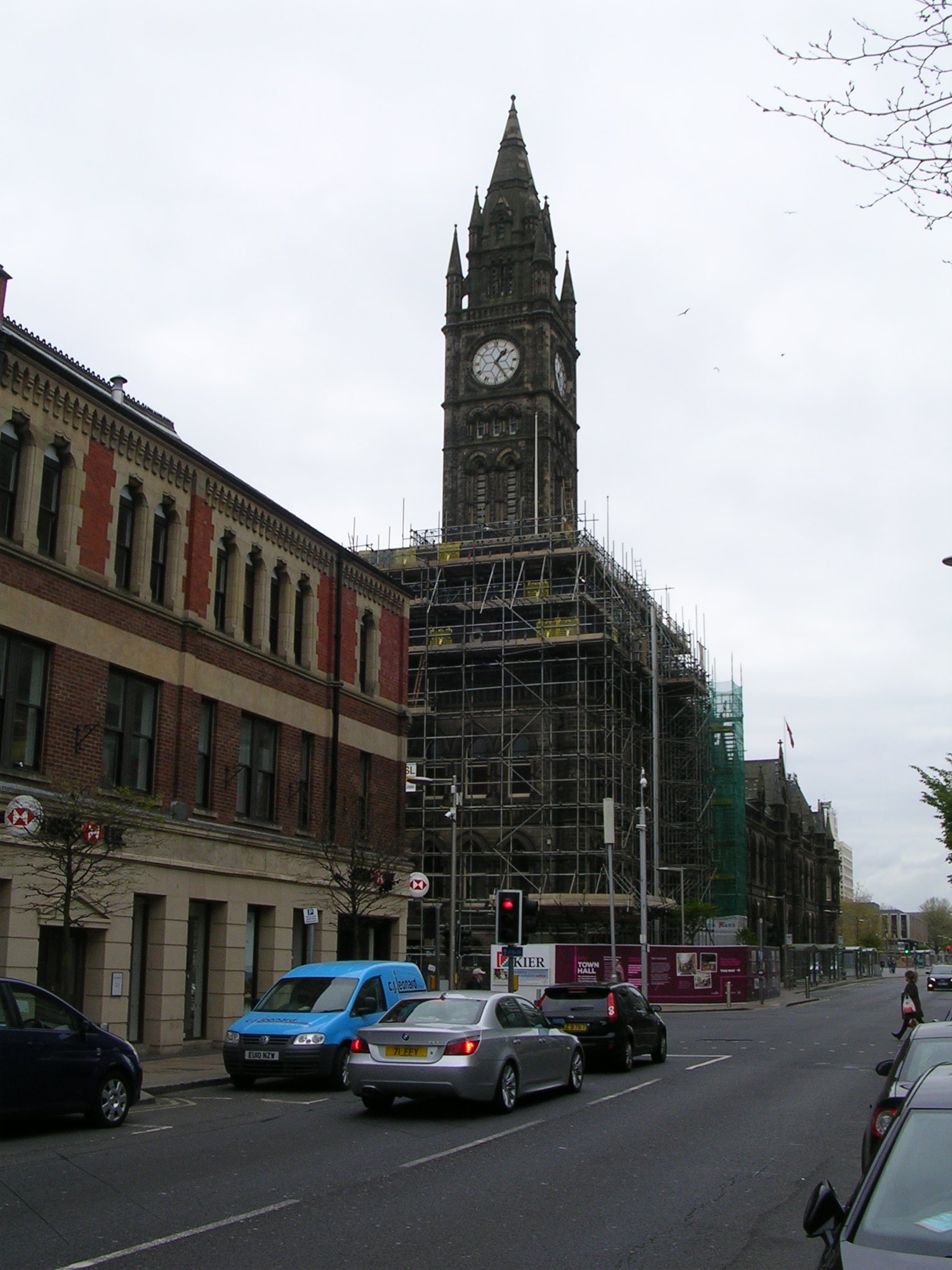 Finally, a shot from the train of another large bridge. The Newport lifting bridge opened in 1934 a little upstream from the transporter, and took some of its traffic away. I believe it no longer lifts.
Finally, a shot from the train of another large bridge. The Newport lifting bridge opened in 1934 a little upstream from the transporter, and took some of its traffic away. I believe it no longer lifts.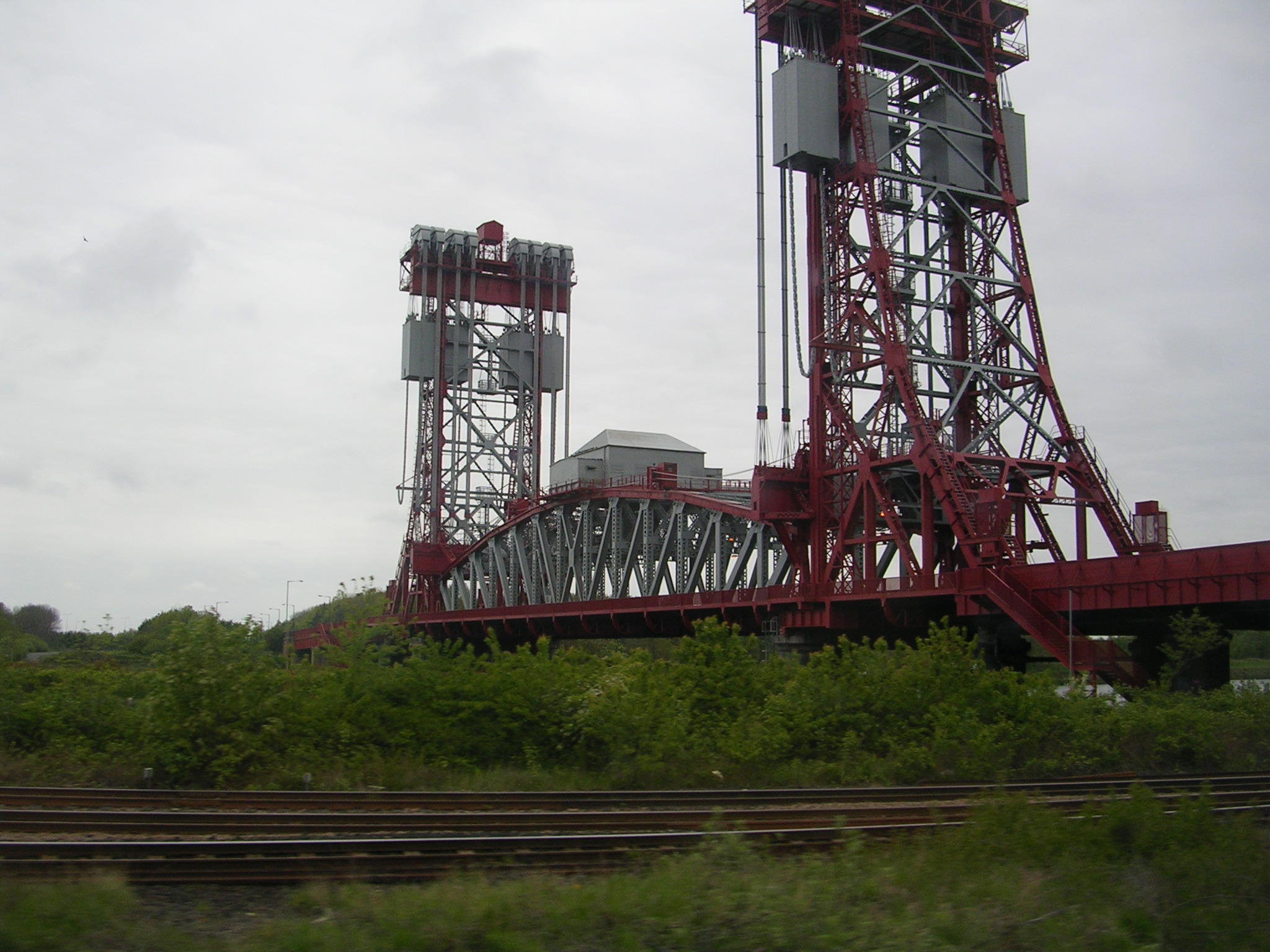
All posts by wielanpj
Kempton Park Waterworks
Located in south west London, this museum features the largest working triple-expansion steam engine in the world, so when I discovered they were having a steaming day while I was in London, I had to visit.
The building was constructed in 1928 and housed two large triple-expansion steam engines which were used to pump the water uphill to a reservoir at Cricklewood: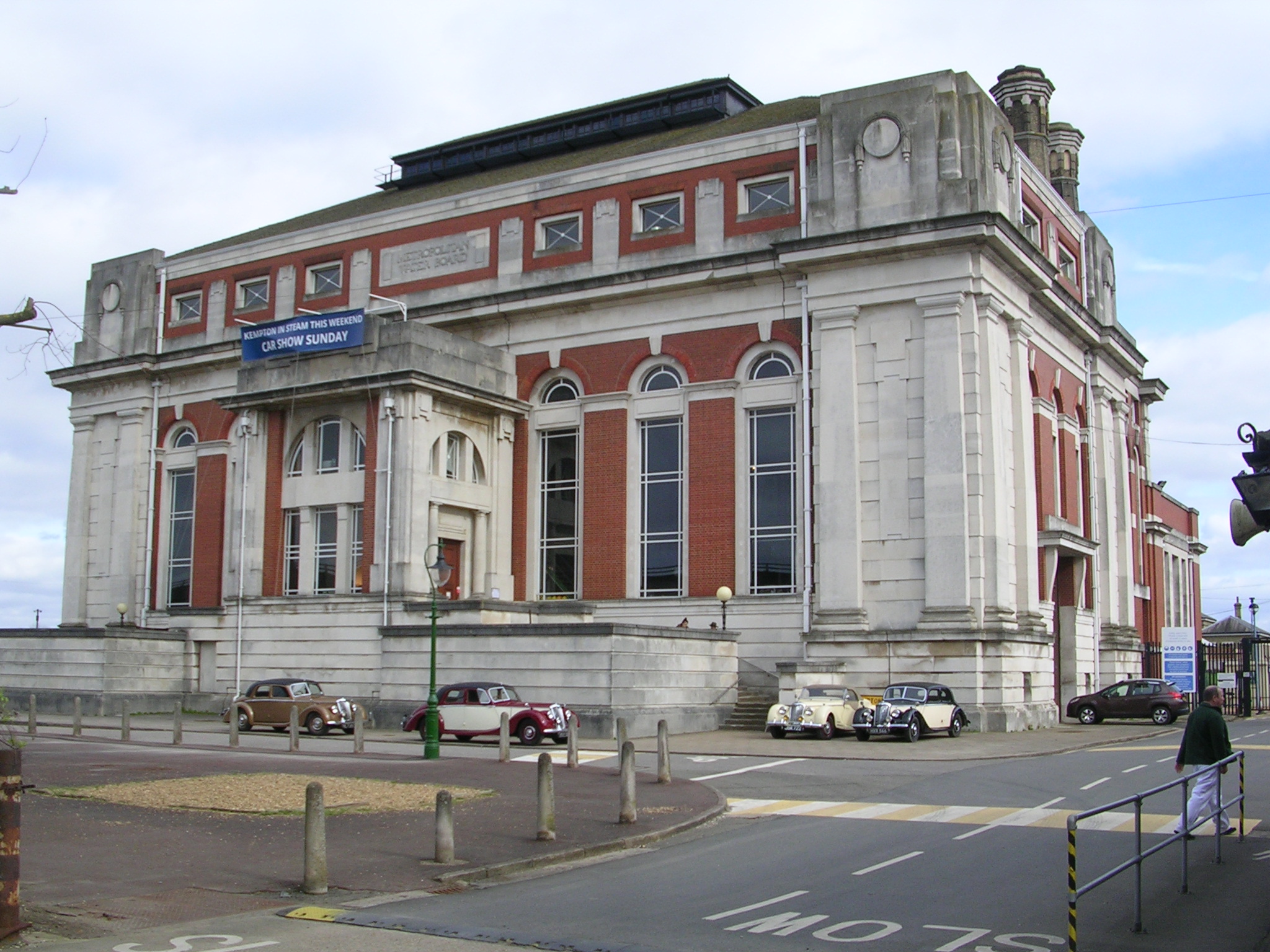 The engines were shut down in 1980 and electric pumps on the site still send the water to Cricklewood. One of the engines has been restored to working order, while the other one is available for tours. This is the working one, you can get an idea of the scale from the people on the ground level. This picture was taken from the top walkway of the other engine:
The engines were shut down in 1980 and electric pumps on the site still send the water to Cricklewood. One of the engines has been restored to working order, while the other one is available for tours. This is the working one, you can get an idea of the scale from the people on the ground level. This picture was taken from the top walkway of the other engine: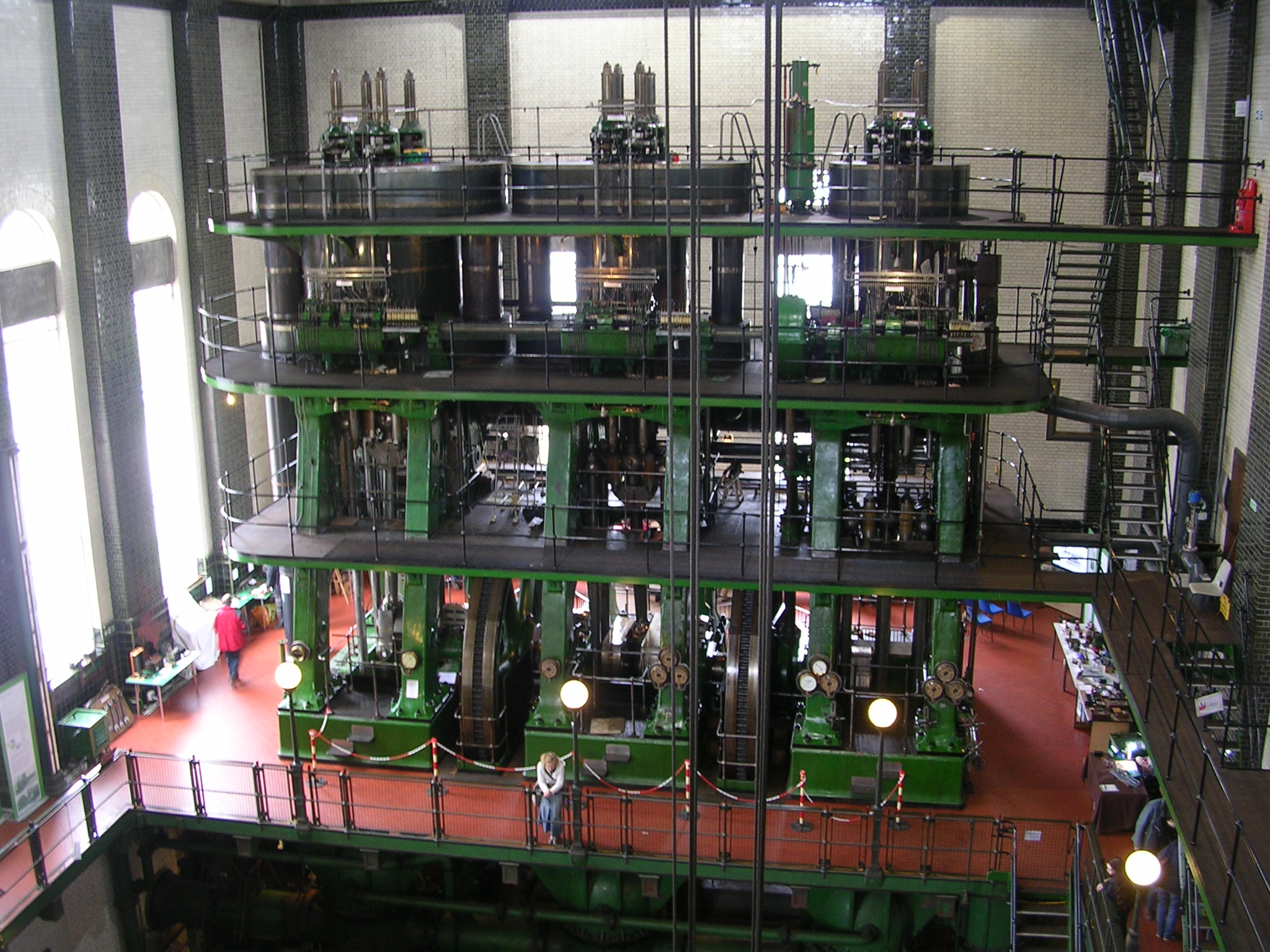 Round the back of the working engine this is one of two “barring engines” used for starting:
Round the back of the working engine this is one of two “barring engines” used for starting: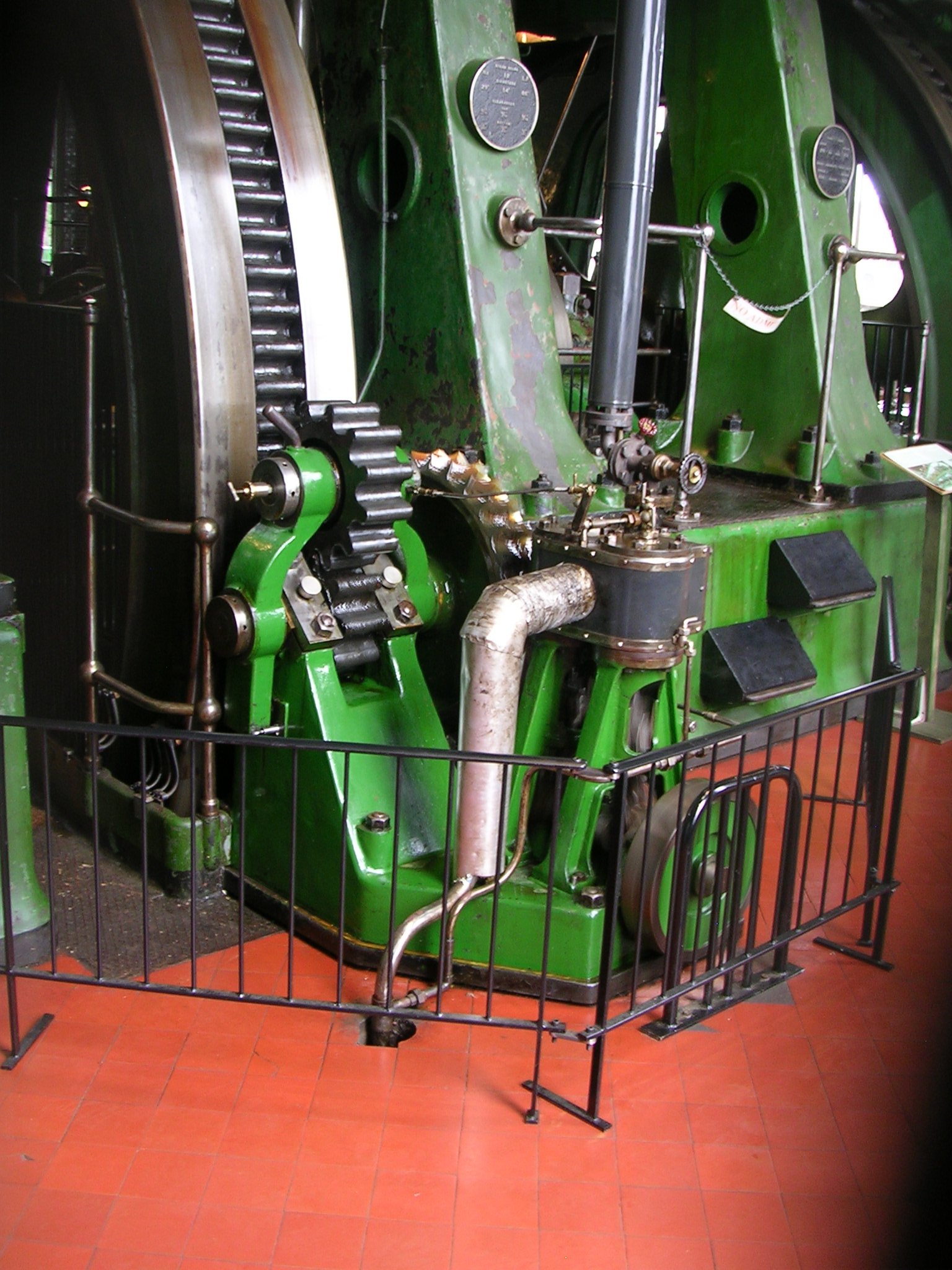 In the 1930s when the time came to expand the capacity, instead of adding the planned third engine in the space between the others, two more modern steam turbines were installed. Surprisingly, these could pump about the same amount of water as the big engines:
In the 1930s when the time came to expand the capacity, instead of adding the planned third engine in the space between the others, two more modern steam turbines were installed. Surprisingly, these could pump about the same amount of water as the big engines: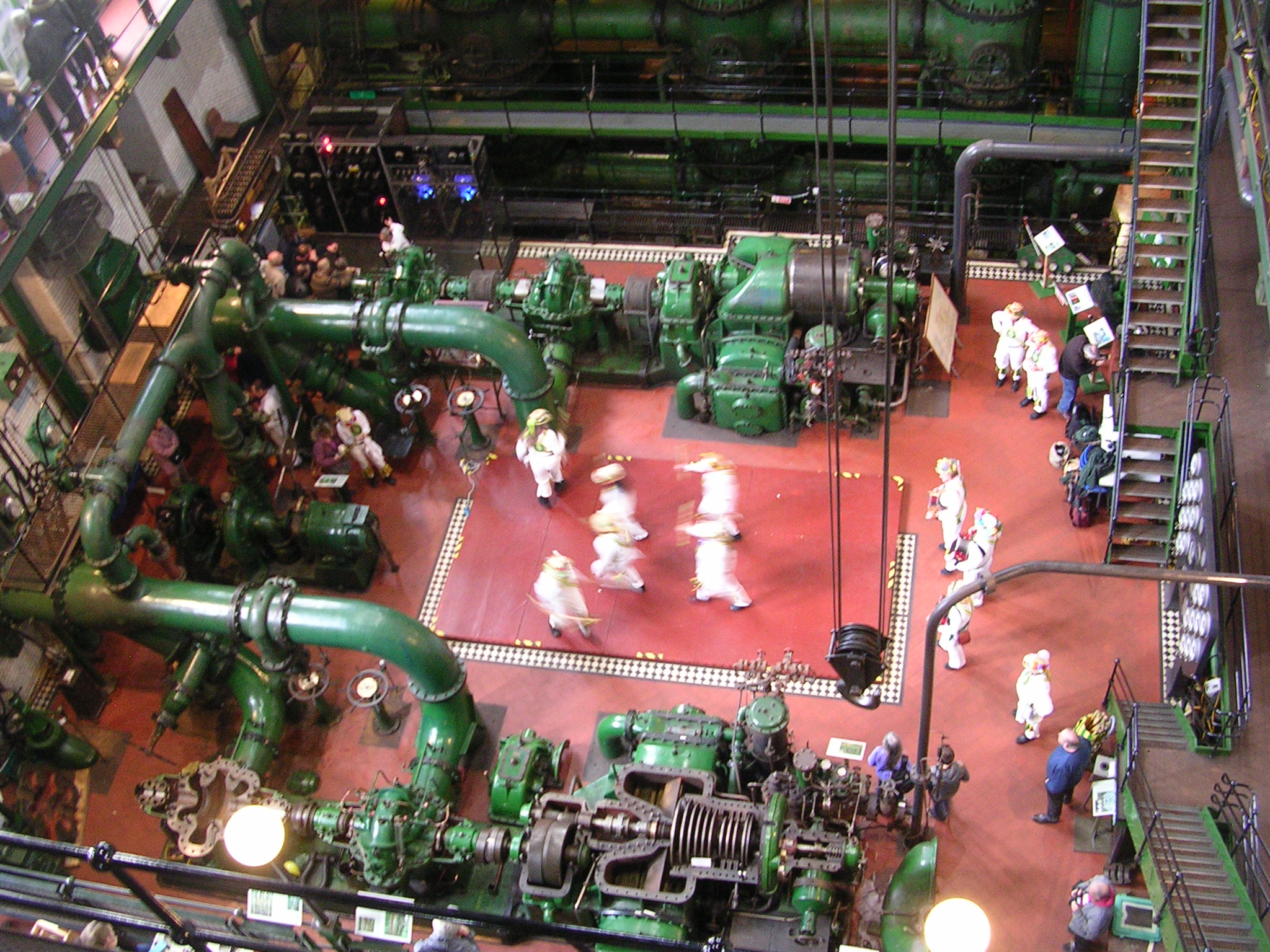 (Yes, they had visiting Morris Men!)
(Yes, they had visiting Morris Men!)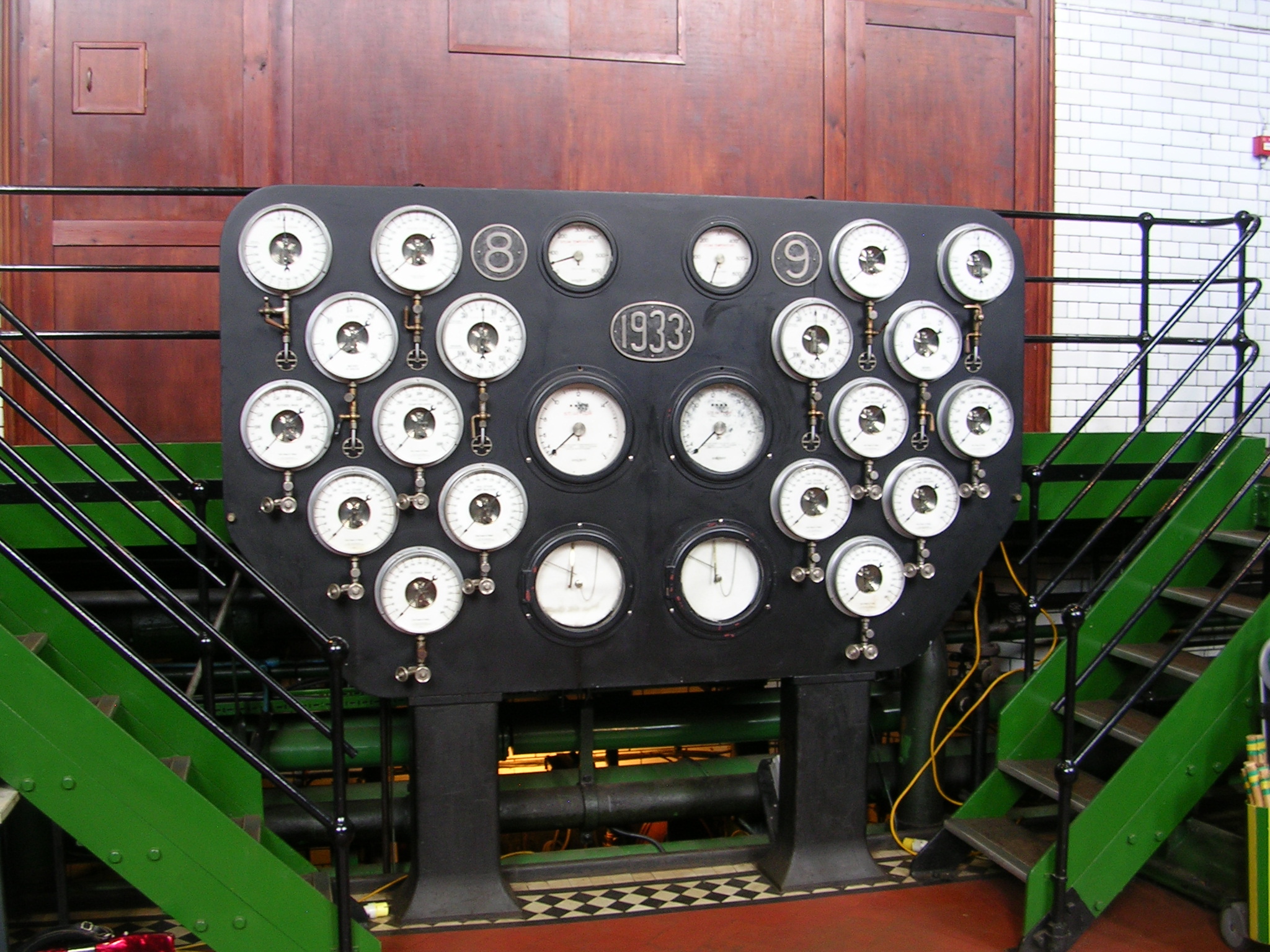 The site generated its own electricity, and still has a couple of mercury arc rectifiers in operation. The flickering glow of these holds a strange fascination:
The site generated its own electricity, and still has a couple of mercury arc rectifiers in operation. The flickering glow of these holds a strange fascination: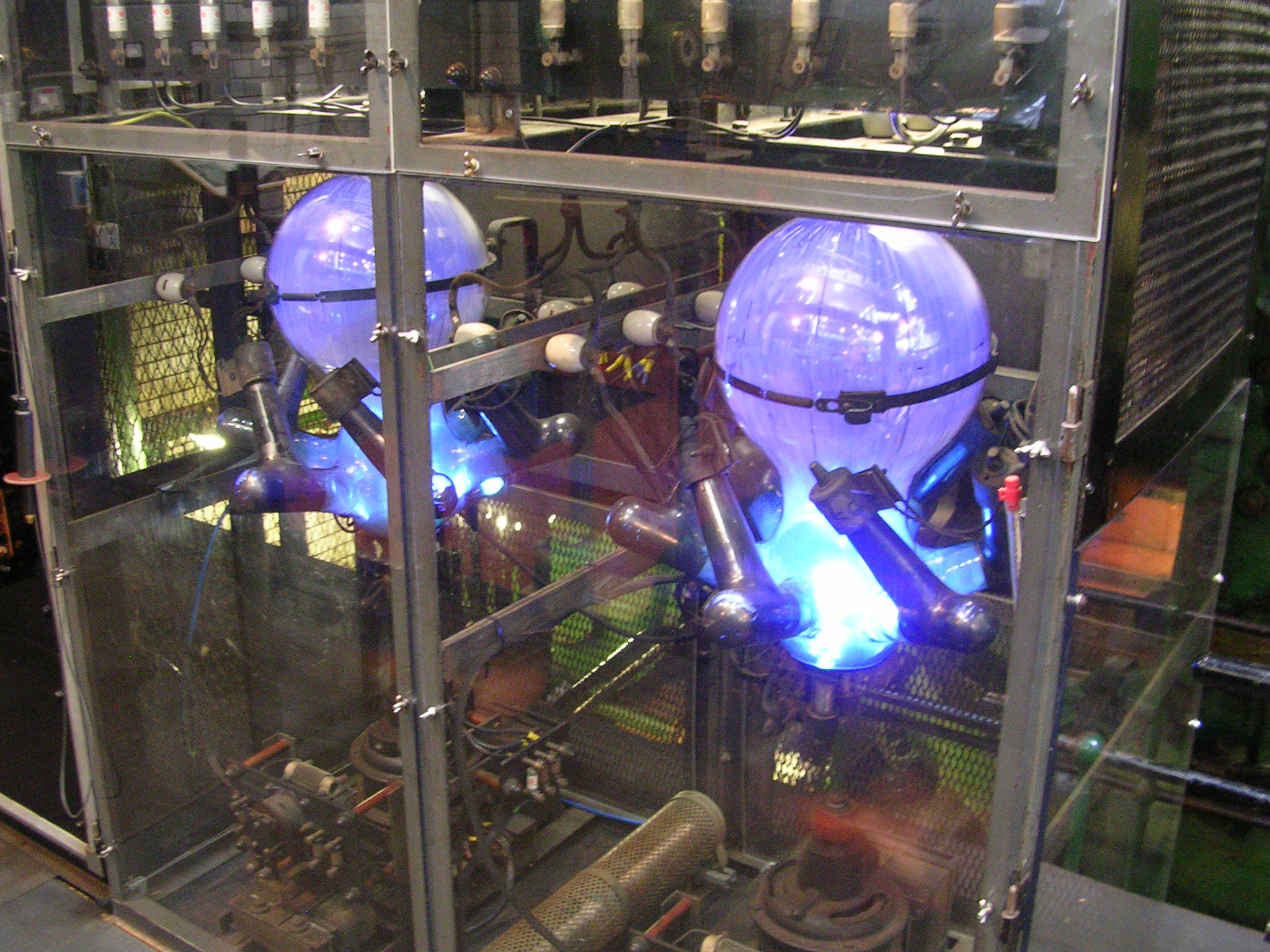 I must say I had expected a fairly quick in and out, half an hour should easily cover everything, but the guided tour of the non-working engine took well over an hour, all of it fascinating.
I must say I had expected a fairly quick in and out, half an hour should easily cover everything, but the guided tour of the non-working engine took well over an hour, all of it fascinating.
One fact I learned from the tour guide is that the two engines are mirror images of each other. This must have meant that when the factory made a casting for a part, instead of making two the same – one for each engine – they had to make mirror images. The only reason I can think of is it made the engine hall more aesthetically pleasing. Part of the spare-no-expense attitude of the time perhaps; apparently the opening ceremony was catered by Fortnum & Mason. I wonder what they would have done for symmetry if the planned third engine had been installed in the middle.
A final picture, of the crest and at the bottom the gauges that still show the flow of water to Cricklewood. The “hoops” displayed on the wall below the crest are spare piston rings from the three sizes of cylinder in each engine: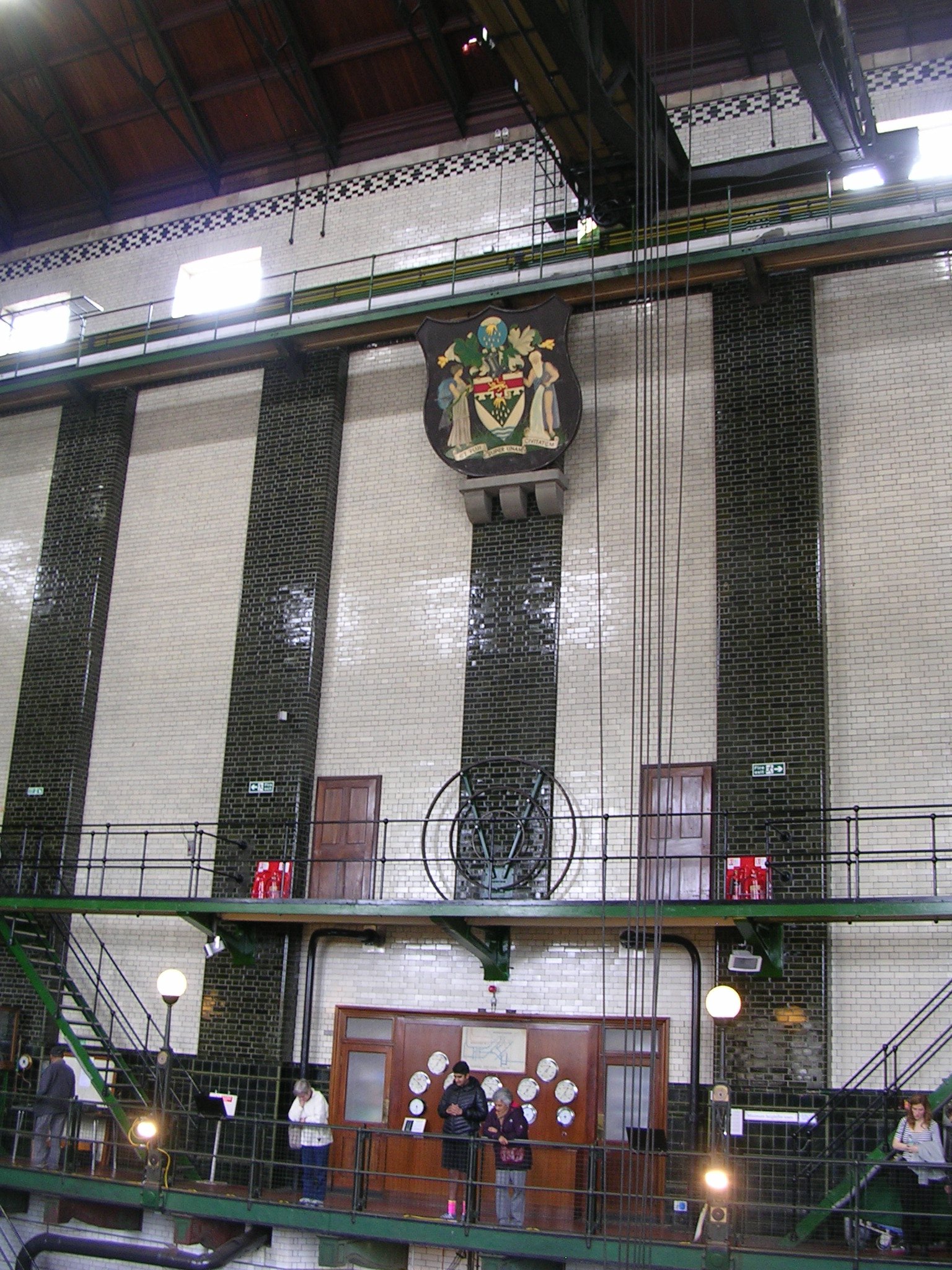
Chiltern Bubble Car
Chiltern Railways operate trains from London Marylebone to Aylesbury, Oxford and Birmingham. In addition to their main routes they are responsible for the short branch line between Princes Risborough and Aylesbury.
Faced with a shortage of trains a few years ago they acquired some single car first generation diesel units, known to railway enthusiasts as bubble cars, and refurbished a couple to use on this branch line during rush hours. This released a longer more modern train to operate elsewhere.
It has been reported that the bubble cars will cease working in the May timetable change, so I decided to go for a farewell ride on the oldest passenger trains on the mainland rail network.
The empty bubble car arrives at Princes Risborough to commence its afternoon duties: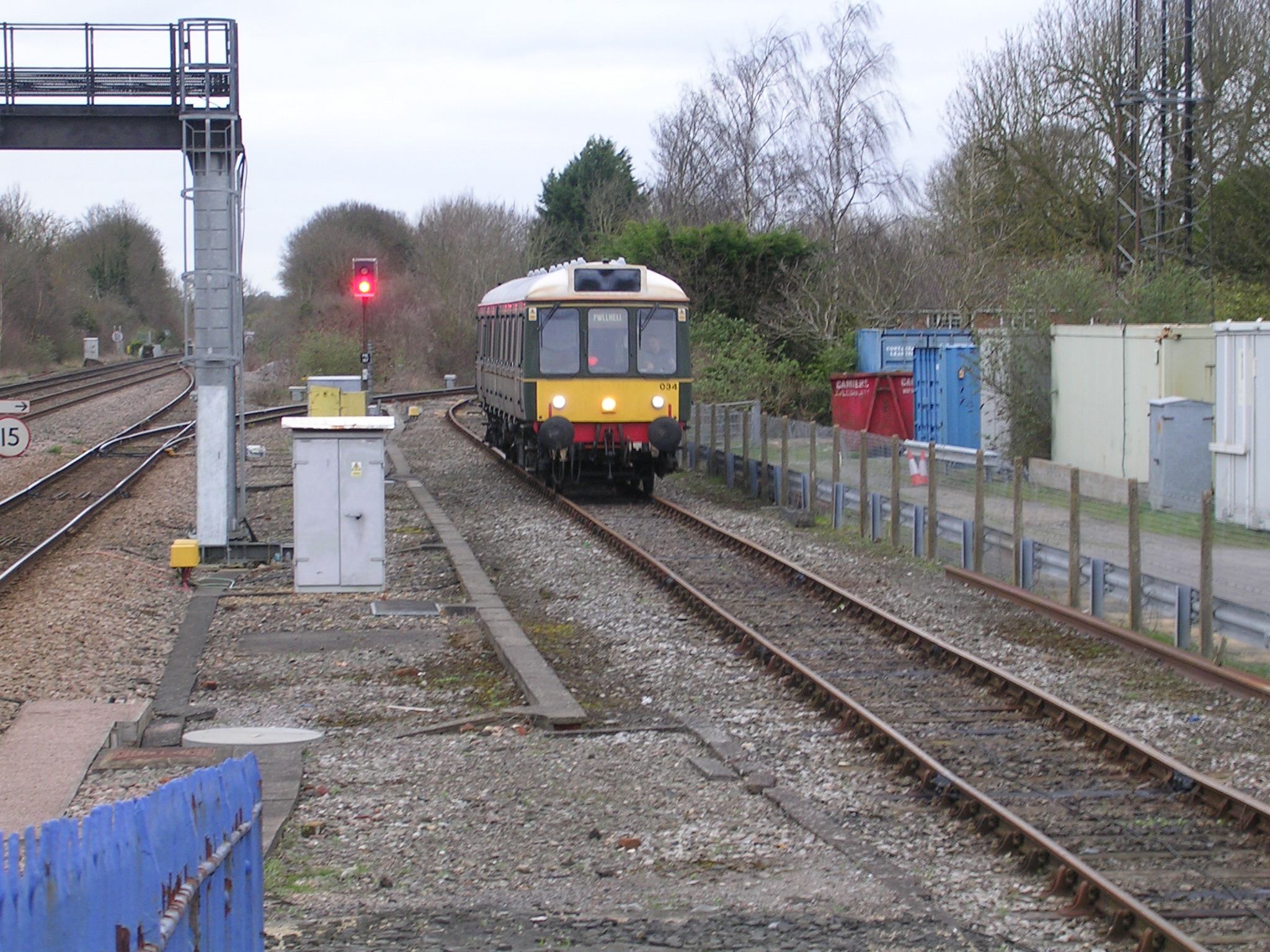 Ready for passengers at Princes Risborough:
Ready for passengers at Princes Risborough: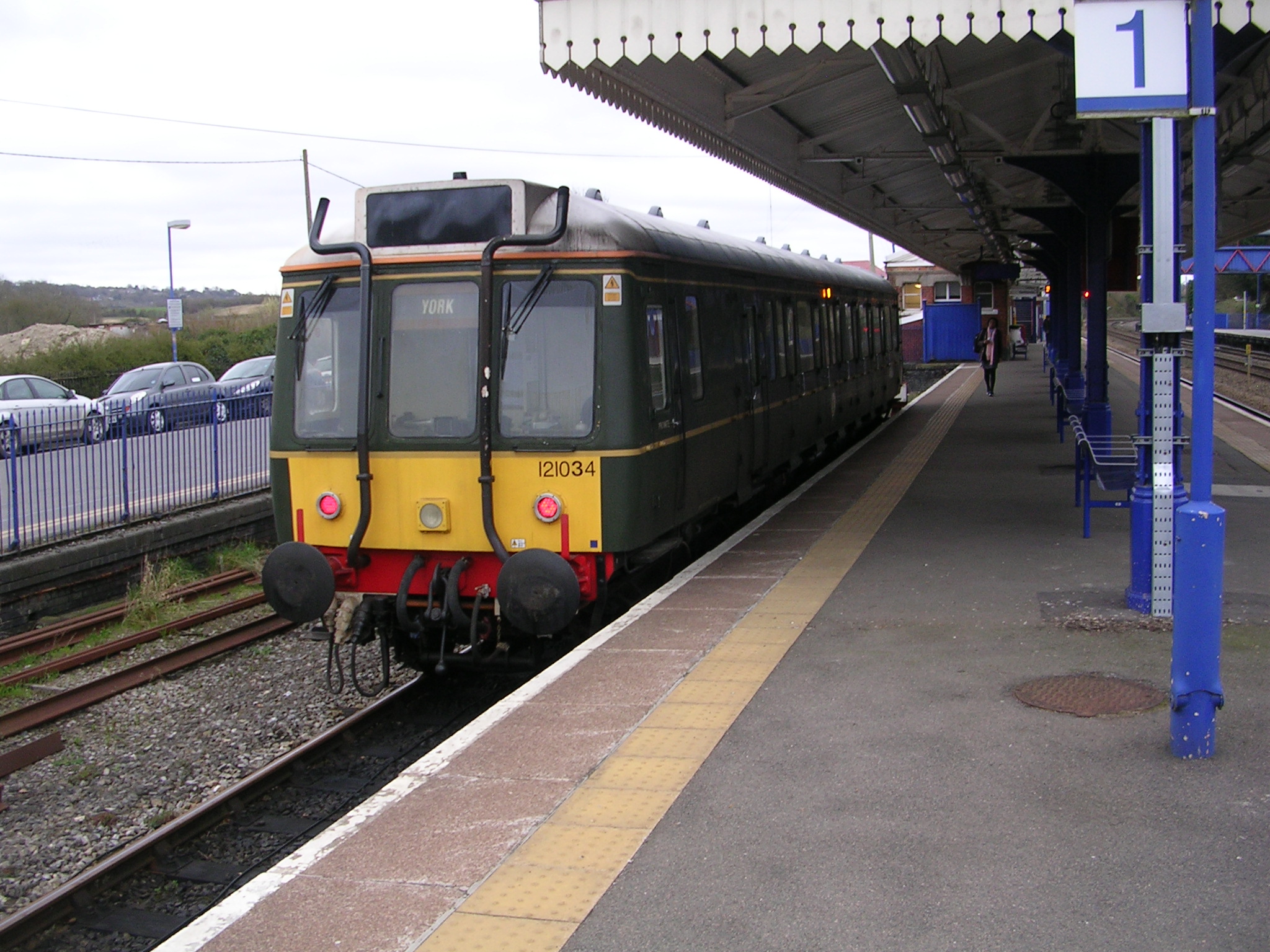 The other end of the route at Aylesbury:
The other end of the route at Aylesbury: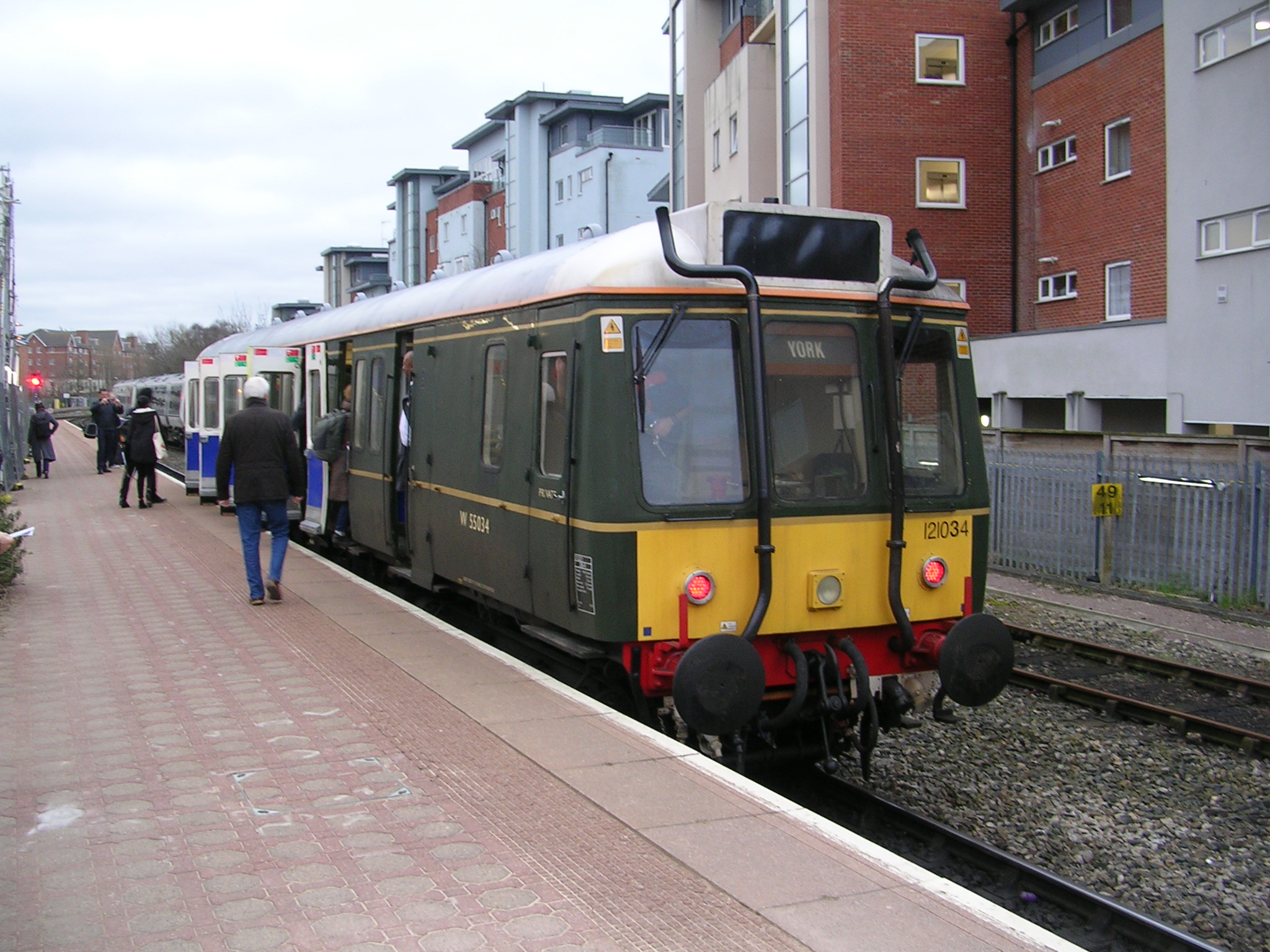 The guard on the service seemed unsurprised that half the passengers were railway enthusiasts there for the ride, in fact he invited us to do another round trip.
The guard on the service seemed unsurprised that half the passengers were railway enthusiasts there for the ride, in fact he invited us to do another round trip.
A final picture in the darkness at Princes Risborough: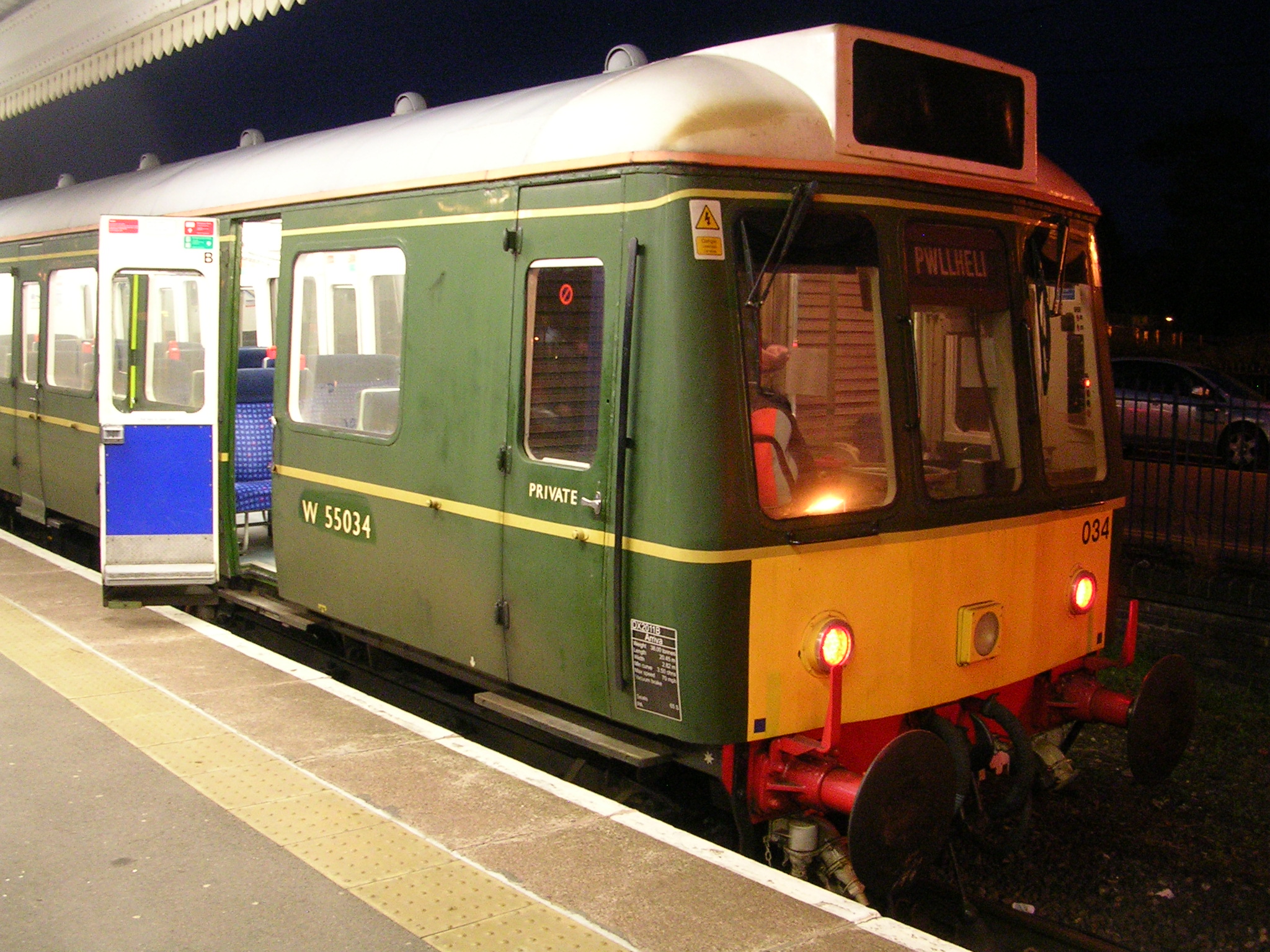 There were other things to see at Princes Risborough while I waited for the bubble car: Just to show that Chiltern isn’t all about antique trains one of their expresses whizzed through, hauled by one of the newest locos on the network, a class 68. (Sadly it was a bit too fast for my photographic skills.)
There were other things to see at Princes Risborough while I waited for the bubble car: Just to show that Chiltern isn’t all about antique trains one of their expresses whizzed through, hauled by one of the newest locos on the network, a class 68. (Sadly it was a bit too fast for my photographic skills.) And on the other side of the station, the Chinnor and Princes Risborough Railway were working extending their preserved line to a new platform adjacent to the main station which they hope to open later this year:
And on the other side of the station, the Chinnor and Princes Risborough Railway were working extending their preserved line to a new platform adjacent to the main station which they hope to open later this year: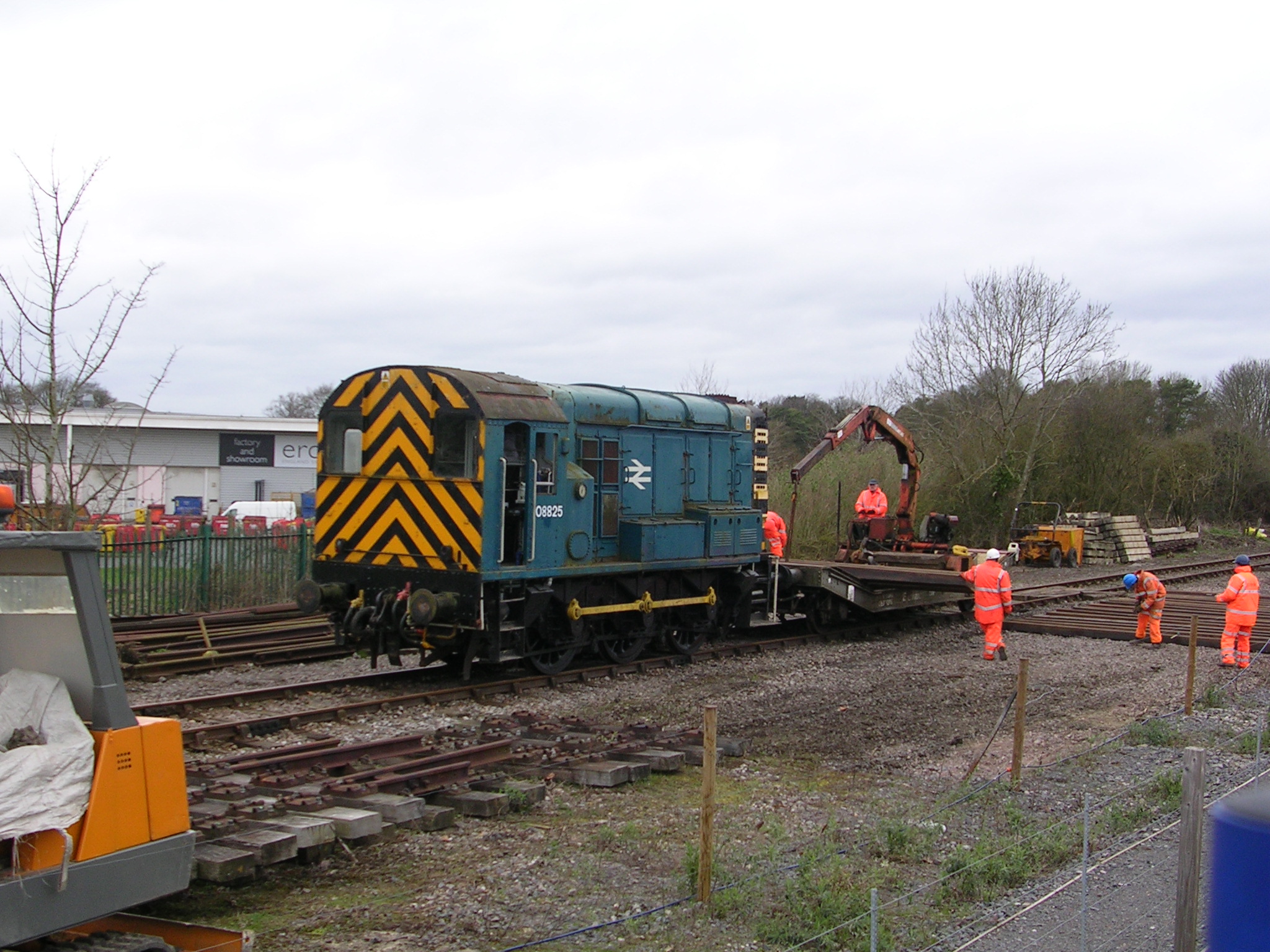
Greenwich
A trip to Greenwich gave me a chance to visit some of the excellent museums there.
I think last time I visited the Cutty Sark it was still sitting in the water. Nowadays it’s high and dry: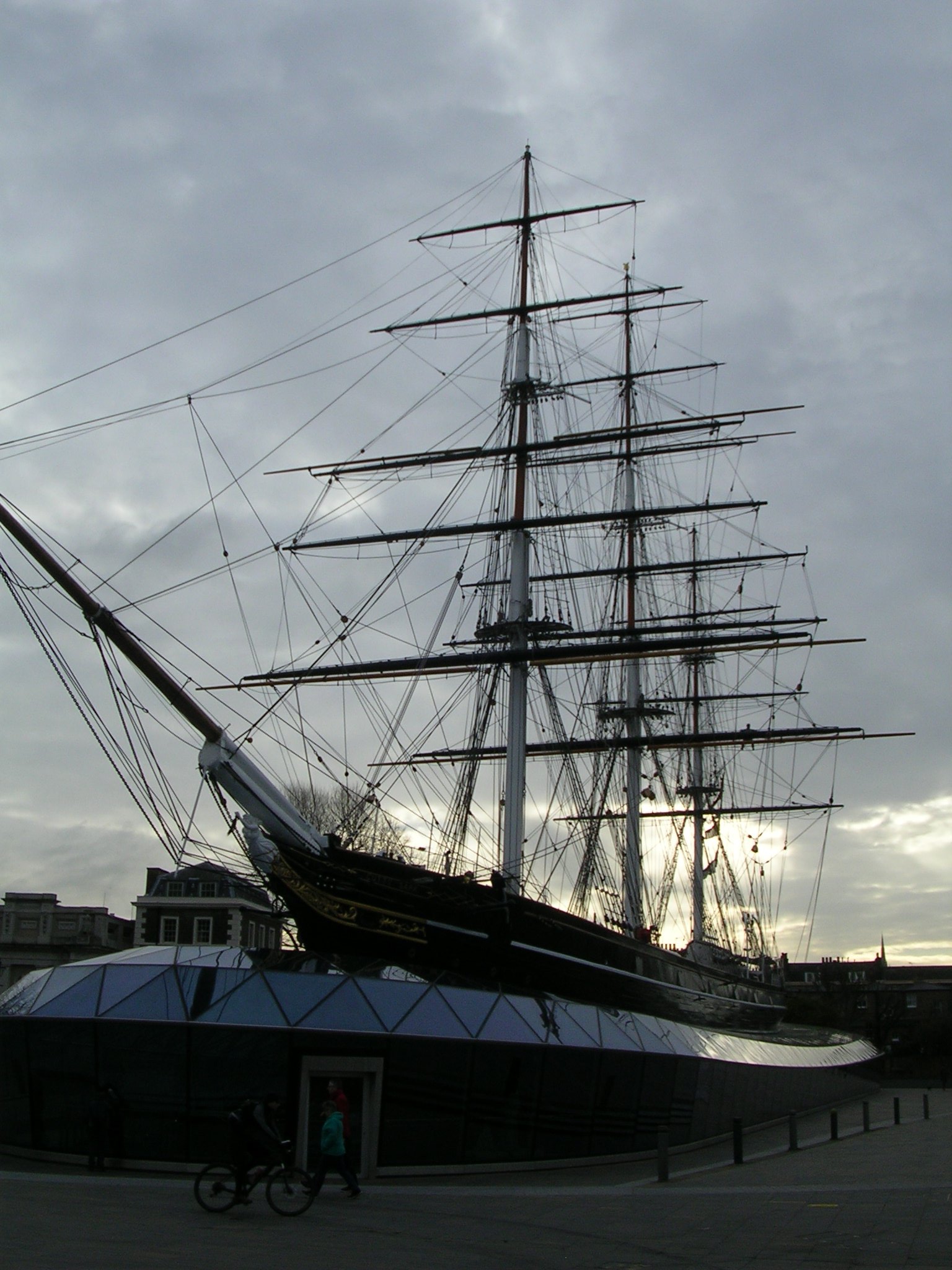 An interesting exhibition and a chance to walk on deck, inside, and below the ship:
An interesting exhibition and a chance to walk on deck, inside, and below the ship:
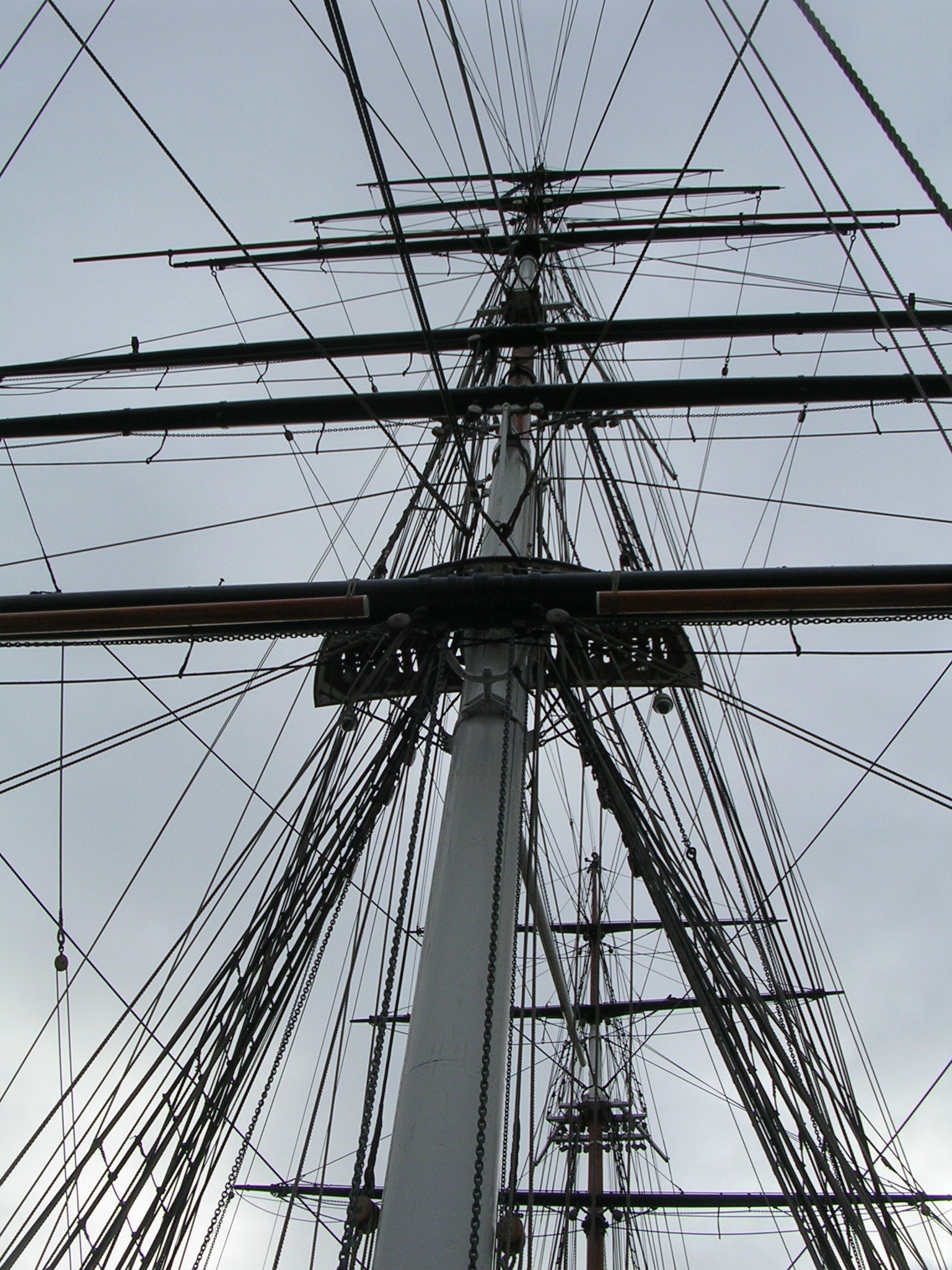
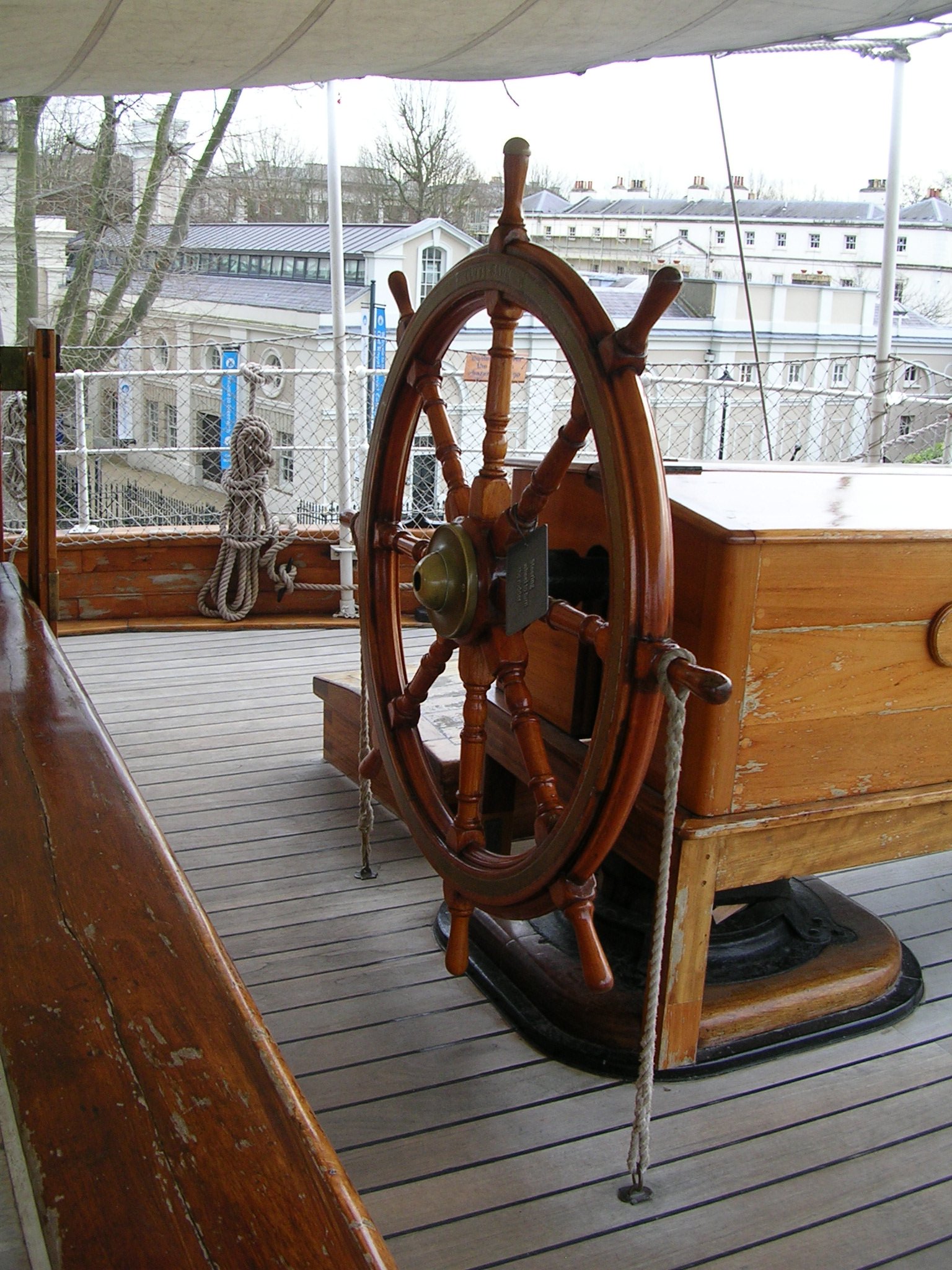
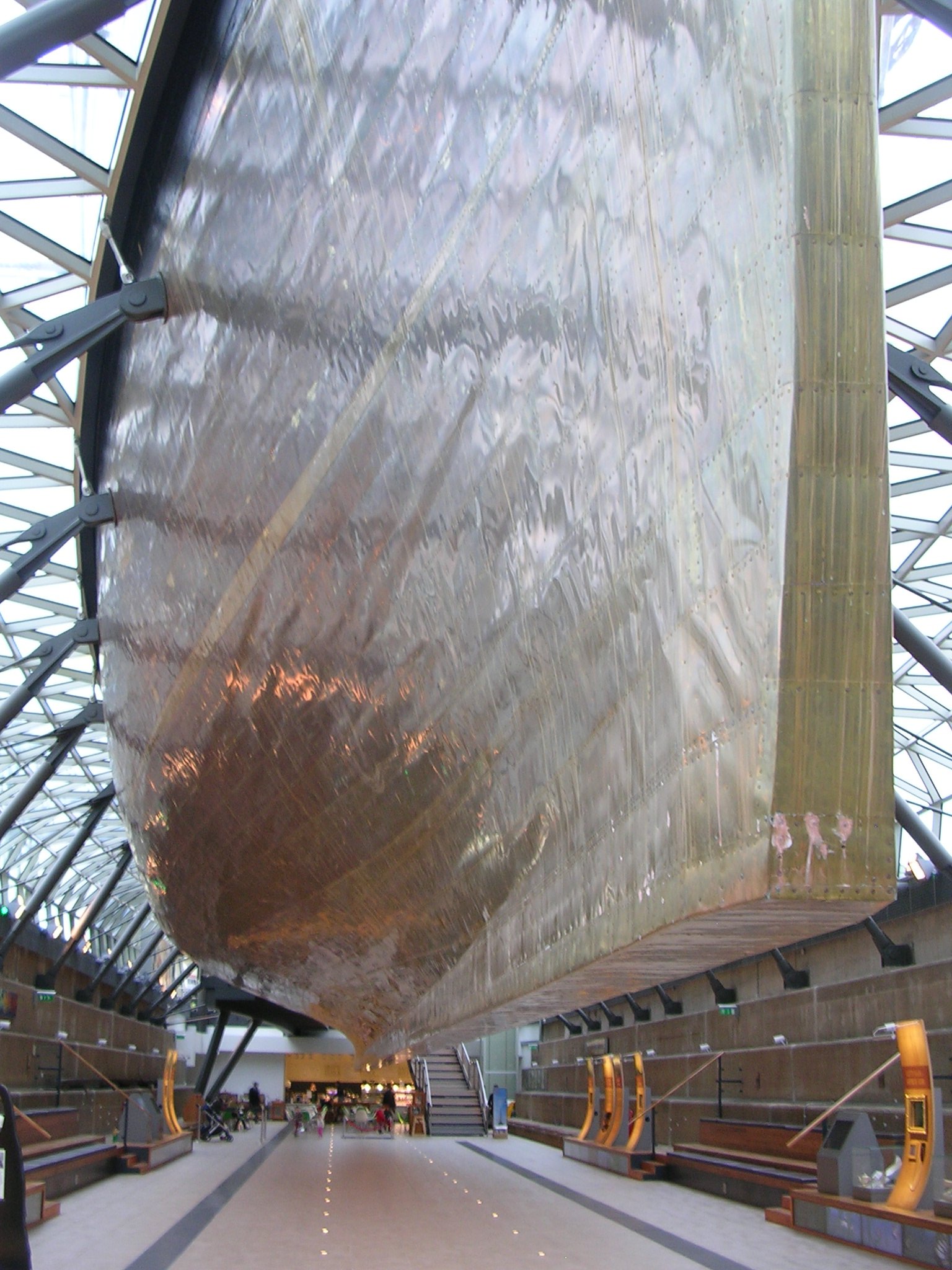
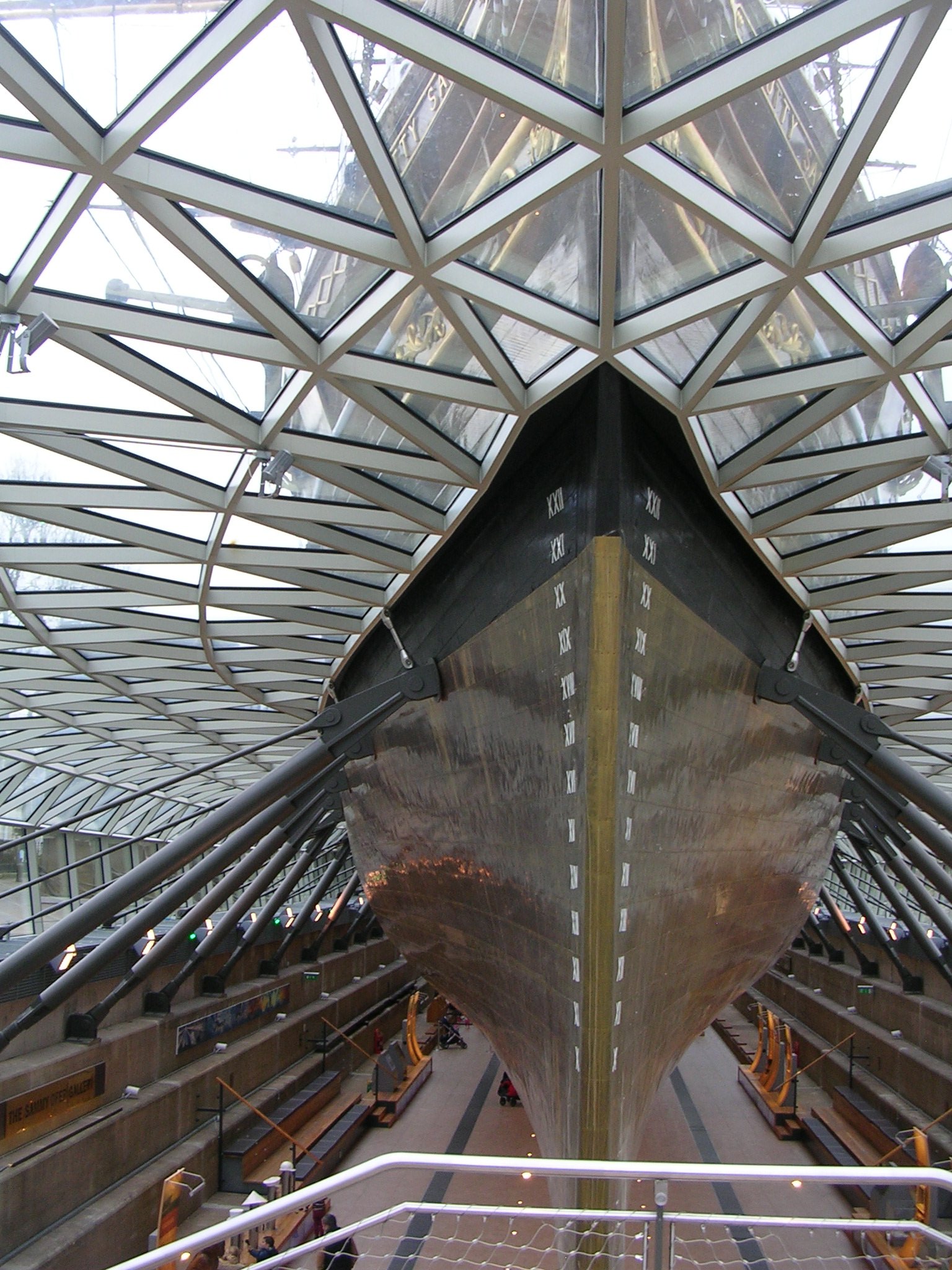 I strolled into Greenwich Park, passing various buildings housing more museums:
I strolled into Greenwich Park, passing various buildings housing more museums: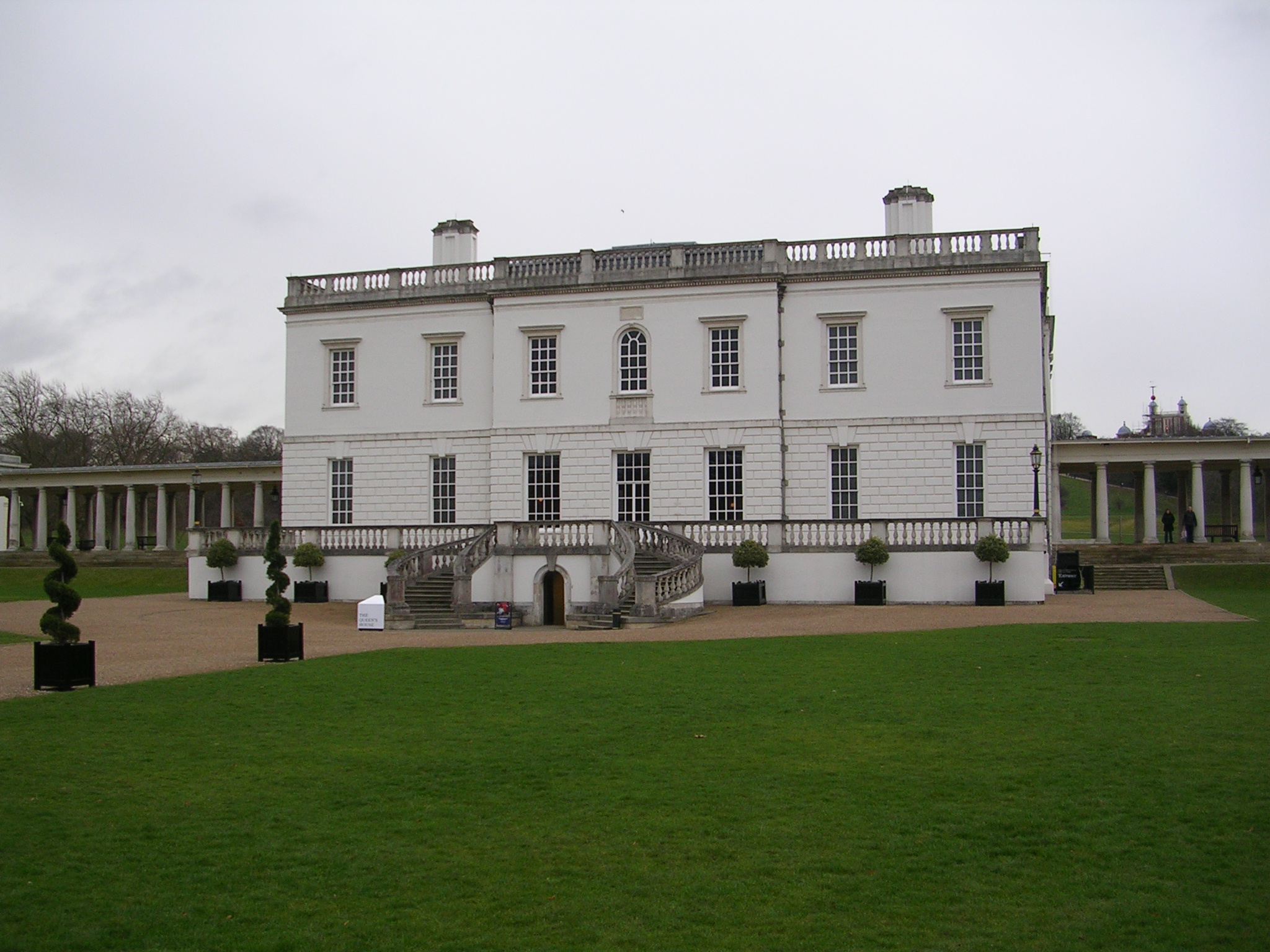
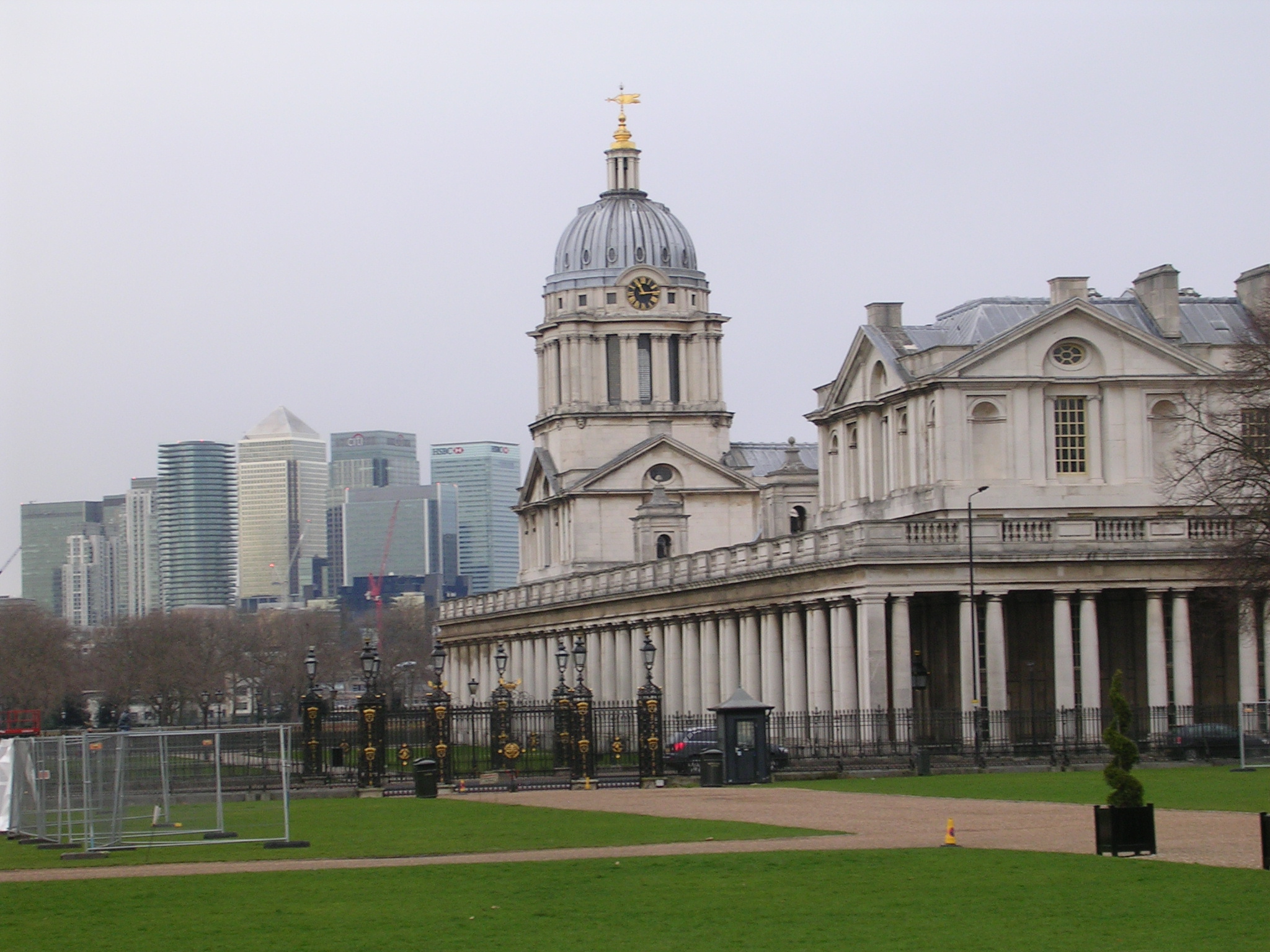
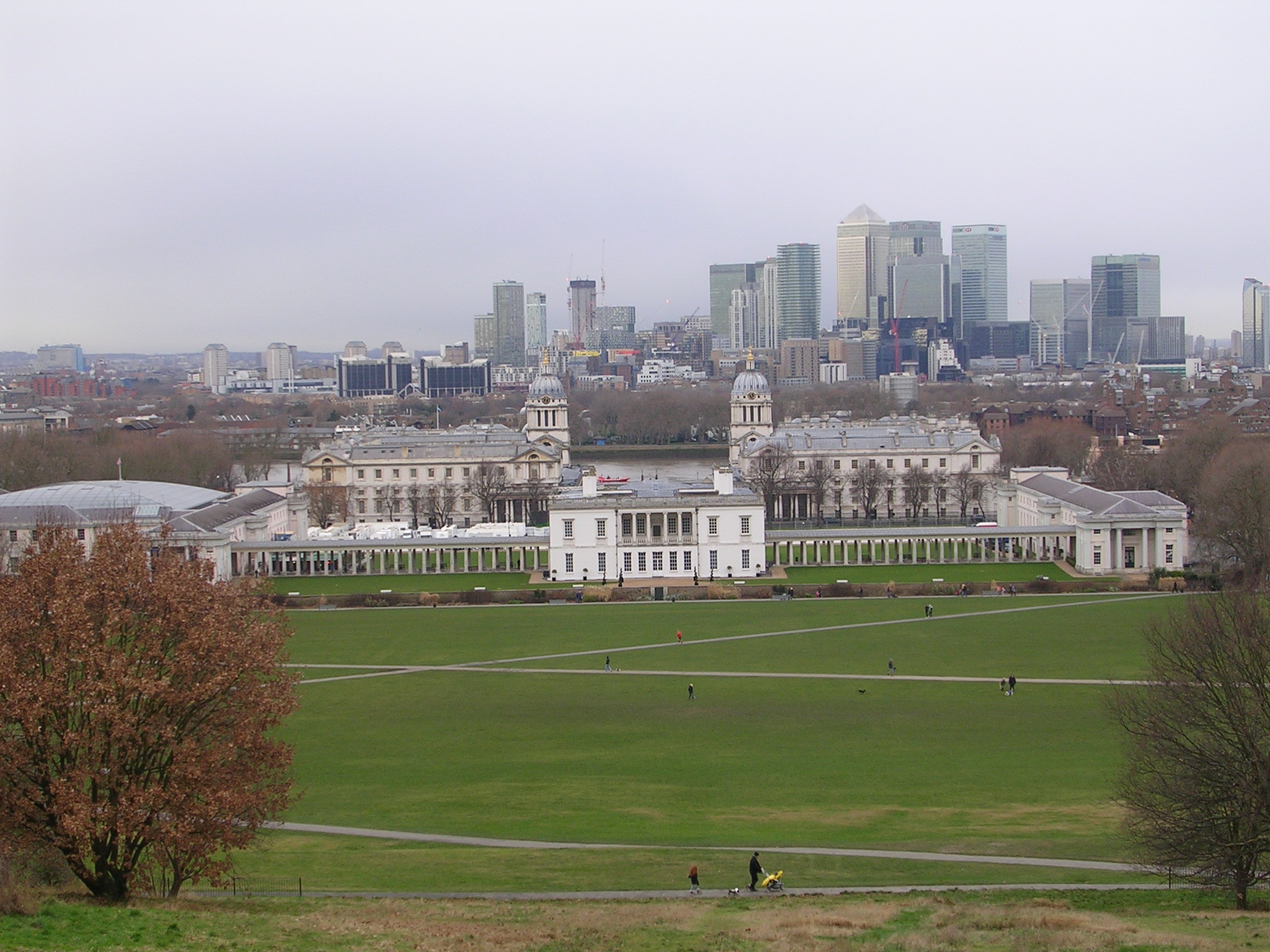 And at the top of the hill is the Royal Greenwich Observatory, a cluster of observatory buildings:
And at the top of the hill is the Royal Greenwich Observatory, a cluster of observatory buildings:

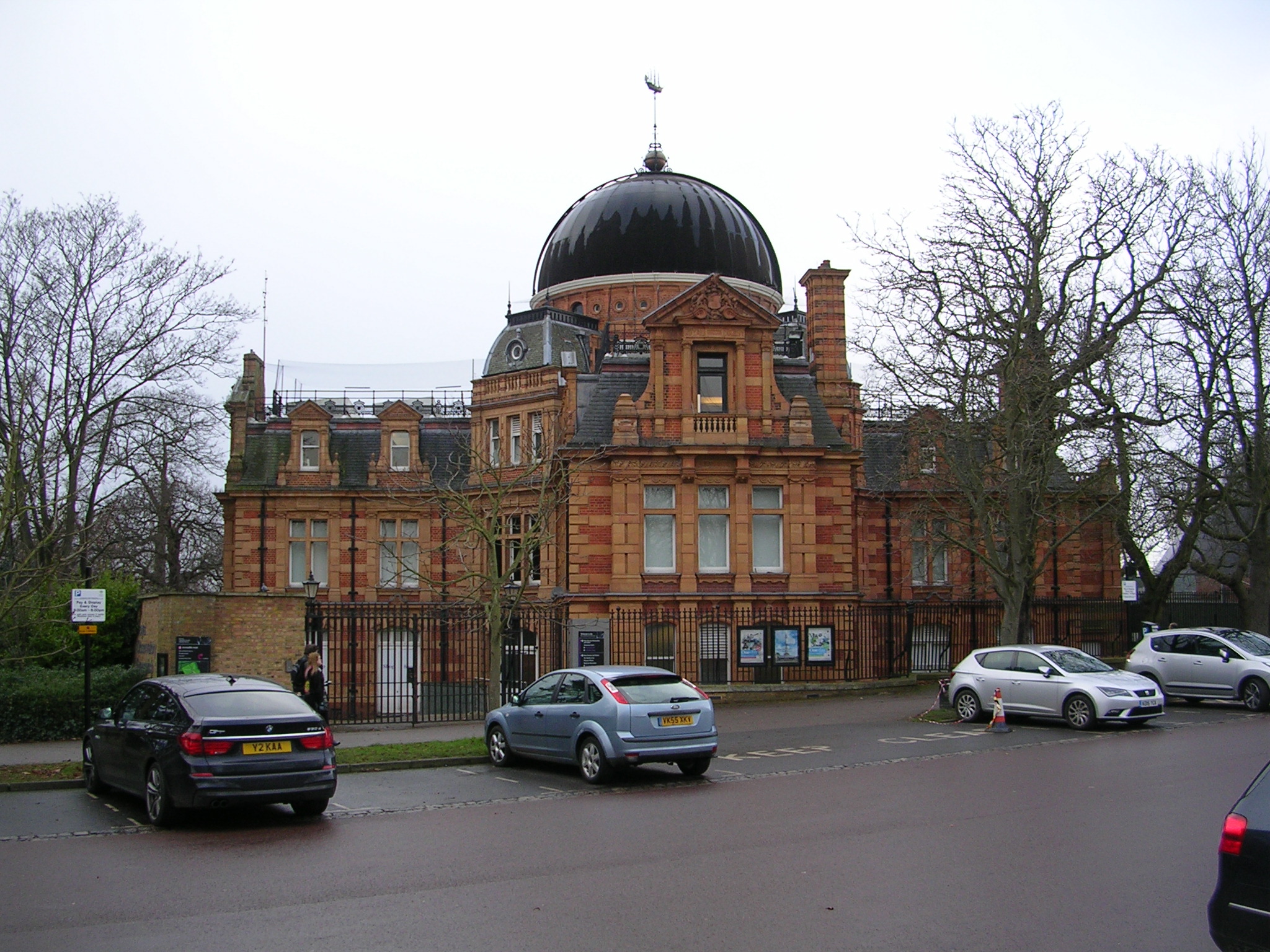 The most famous thing here is the actual meridian line, which every tourist has to take a picture of:
The most famous thing here is the actual meridian line, which every tourist has to take a picture of: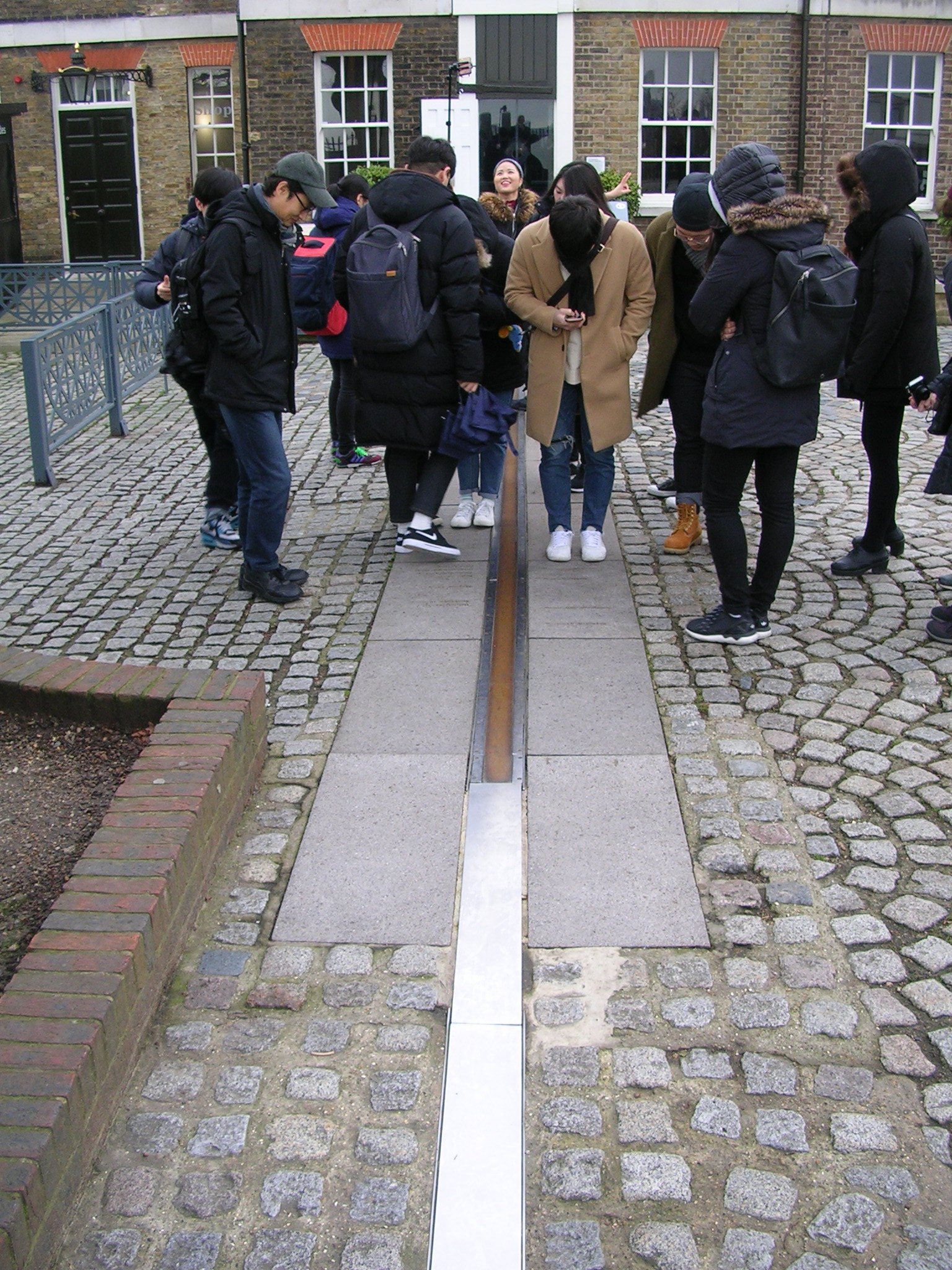 Inside, a fascinating exhibition showing the clocks and telescopes used here. I was amused to learn that when they upgraded the meridian telescope they built the new one next door and moved the meridian a few yards:
Inside, a fascinating exhibition showing the clocks and telescopes used here. I was amused to learn that when they upgraded the meridian telescope they built the new one next door and moved the meridian a few yards: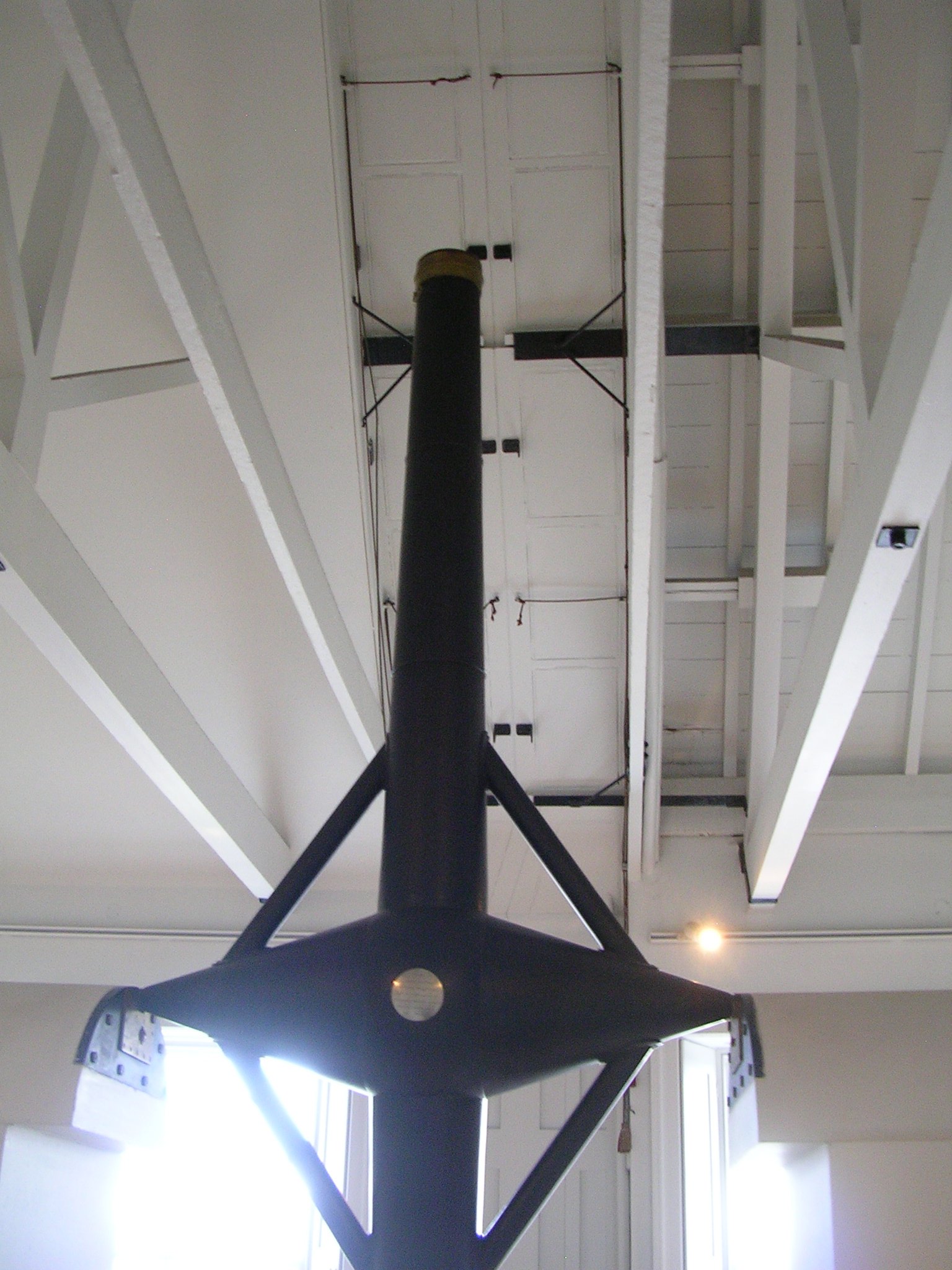
 Finally, this piece of a prehistoric meteorite is about 4.5 billion years old, and you’re allowed to touch it:
Finally, this piece of a prehistoric meteorite is about 4.5 billion years old, and you’re allowed to touch it:
Down Street Station
Down Street station, located in a side road off Piccadilly, opened in 1907 on what was then the Great Northern, Piccadilly, and Brompton Railway, now part of London Transport’s Piccadilly Line. The station’s quiet location in an area where residents already had their own transport resulted in disappointing passenger numbers, and so it closed in 1932.
In the build up to the Second World War the Railway Executive Committee, formed to coordinate railway transport in the event of war, required a safe headquarters location and in early 1939 Down Street Station was chosen, and converted to provide bomb-proof and gas-proof offices and accommodation for forty staff. The headquarters was in use from the start of the war until the end of 1947.
During a period in 1940, Winston Churchill slept in one of the offices here while the Cabinet War Rooms were being strengthened against large bombs.
After the REC left, Down Street returned to civilian use providing ventilation for the Piccadilly Line. Recently the London Transport Museum have started organising tours of the station, and I was lucky enough to join one.
The instantly-recognisable ox-blood tiling marks out the surface buildings.
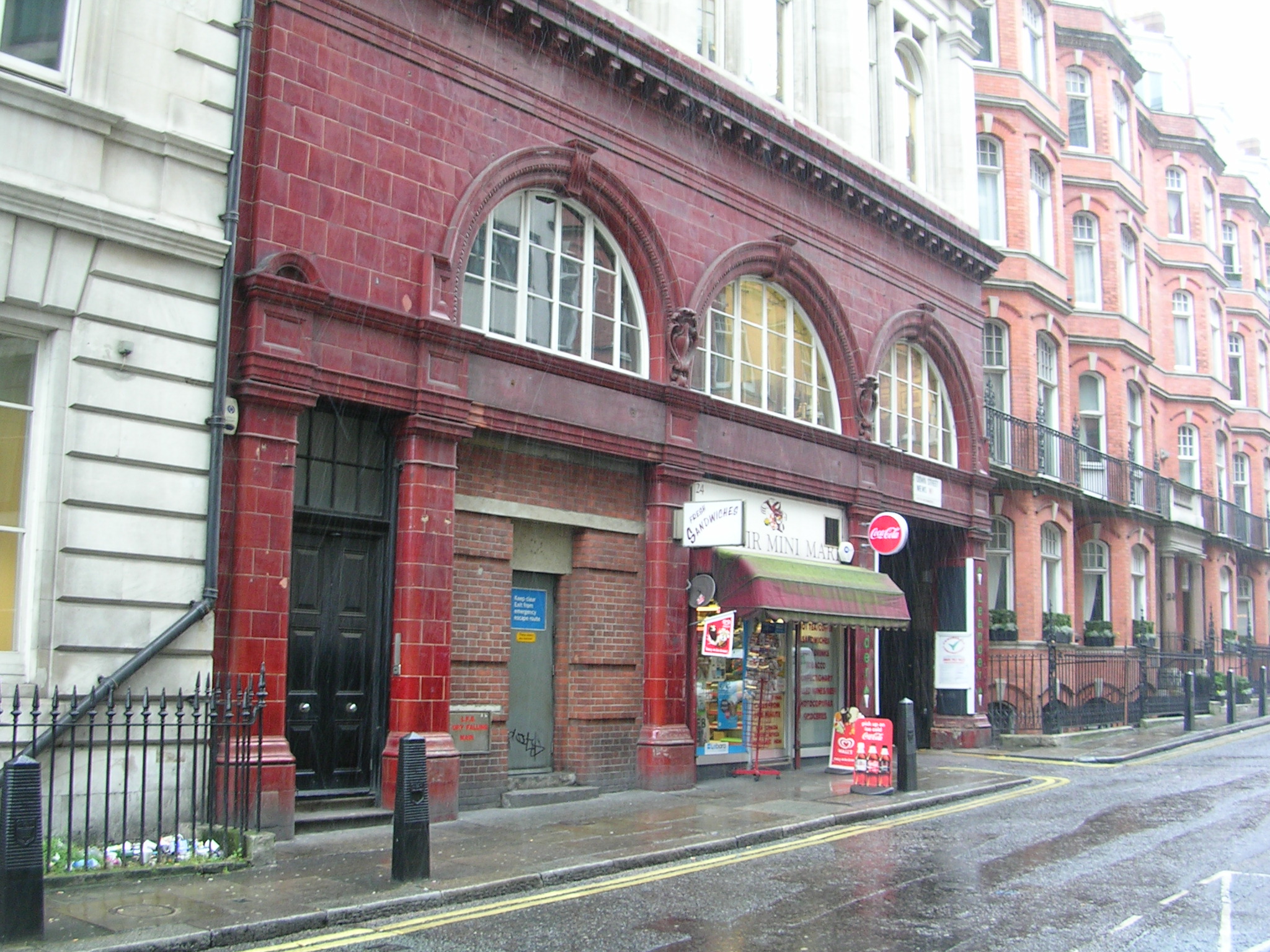 …and the exciting prospect of going in through the normally-locked door.
…and the exciting prospect of going in through the normally-locked door.
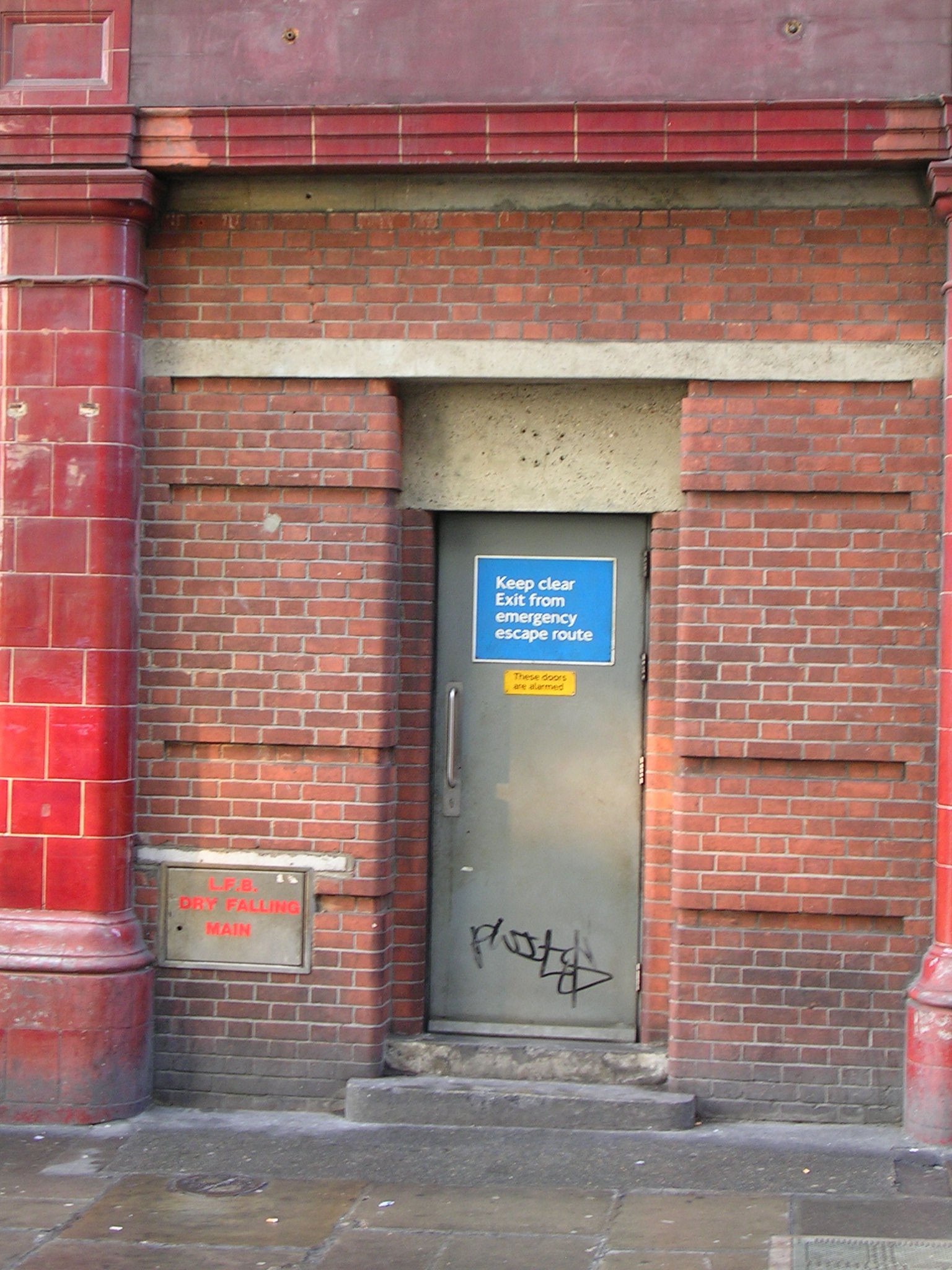 Once inside, it was a short walk down the spiral stairs to access the tunnels and platforms of the station.
Once inside, it was a short walk down the spiral stairs to access the tunnels and platforms of the station.
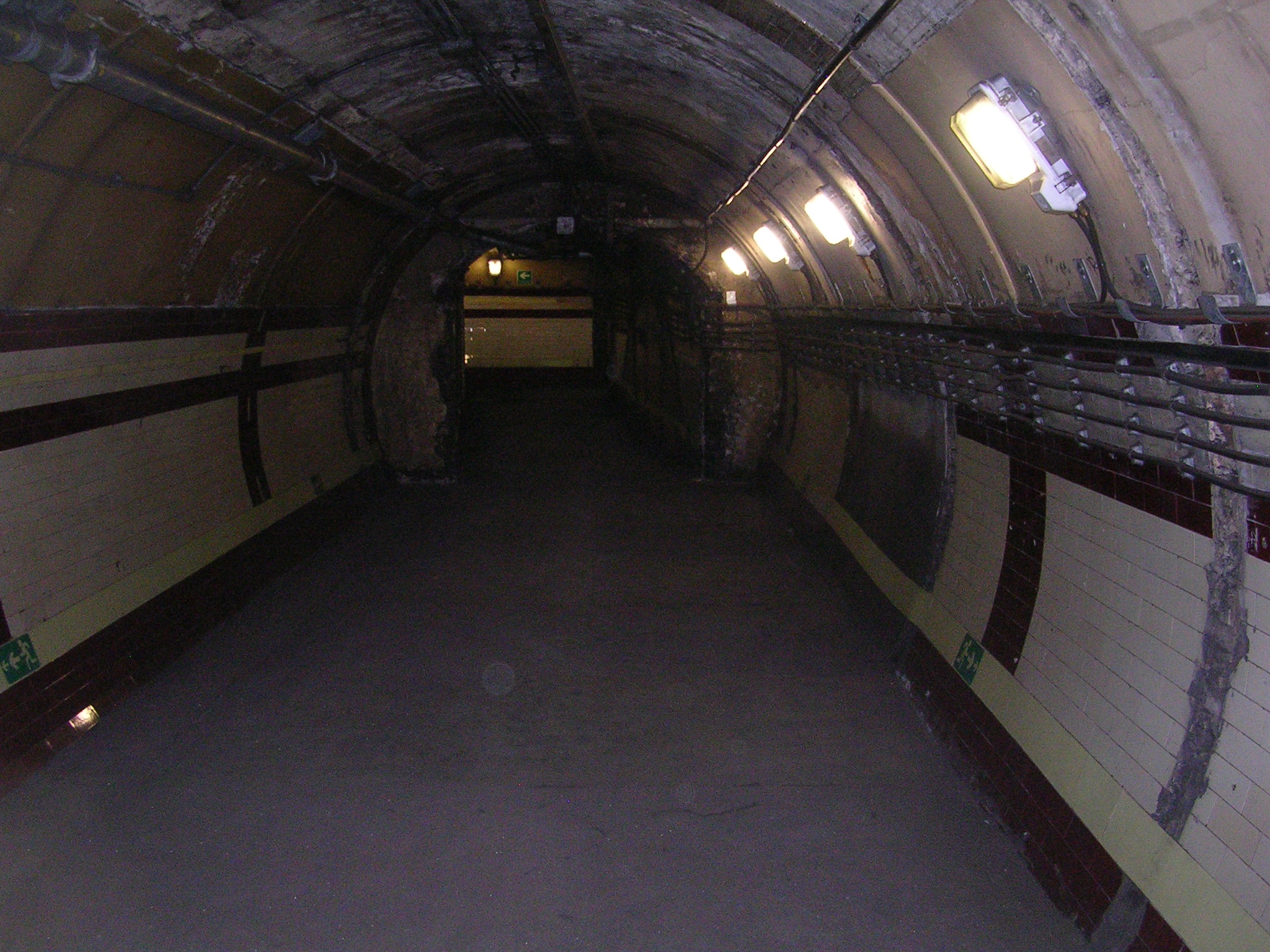
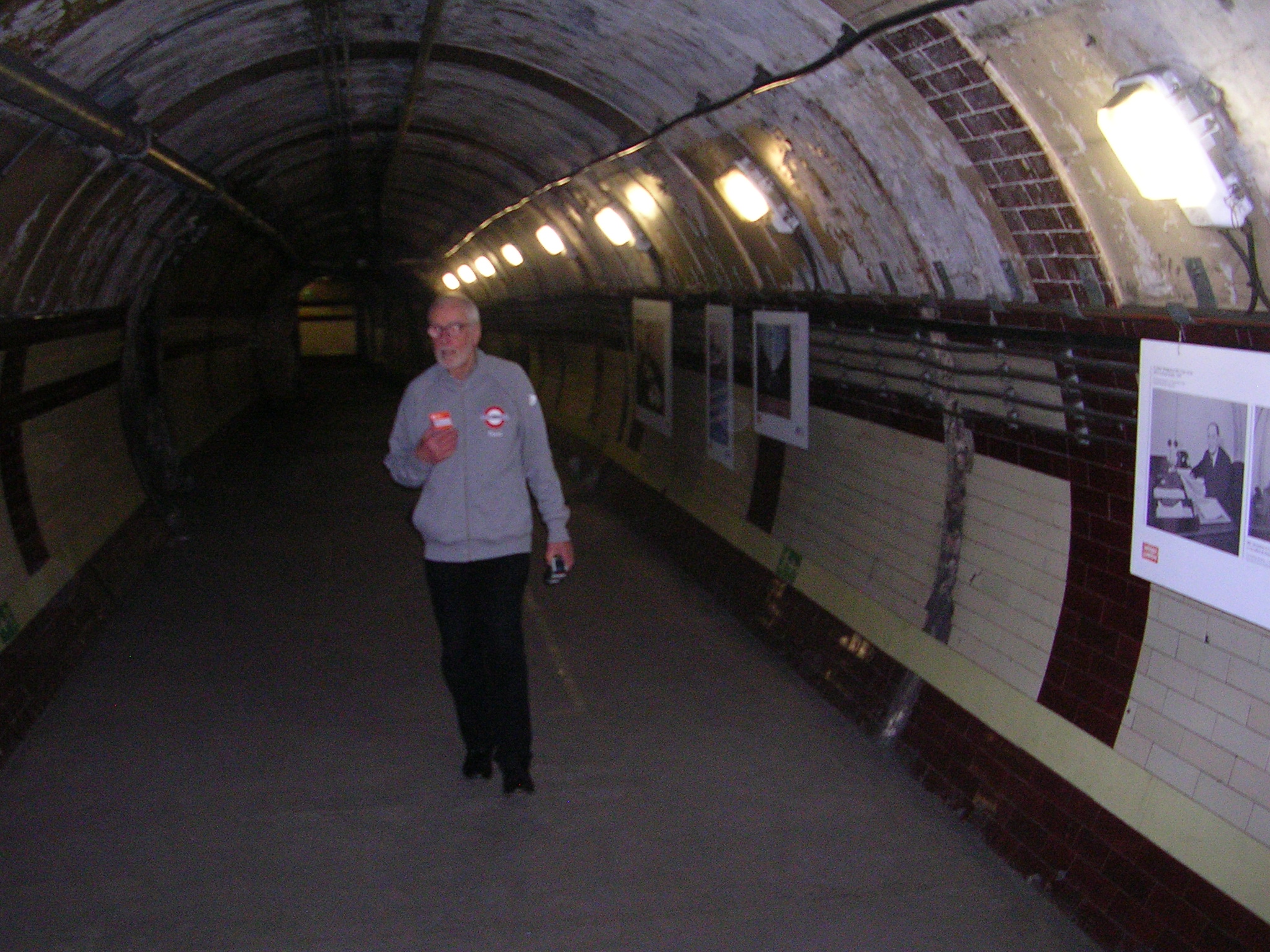 The partitions forming offices in the pedestrian tunnels were all gone, although we could see where they had been by marks on the floor and ceiling, and the informative guides had pictures showing what it would have been like. On the former platforms the walls were still present, including a wall separating us from the trains which whizzed noisily past every few minutes. (At some points in tour we had to stand in pitch darkness with all lights off while the trains passed, to ensure we didn’t distract the train drivers.) Most rooms were empty, with just a few remains to show what they were used for.
The partitions forming offices in the pedestrian tunnels were all gone, although we could see where they had been by marks on the floor and ceiling, and the informative guides had pictures showing what it would have been like. On the former platforms the walls were still present, including a wall separating us from the trains which whizzed noisily past every few minutes. (At some points in tour we had to stand in pitch darkness with all lights off while the trains passed, to ensure we didn’t distract the train drivers.) Most rooms were empty, with just a few remains to show what they were used for.
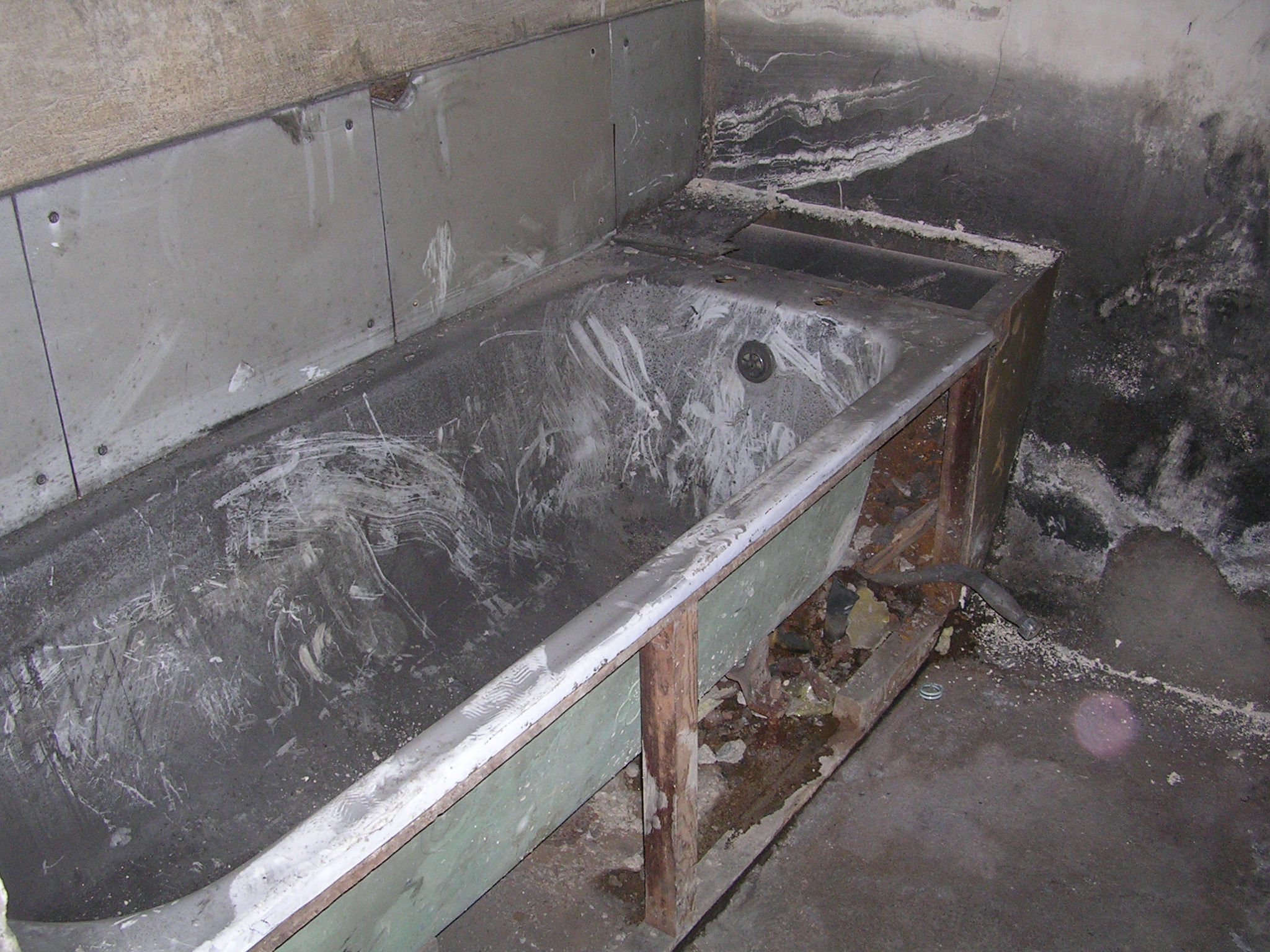
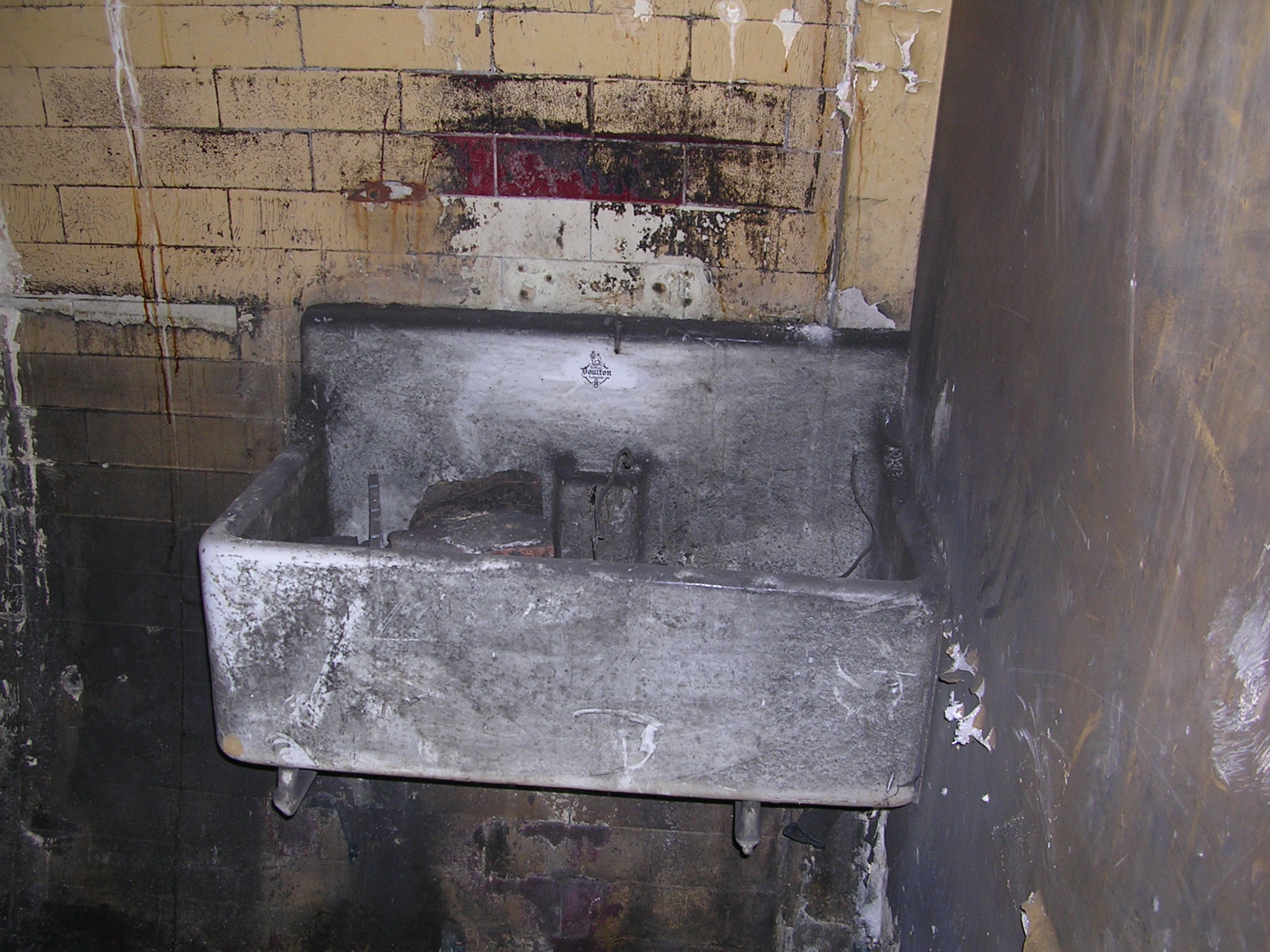 We could see plenty of signs on the walls, both original and from the wartime use.
We could see plenty of signs on the walls, both original and from the wartime use.
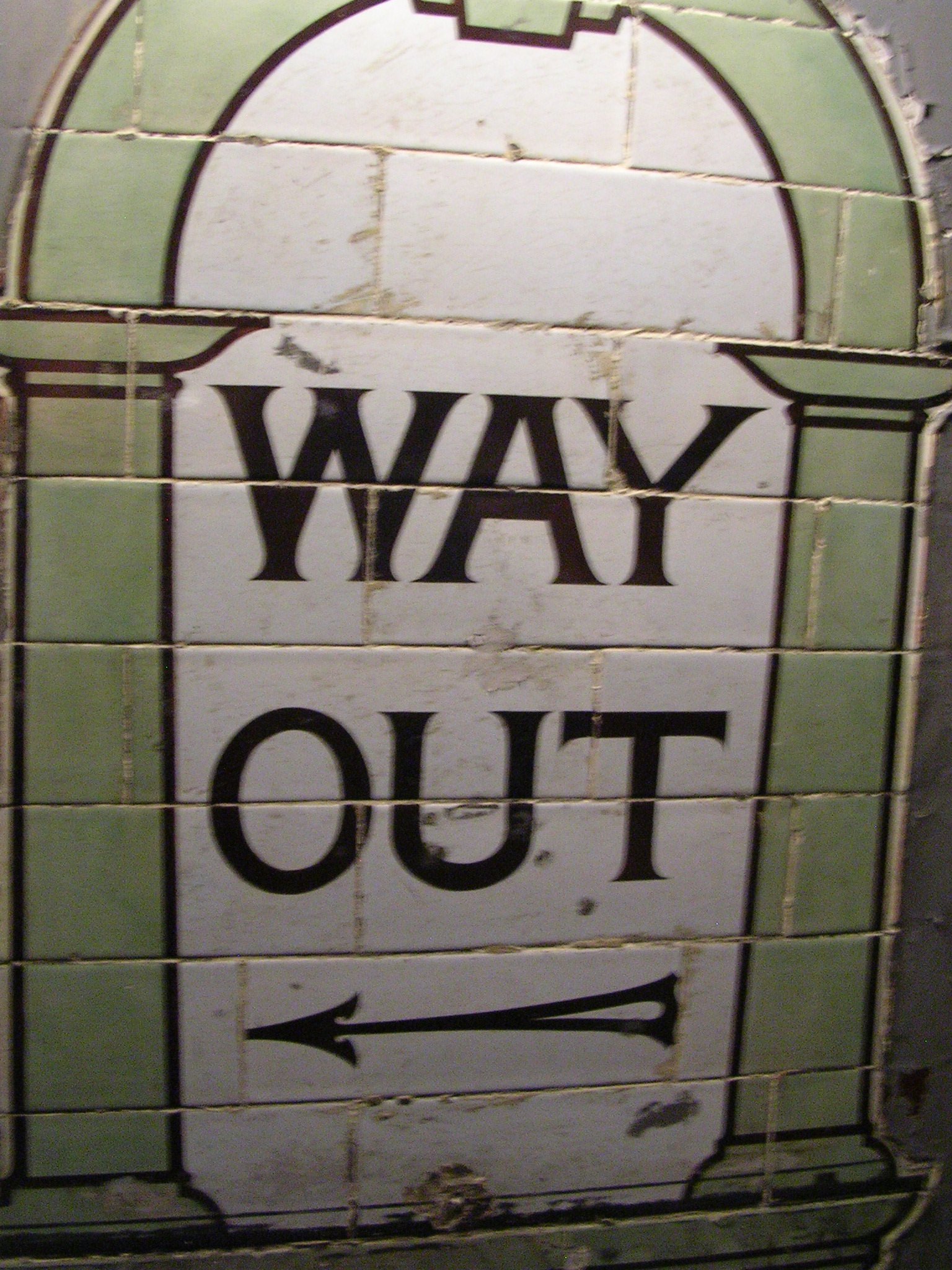
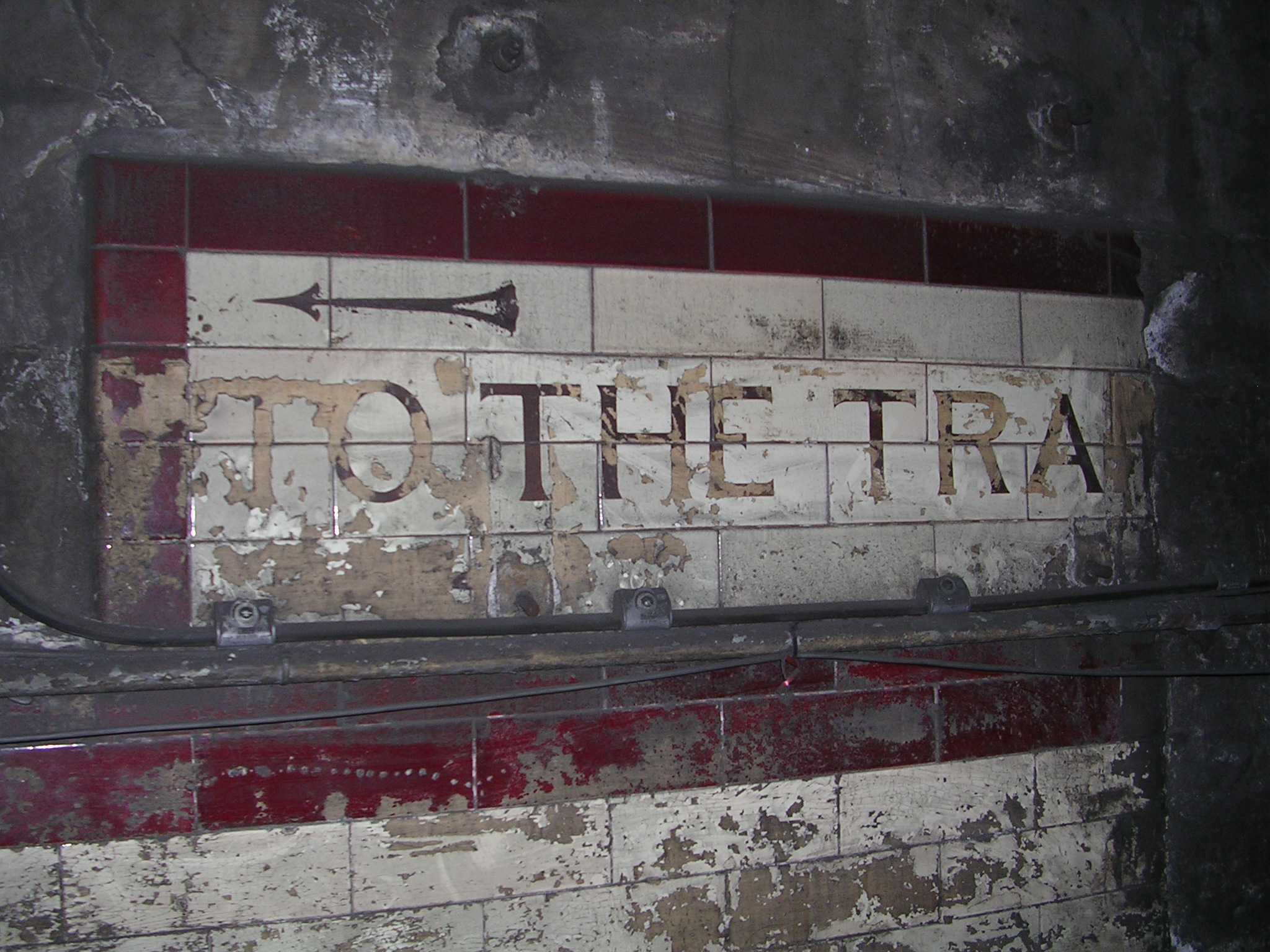
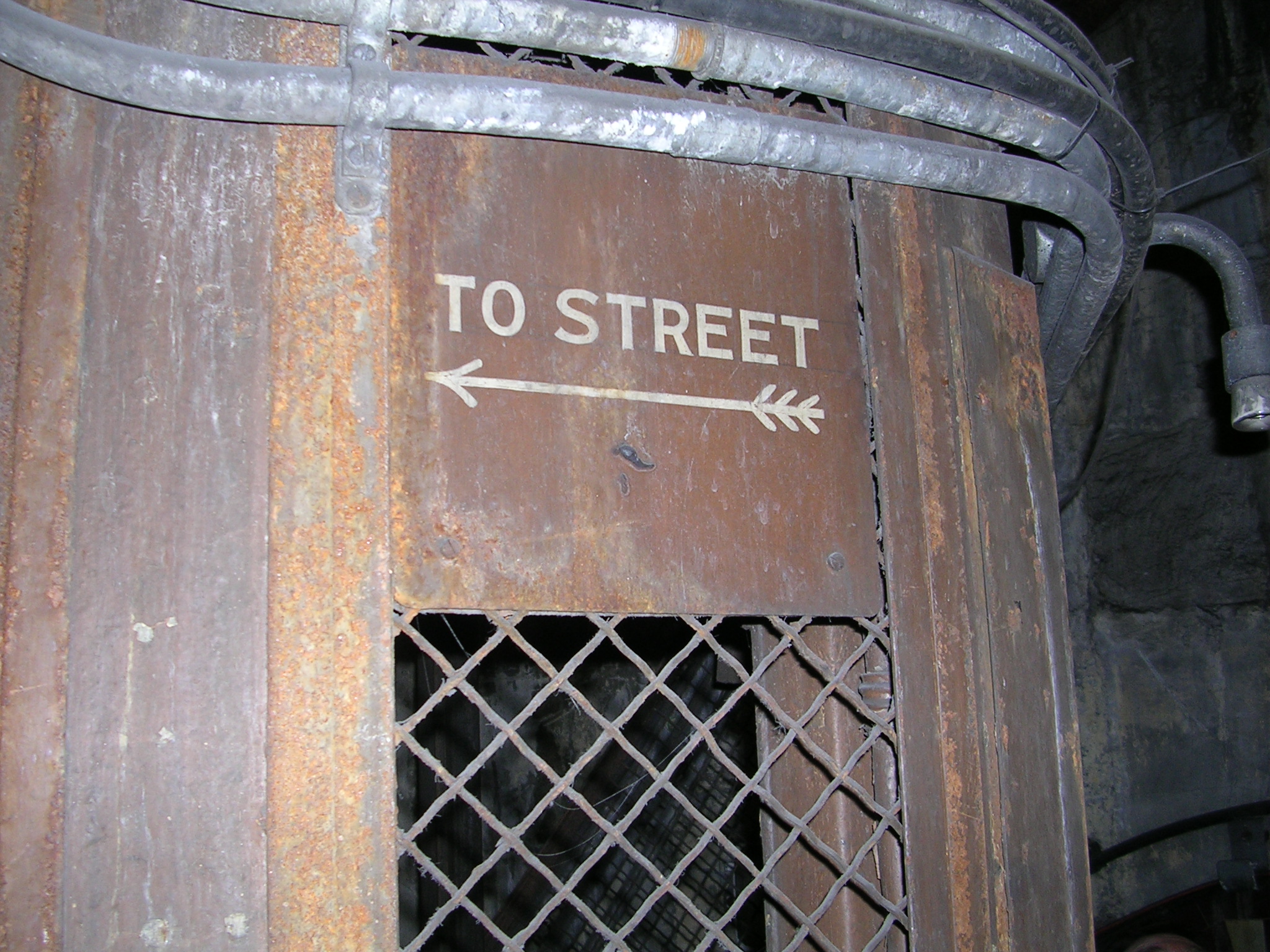 … and also a more modern sign which seems a little out of place. (The Piccadilly didn’t get to Heathrow until 1977.)
… and also a more modern sign which seems a little out of place. (The Piccadilly didn’t get to Heathrow until 1977.)
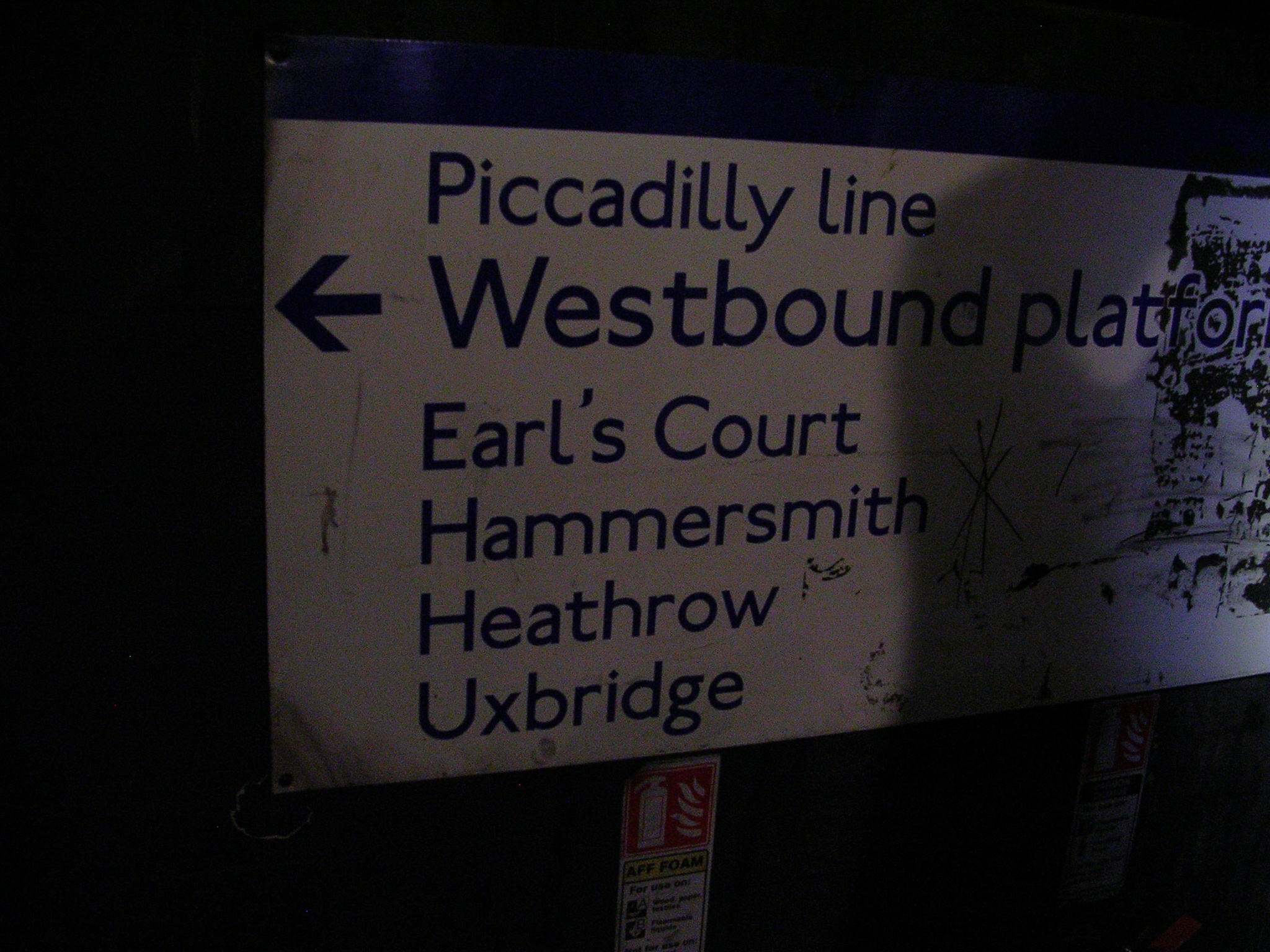 An excellent visit which I highly recommend. The museum organise tours of other interesting locations under the Hidden London banner and I hope to do some more before too long.
An excellent visit which I highly recommend. The museum organise tours of other interesting locations under the Hidden London banner and I hope to do some more before too long.
Queen Street Mill
A train ride to Burnley and then a short bus trip to the outskirts took me to visit another steam mill engine. This one’s a bit special, though, because it is still in use.
On arriving at Queen Street Mill Textile Museum we were a little concerned as there was no hint of any smoke from the tall chimney: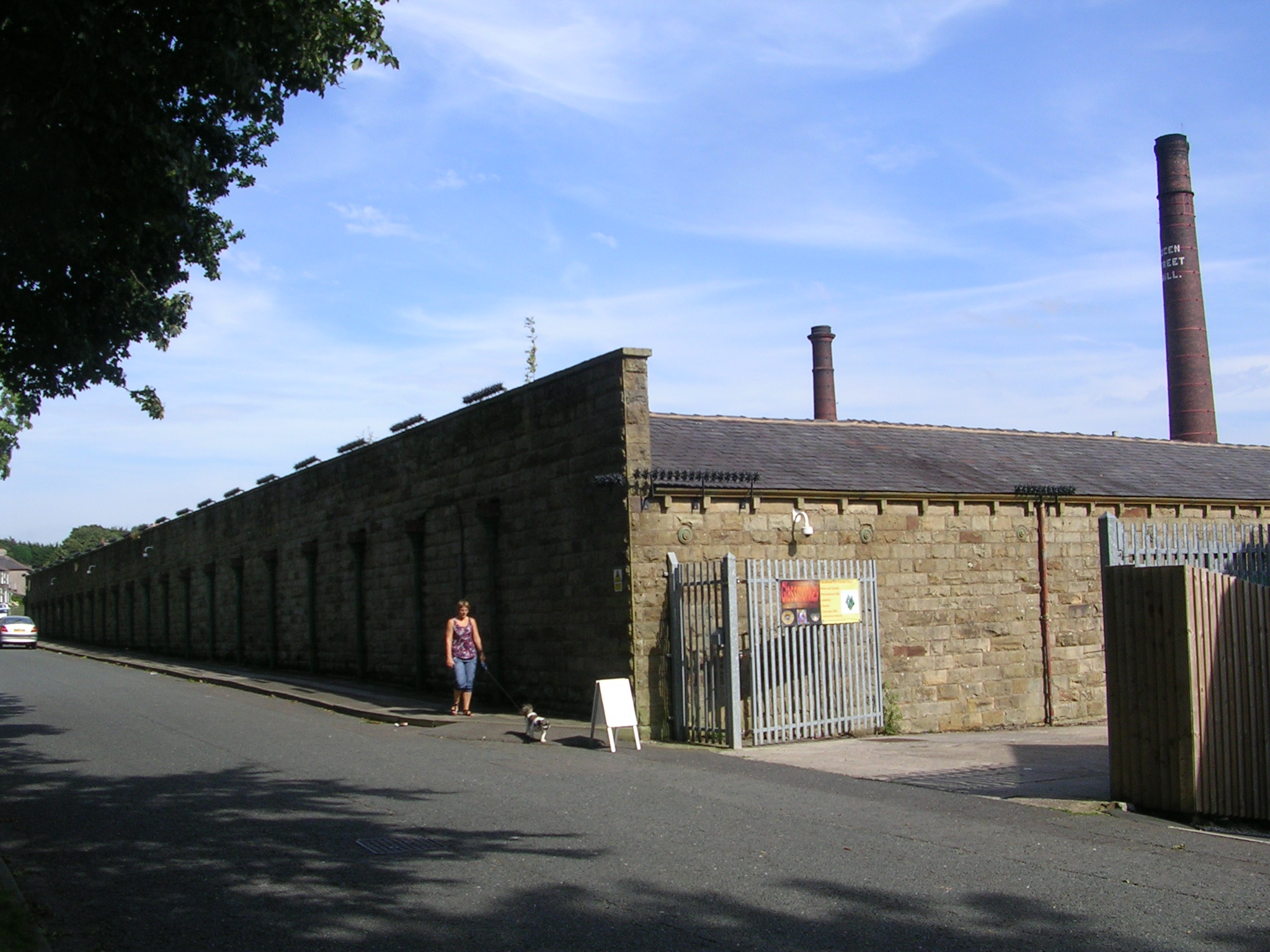
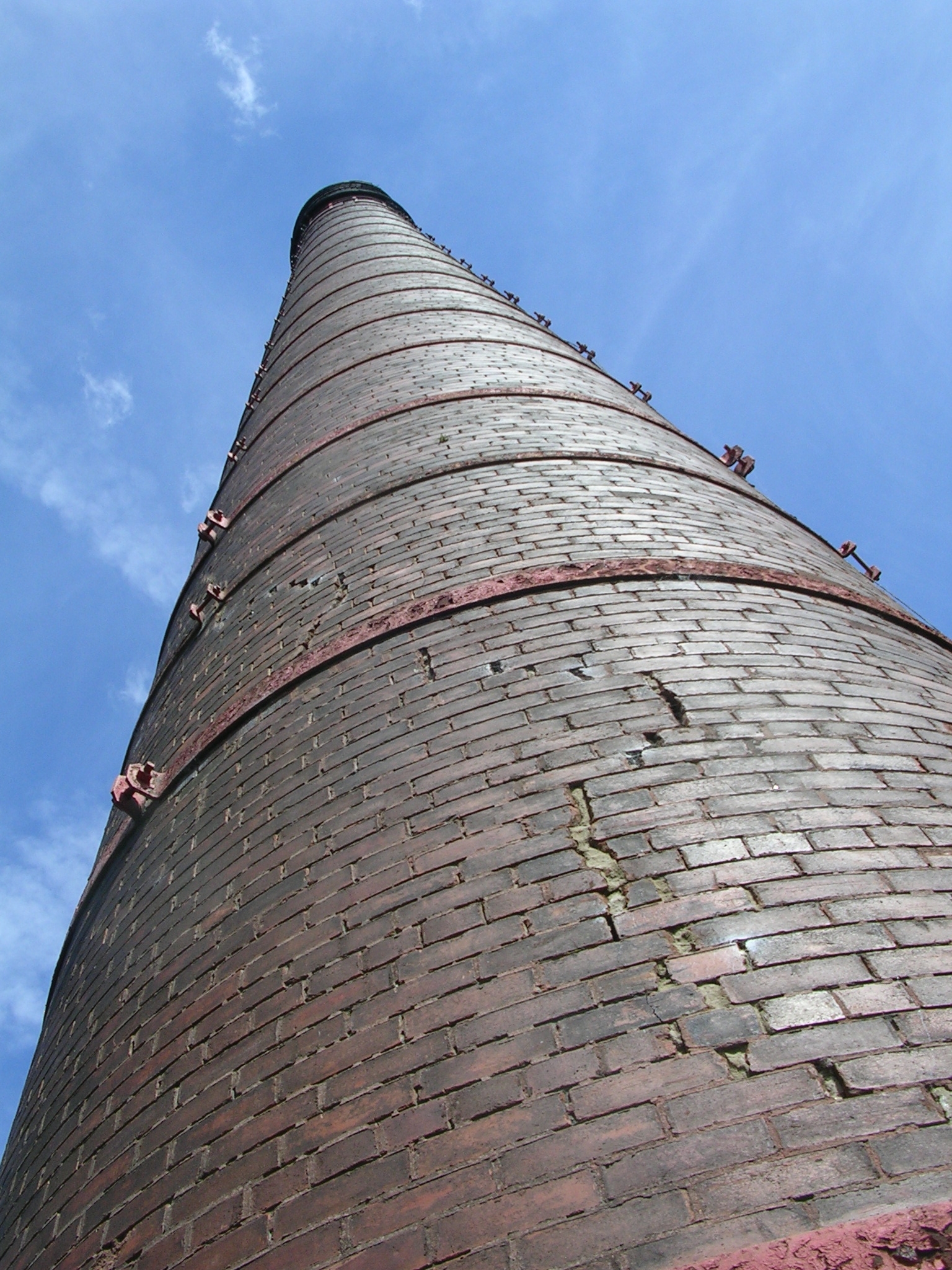 But once inside we found the beautiful engine which dates from the 1890s was operating today:
But once inside we found the beautiful engine which dates from the 1890s was operating today: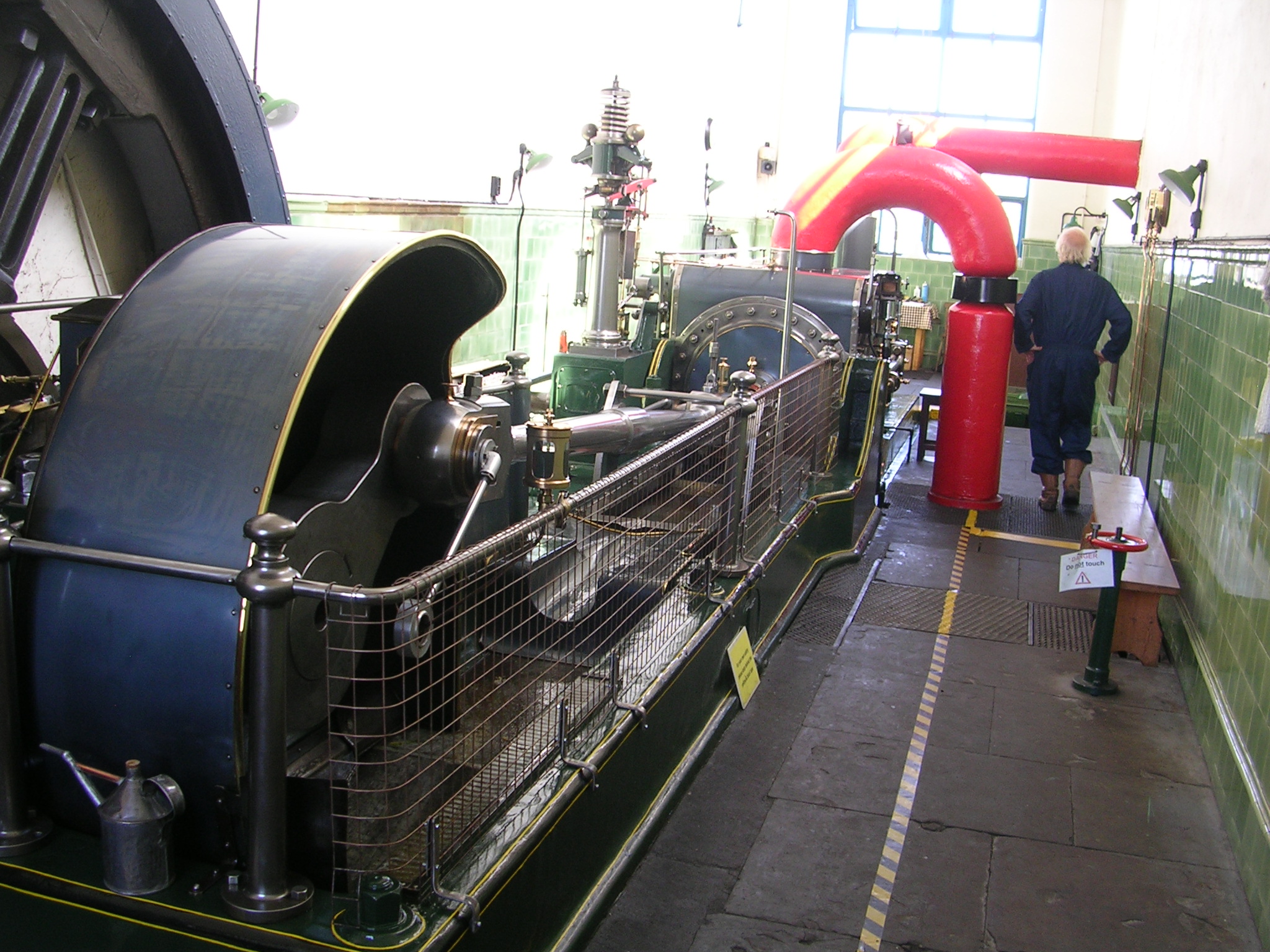
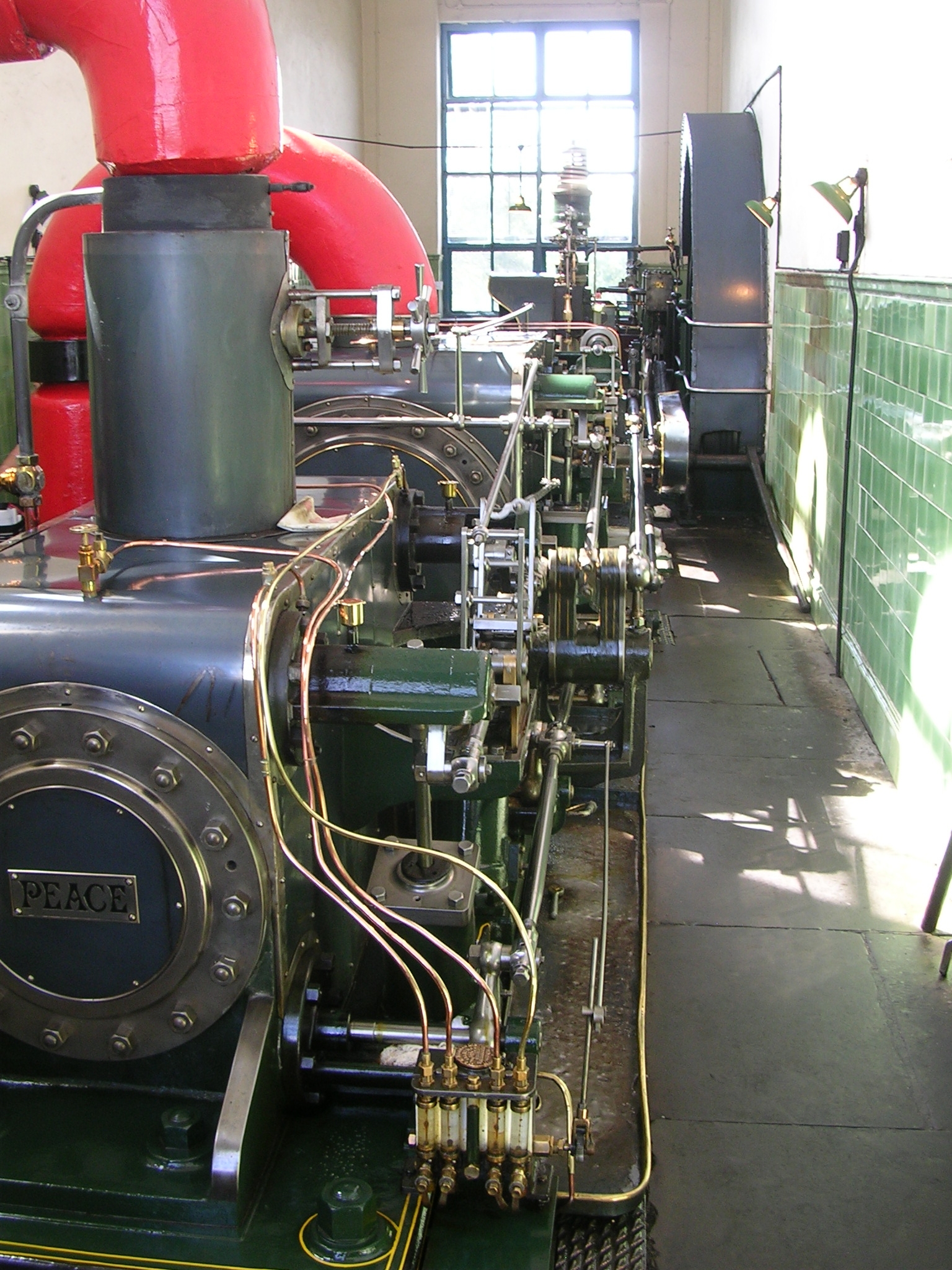
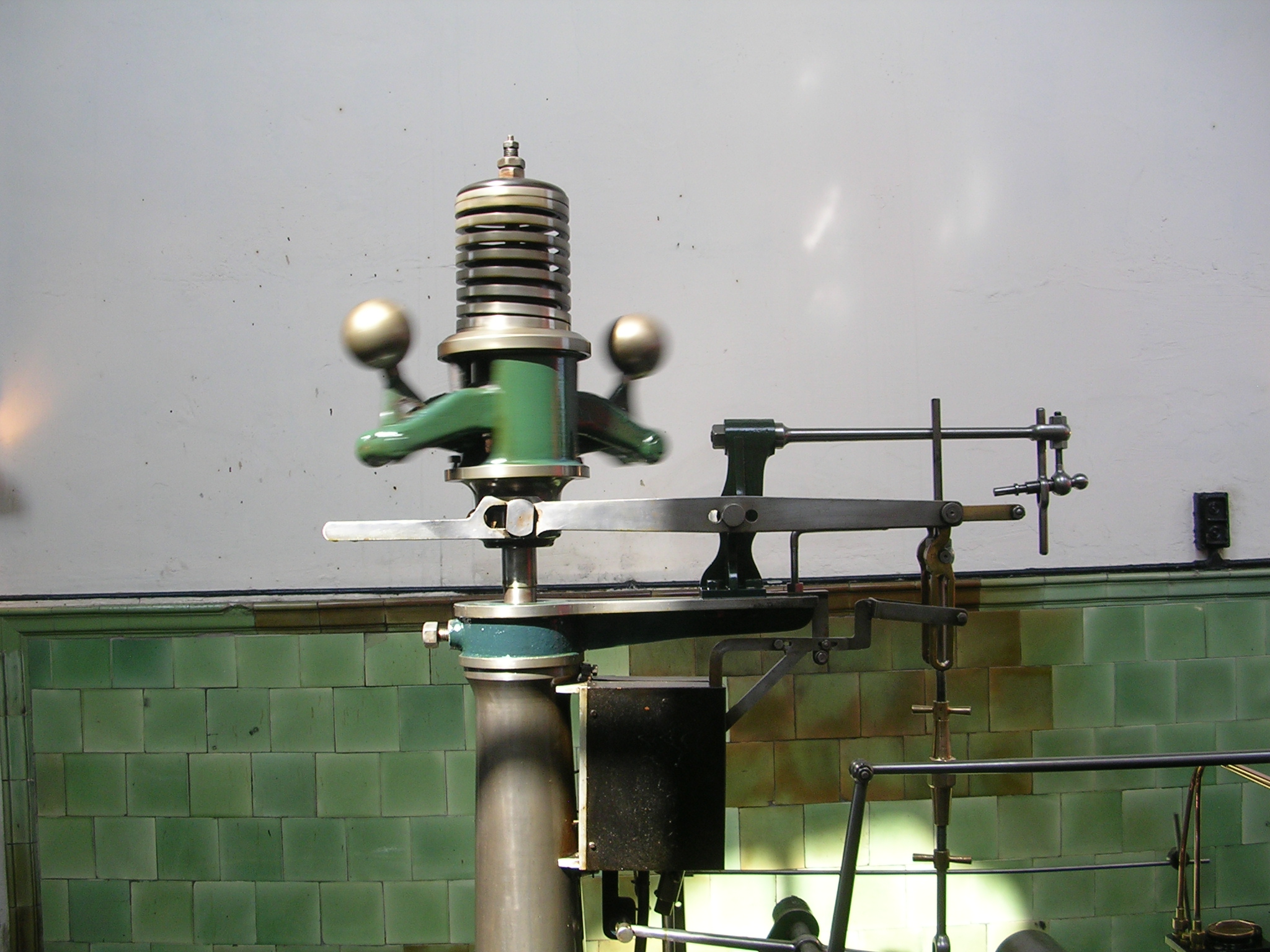
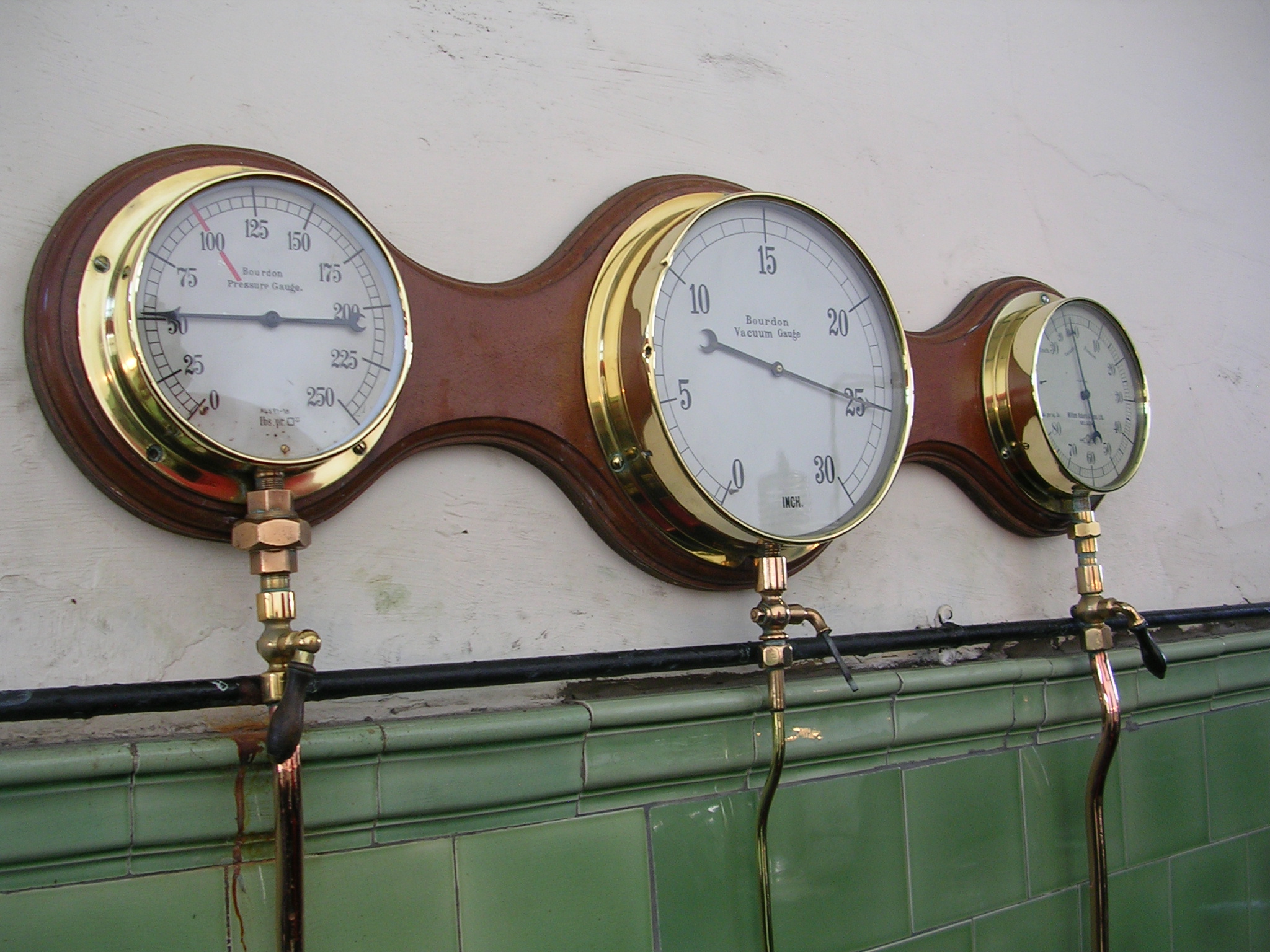 In the weaving shed, the noise was deafening, although only a couple of the 320 looms were actually operating:
In the weaving shed, the noise was deafening, although only a couple of the 320 looms were actually operating: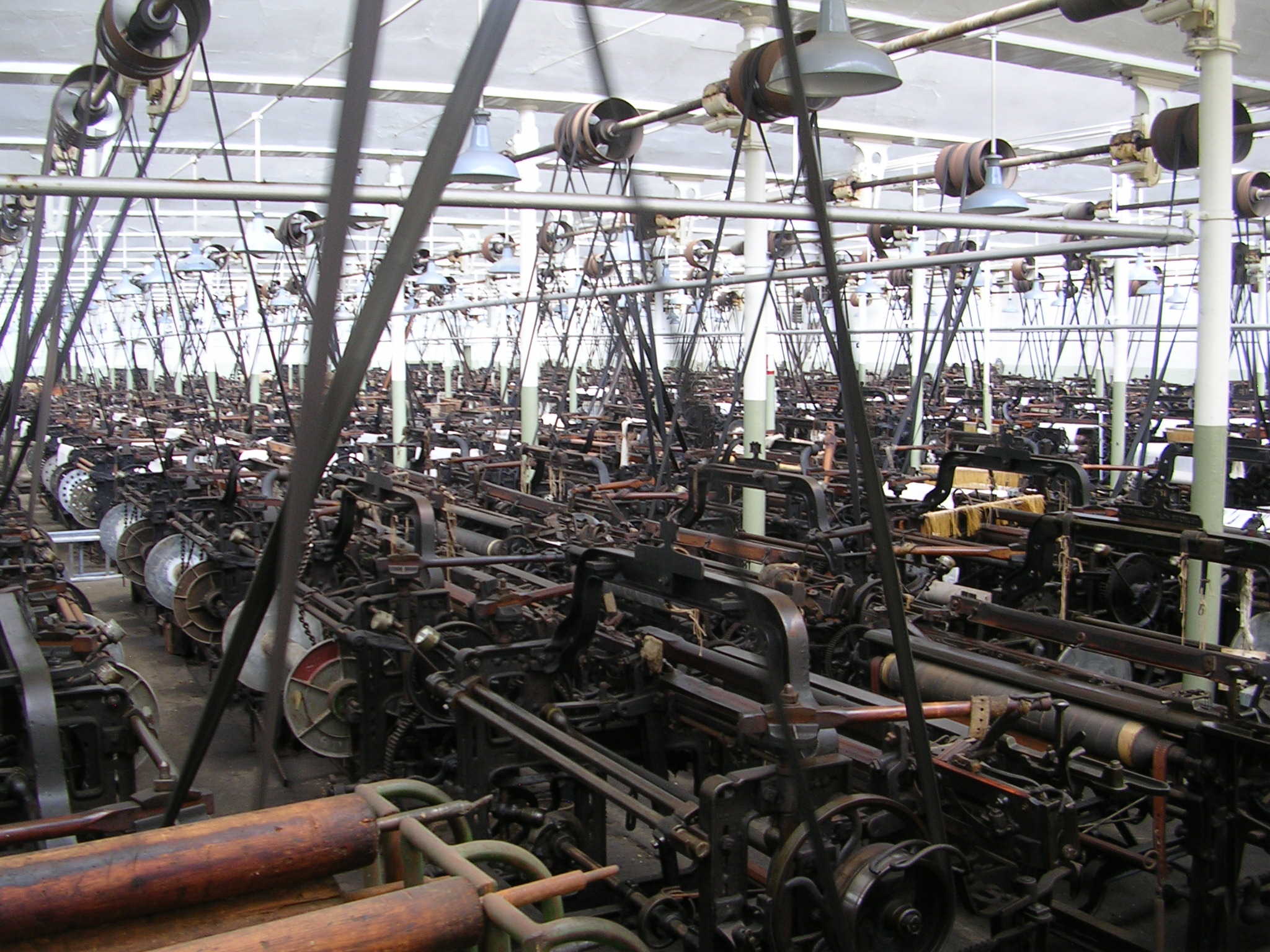
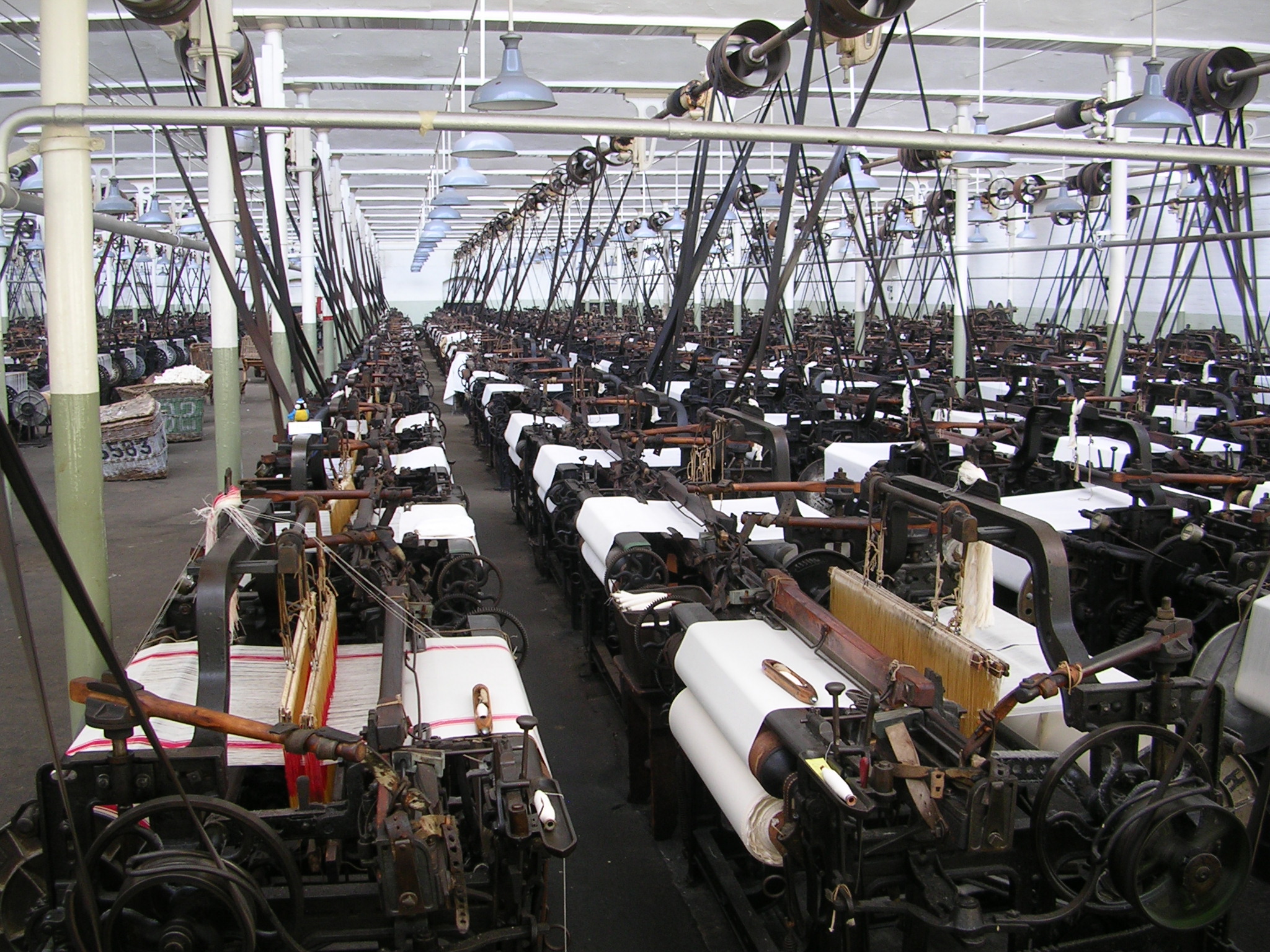
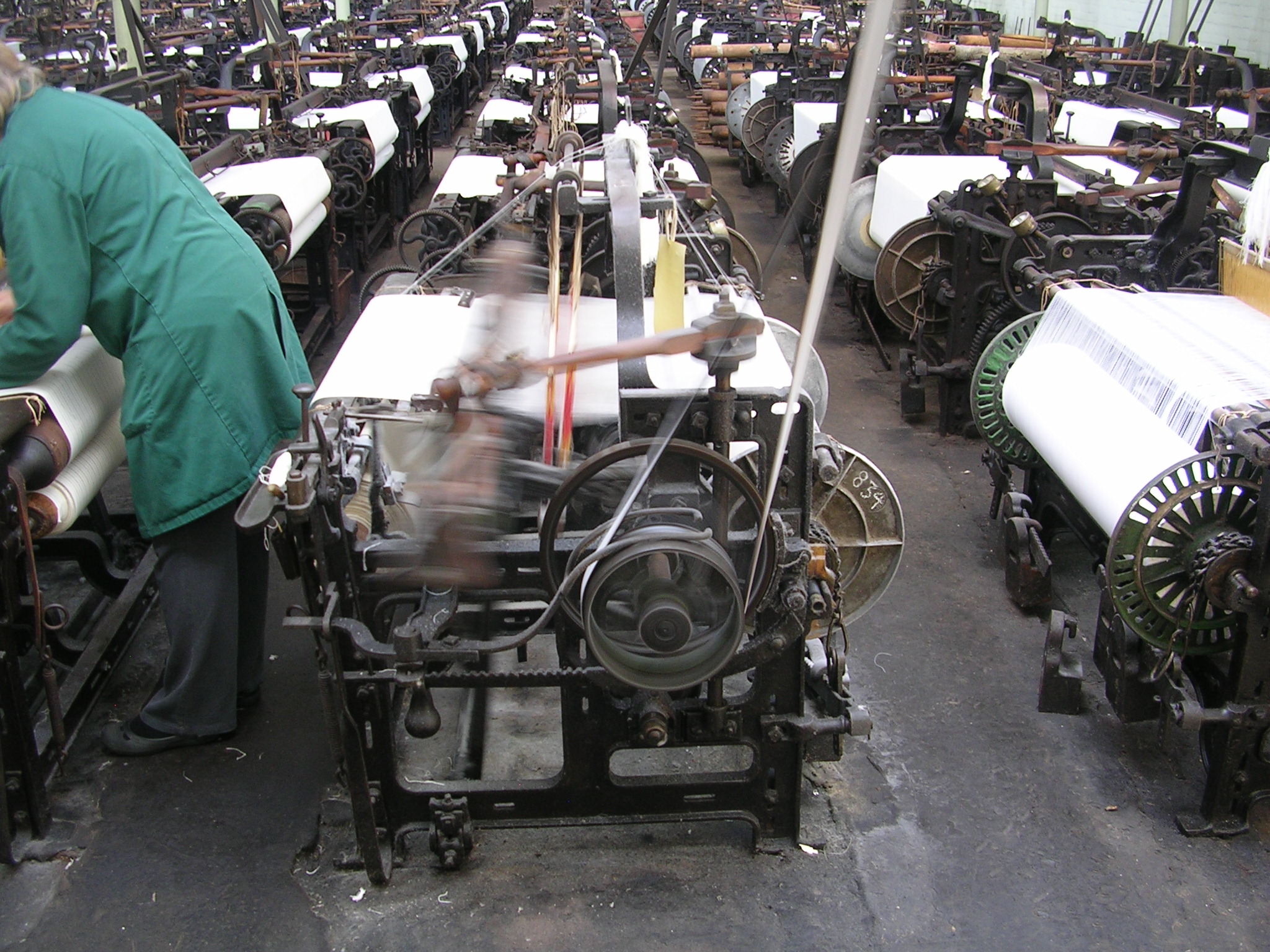 The boiler house contains two boilers, only one of which is now used, and it was down to the skill of the stoker here that we hadn’t seen any smoke when we arrived:
The boiler house contains two boilers, only one of which is now used, and it was down to the skill of the stoker here that we hadn’t seen any smoke when we arrived: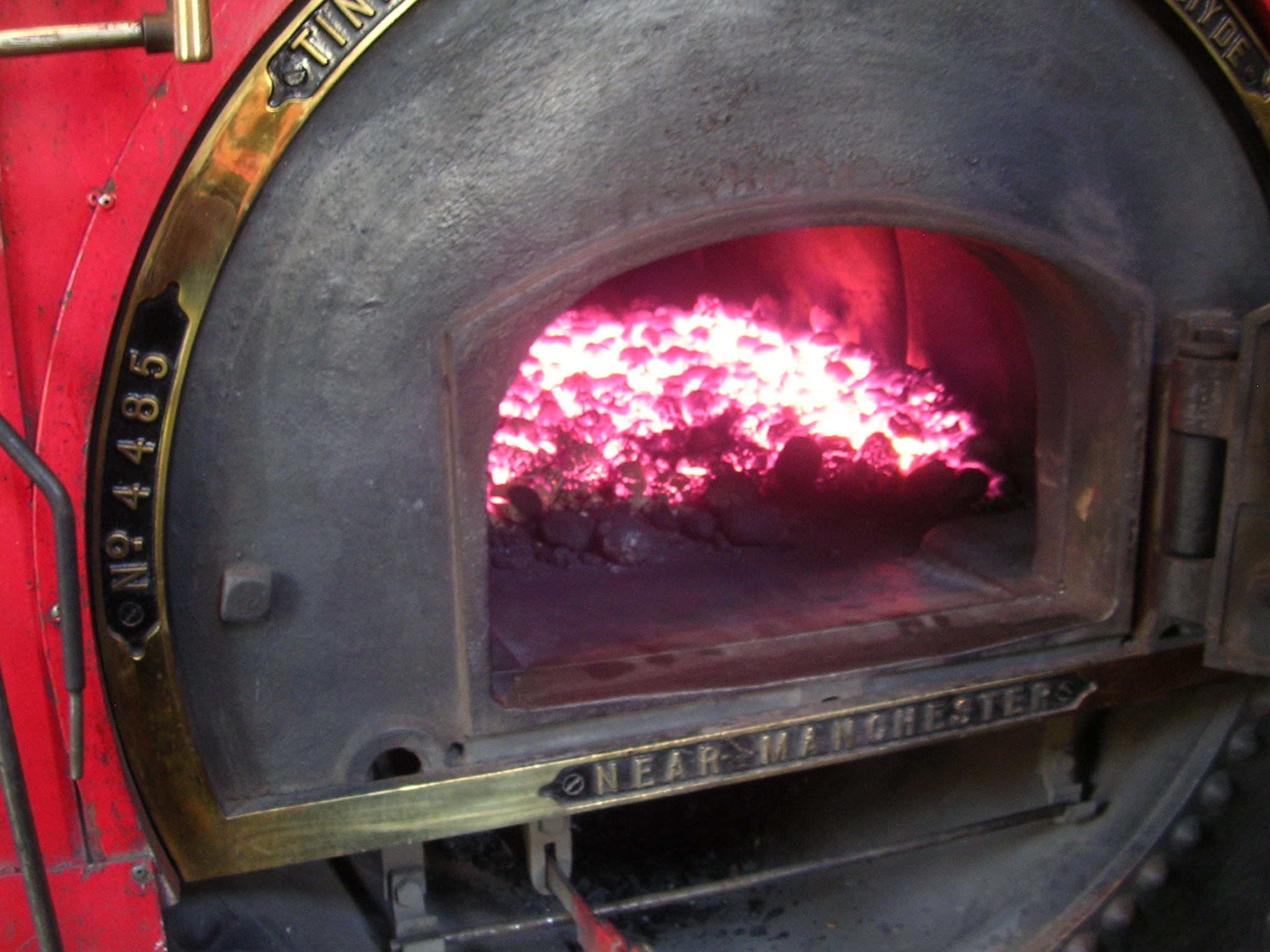
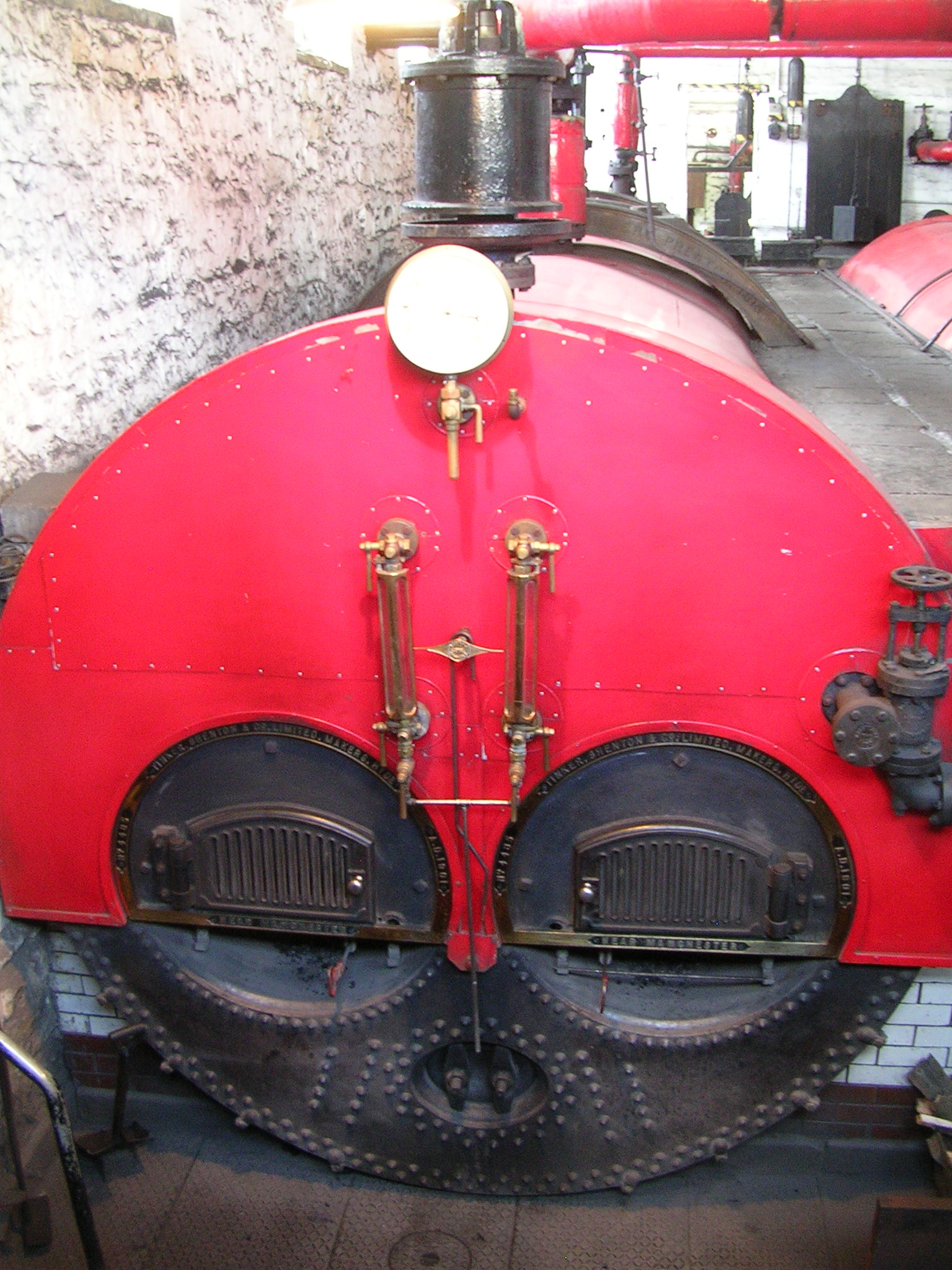
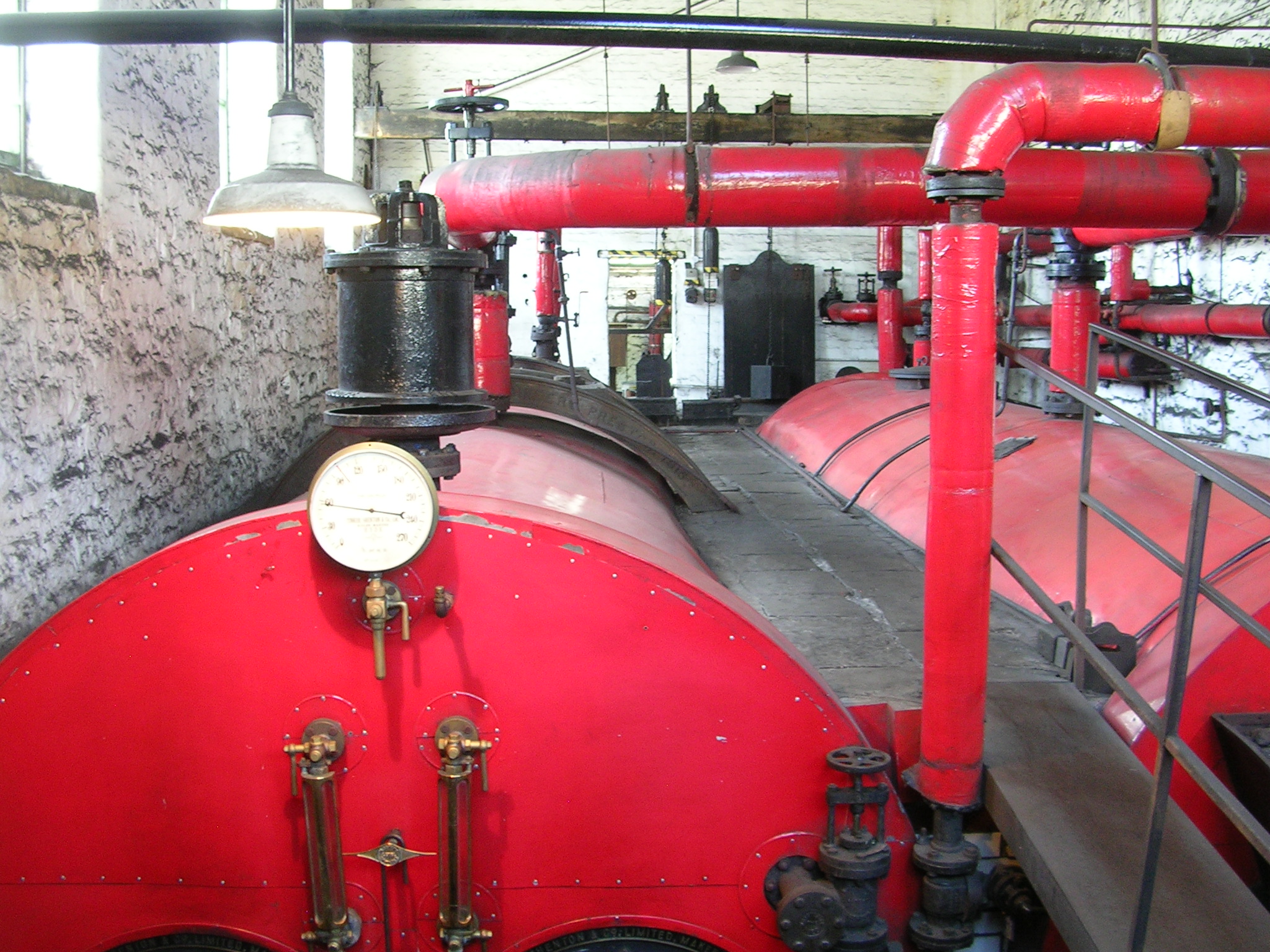 This is an excellent museum, with knowledgeable staff happy to explain the intricacies of the equipment on display. I was a little concerned that one of the reasons for visiting was that Lancashire Council has announced the museum will close in September. Pleasingly, while we were visiting, the local paper published a story that negotiations are under way to save it. It would be a great shame to lose the last surviving 19th century steam powered weaving mill. Highly recommended.
This is an excellent museum, with knowledgeable staff happy to explain the intricacies of the equipment on display. I was a little concerned that one of the reasons for visiting was that Lancashire Council has announced the museum will close in September. Pleasingly, while we were visiting, the local paper published a story that negotiations are under way to save it. It would be a great shame to lose the last surviving 19th century steam powered weaving mill. Highly recommended.
Big Engineering
Some pictures from recent visits:
Leigh Spinners Mill
This mill, located in the town of Leigh, dates back to 1913 and is still working manufacturing flooring products: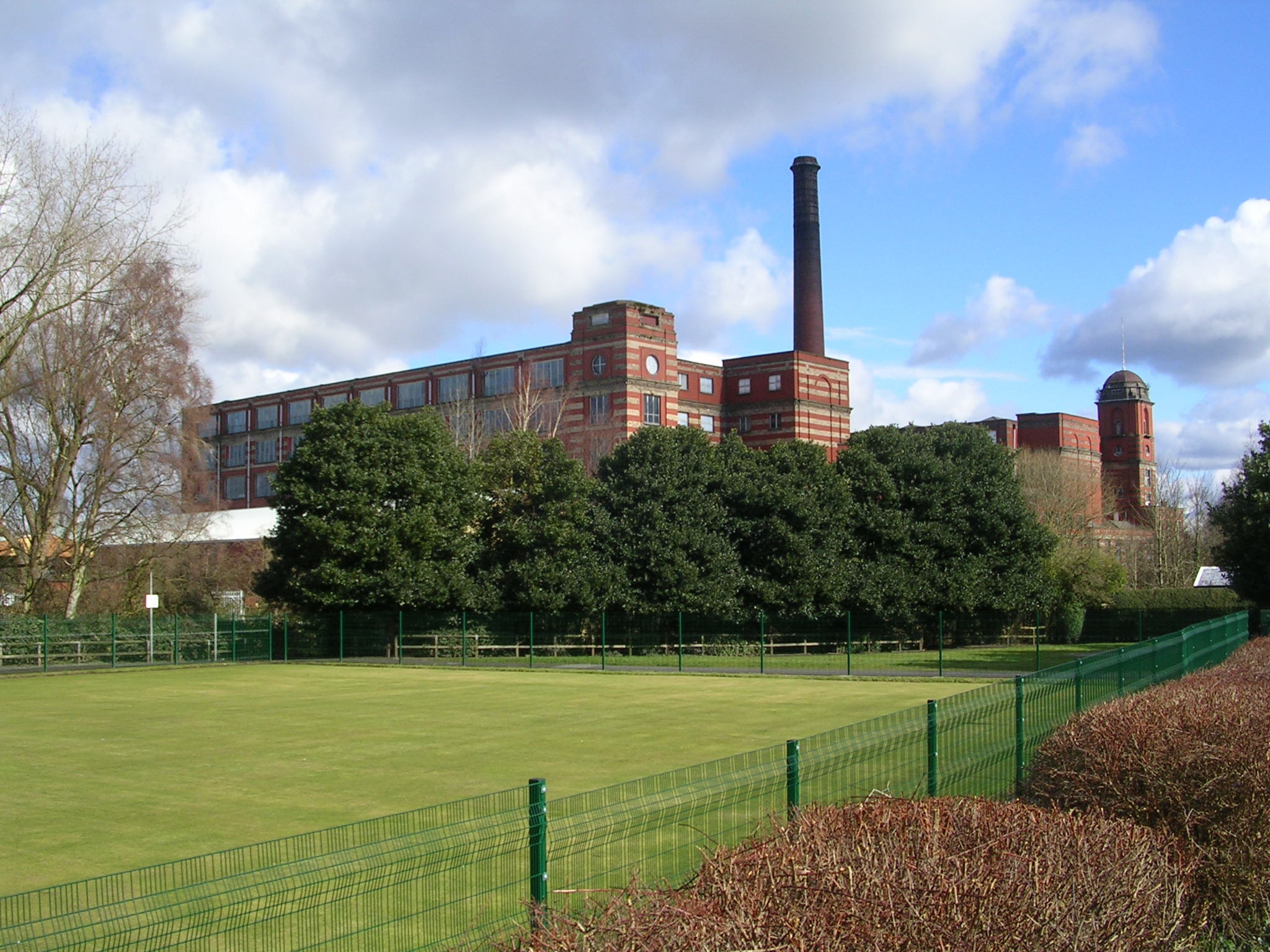
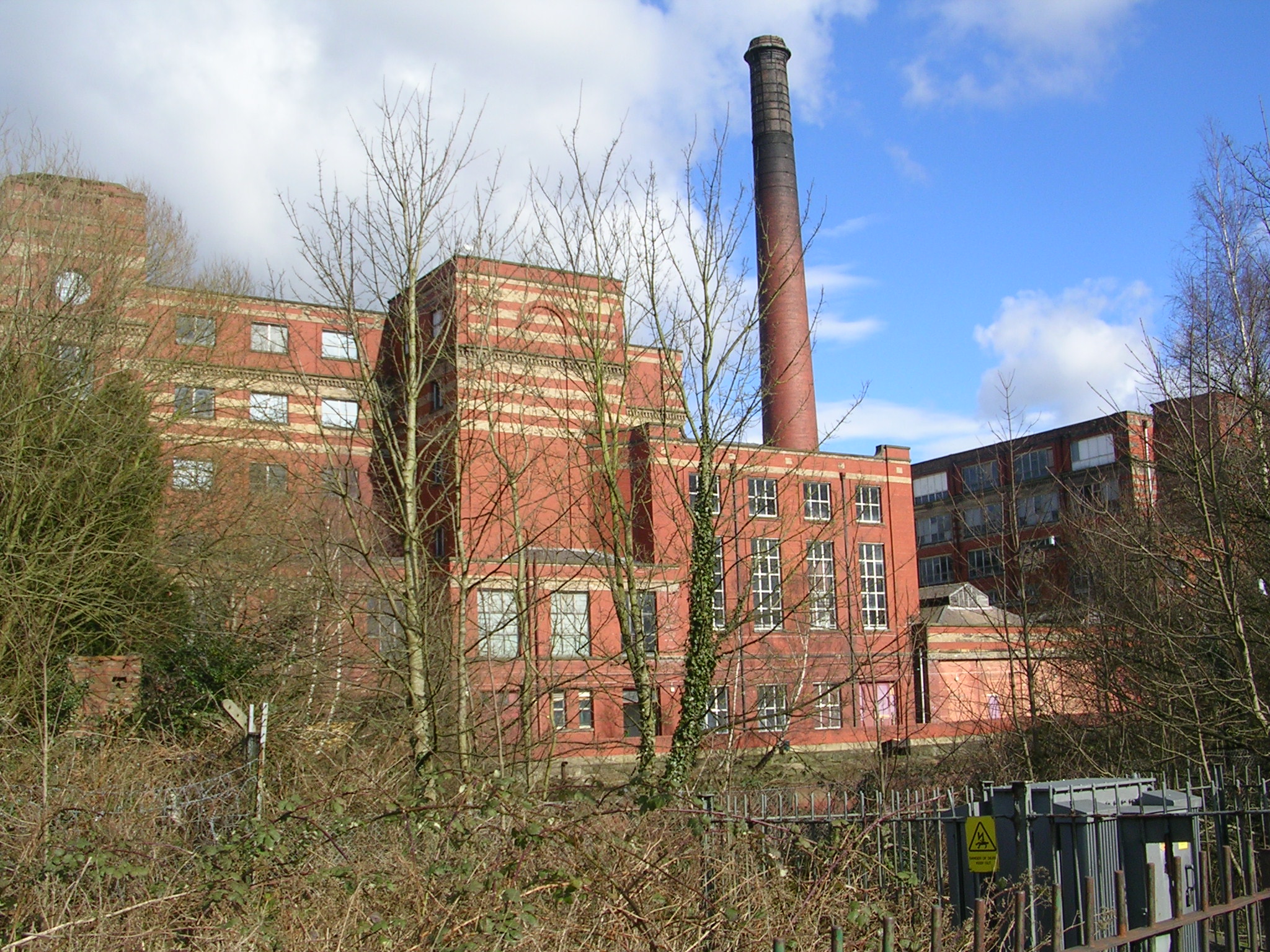 The mill engine dating from 1925 was abandoned for many years but is now in the process of being restored. The two cylinders are named Mayor and Mayoress, for some reason:
The mill engine dating from 1925 was abandoned for many years but is now in the process of being restored. The two cylinders are named Mayor and Mayoress, for some reason: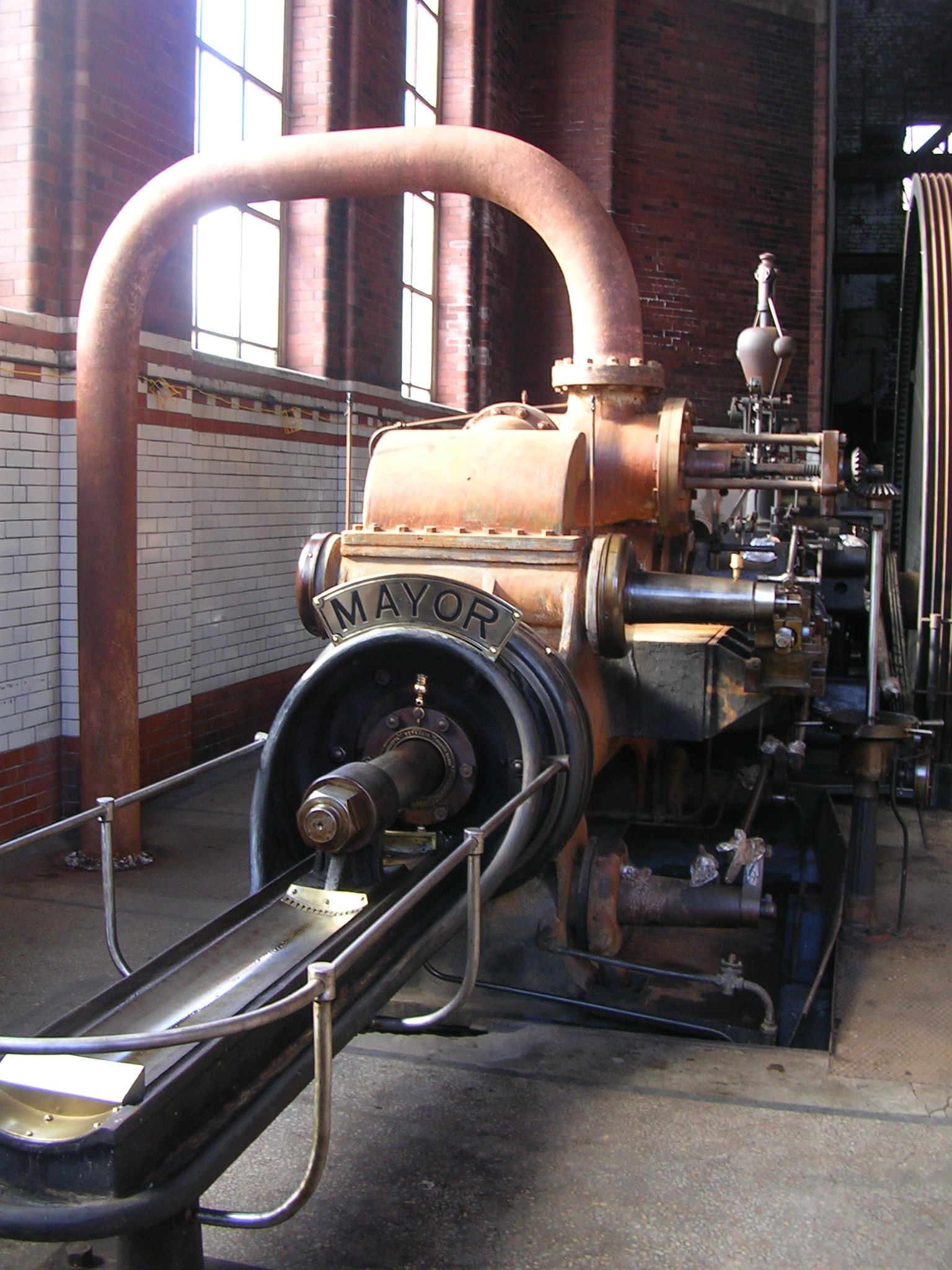
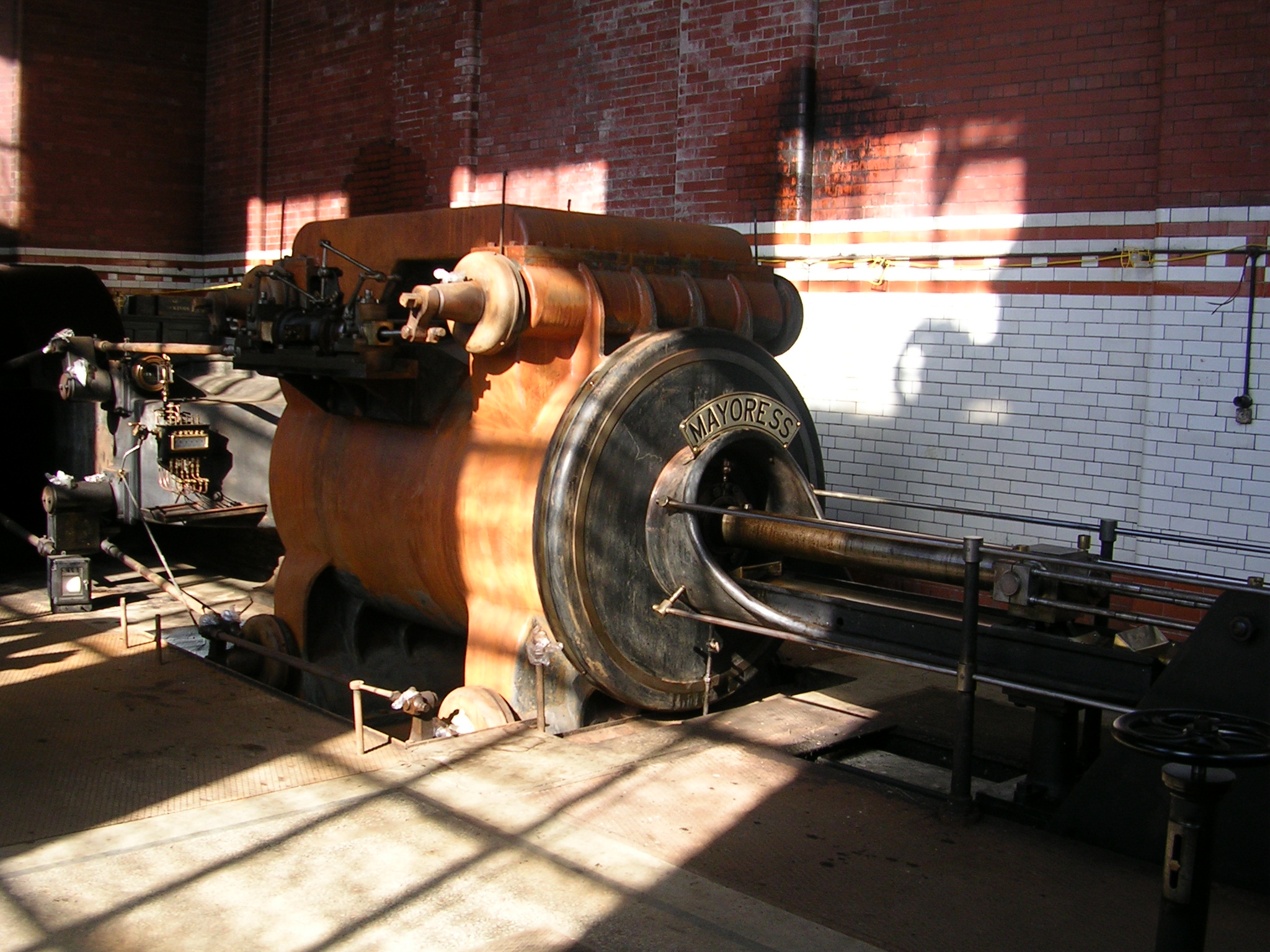
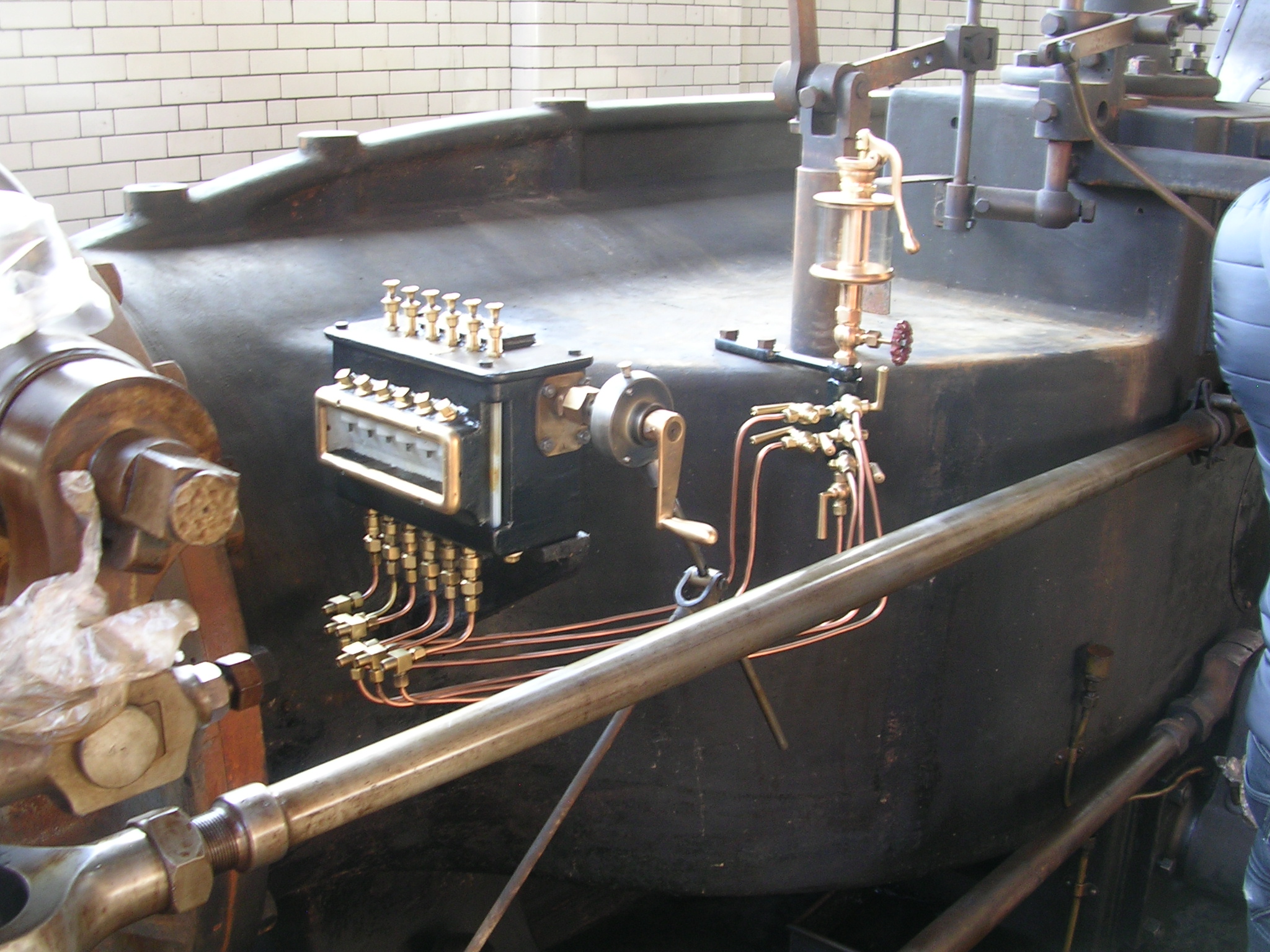
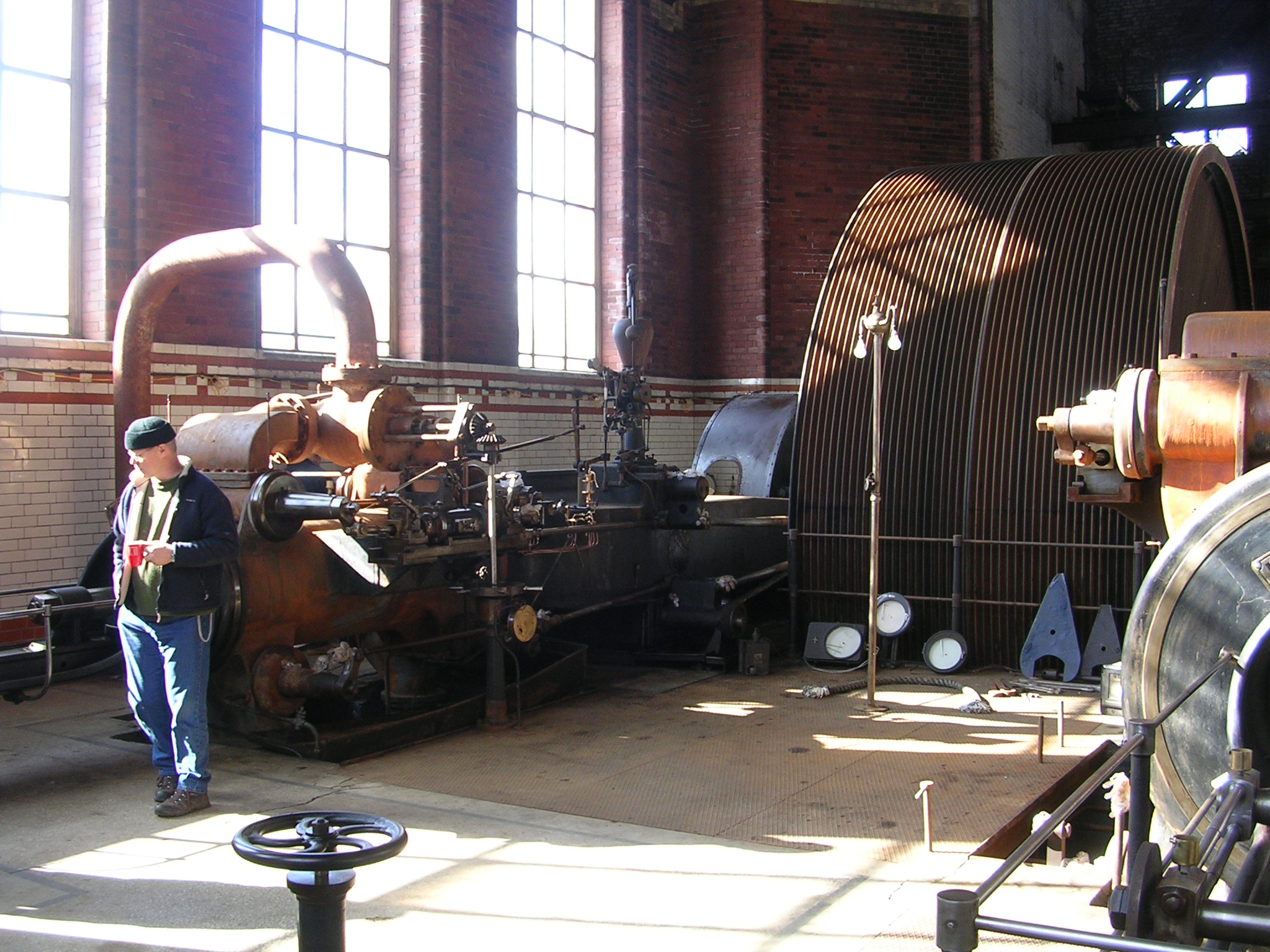
Astley Green Colliery
A short stroll along the Bridgewater Canal from Leigh Spinners and in the village of Astley Green there’s the now-unusual sight of colliery headgear: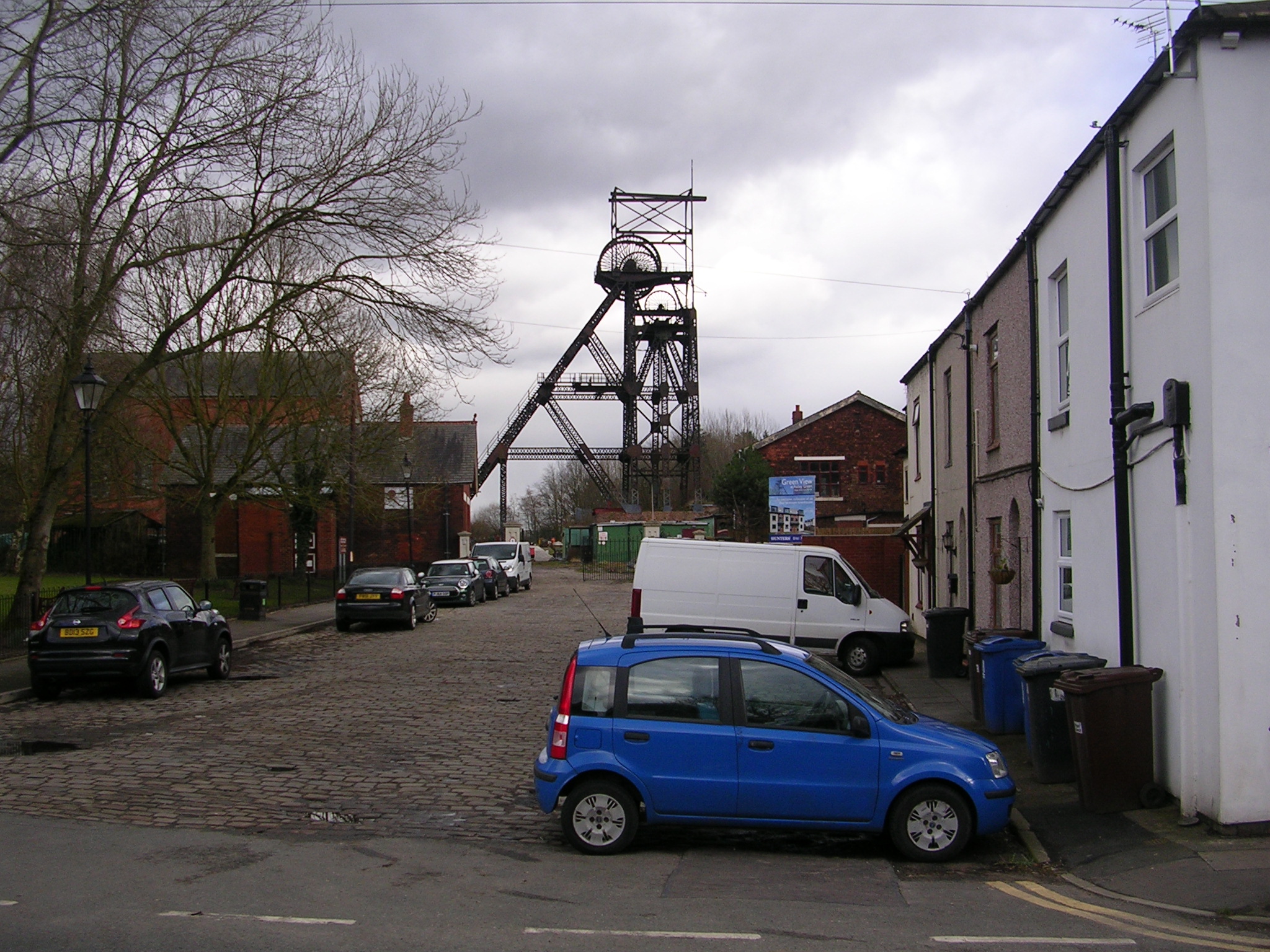 The colliery opened in 1912 and the last coal was wound in 1970. Some of the buildings remain, including the winding house:
The colliery opened in 1912 and the last coal was wound in 1970. Some of the buildings remain, including the winding house: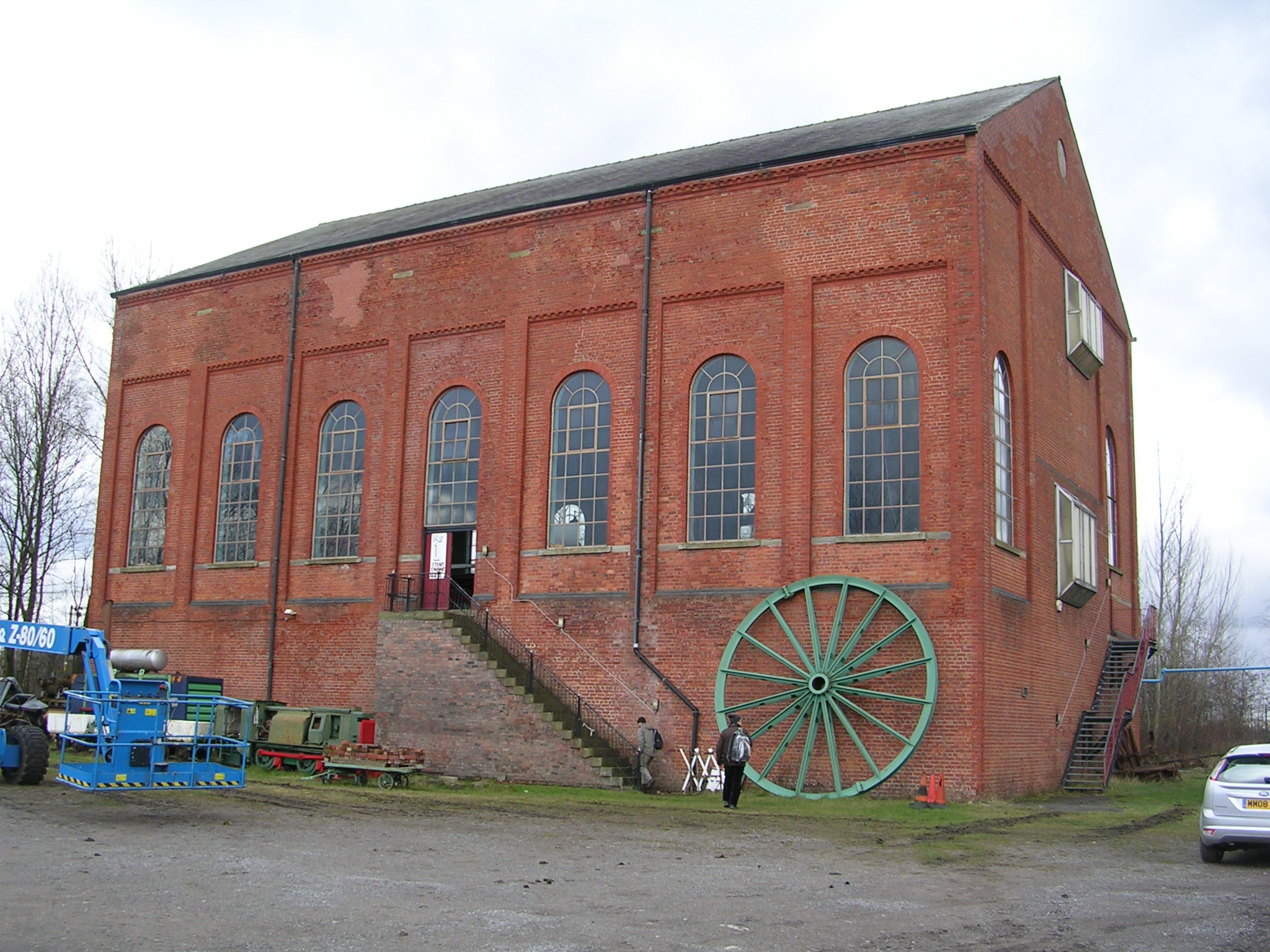 And inside, another great steam engine is being restored. This one was installed in 1912:
And inside, another great steam engine is being restored. This one was installed in 1912: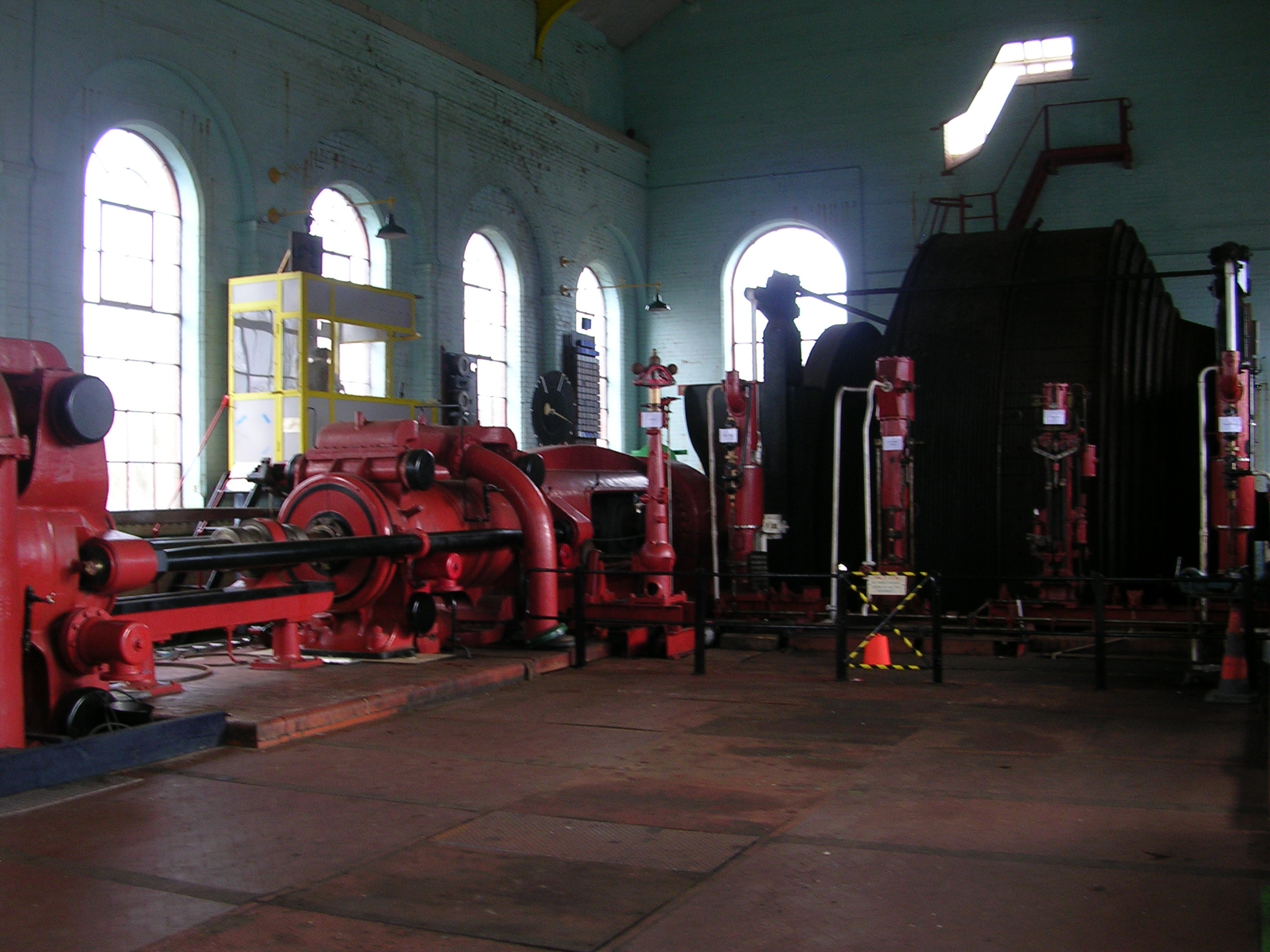
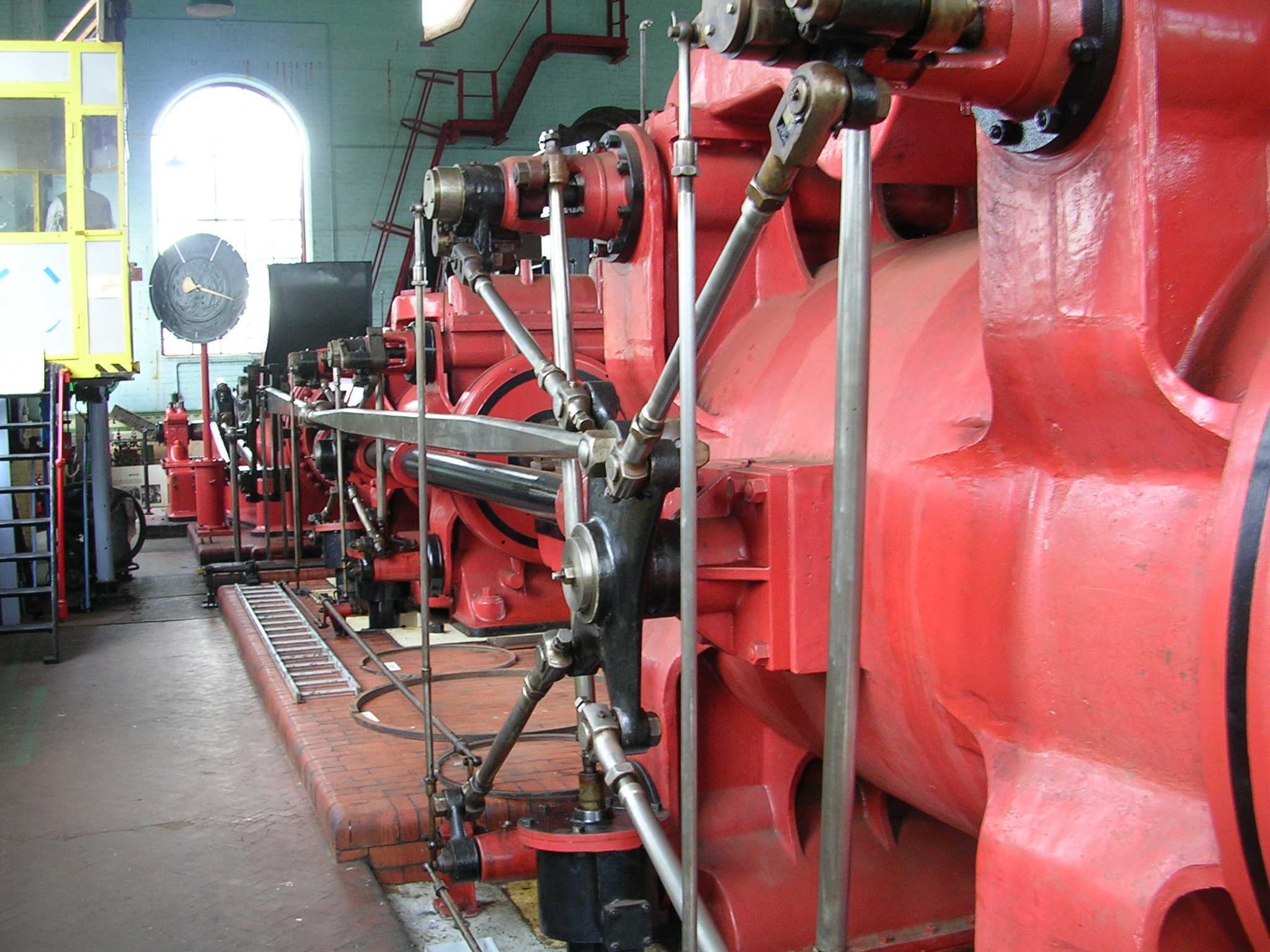
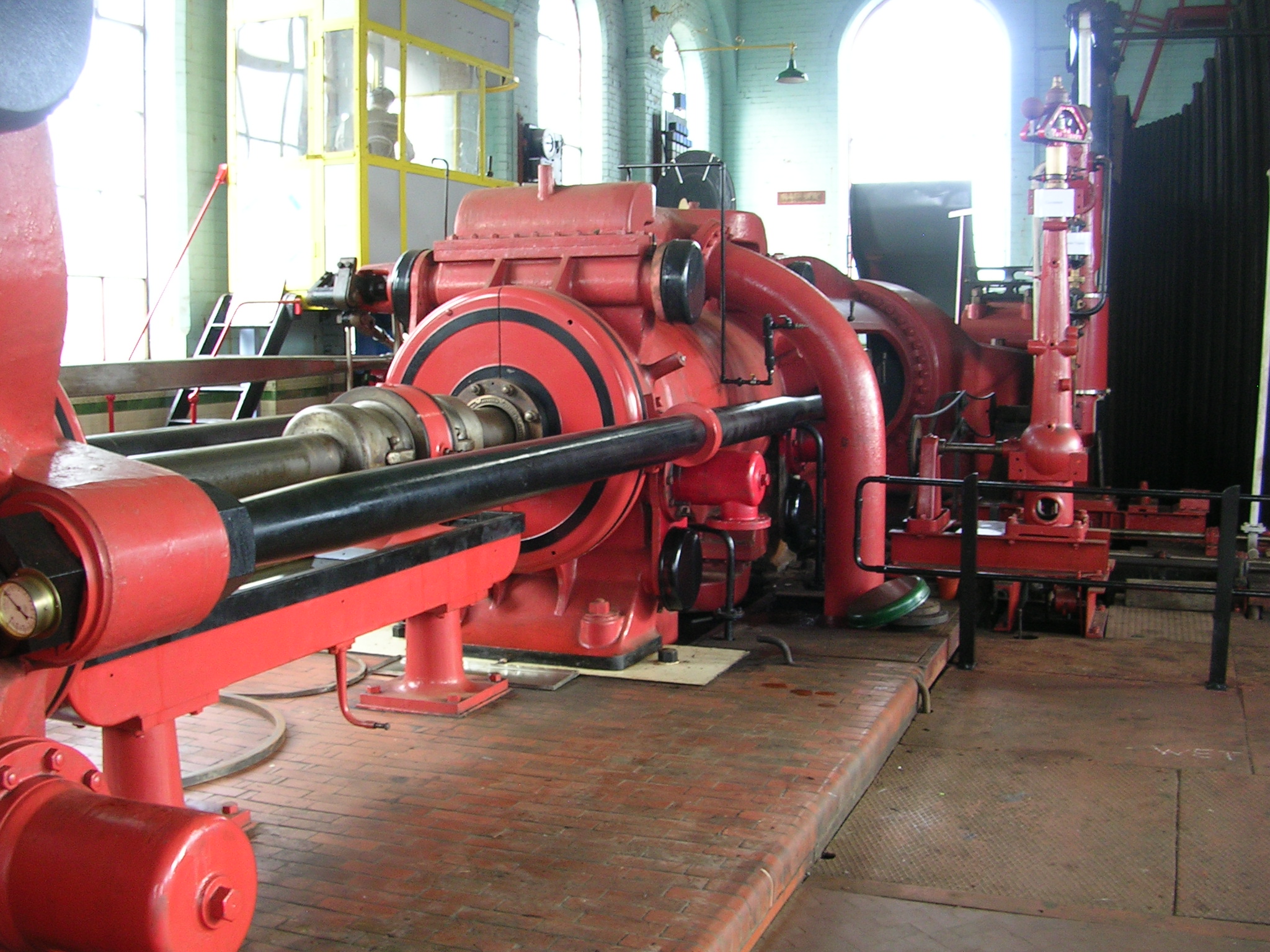
Jodrell Bank
I was intending to start this section of the page with the phrase “Moving on to modern technology…” but, thinking about it, the big dish at Jodrell Bank was commissioned in 1957, so only 32 years after the engine at Leigh; and both of the steam engines above were still working hard when the Lovell Telescope was built.
Anyway, I haven’t been to Jodrell Bank since 1983 so it was time to go back and see the imposing telescope again.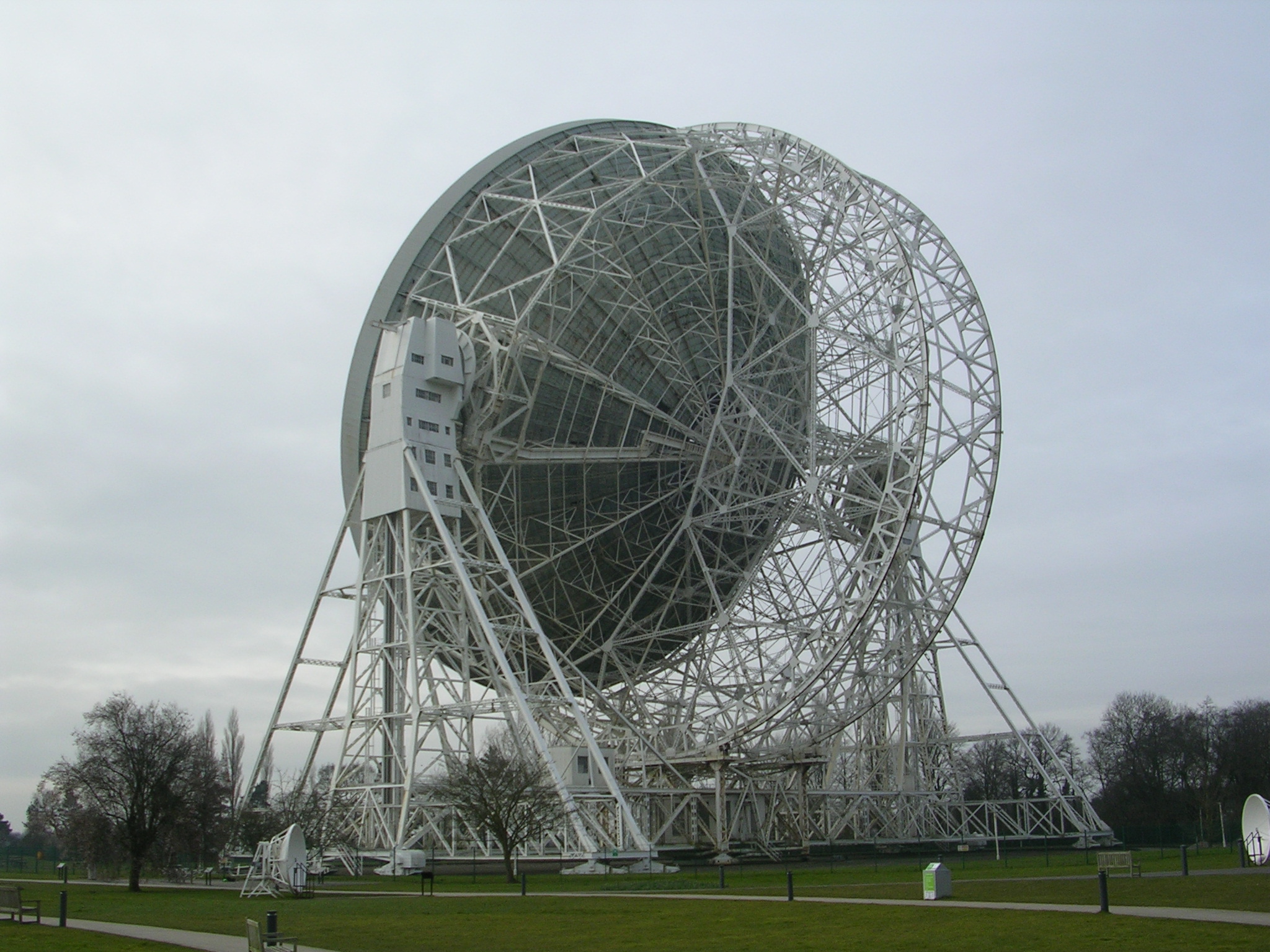
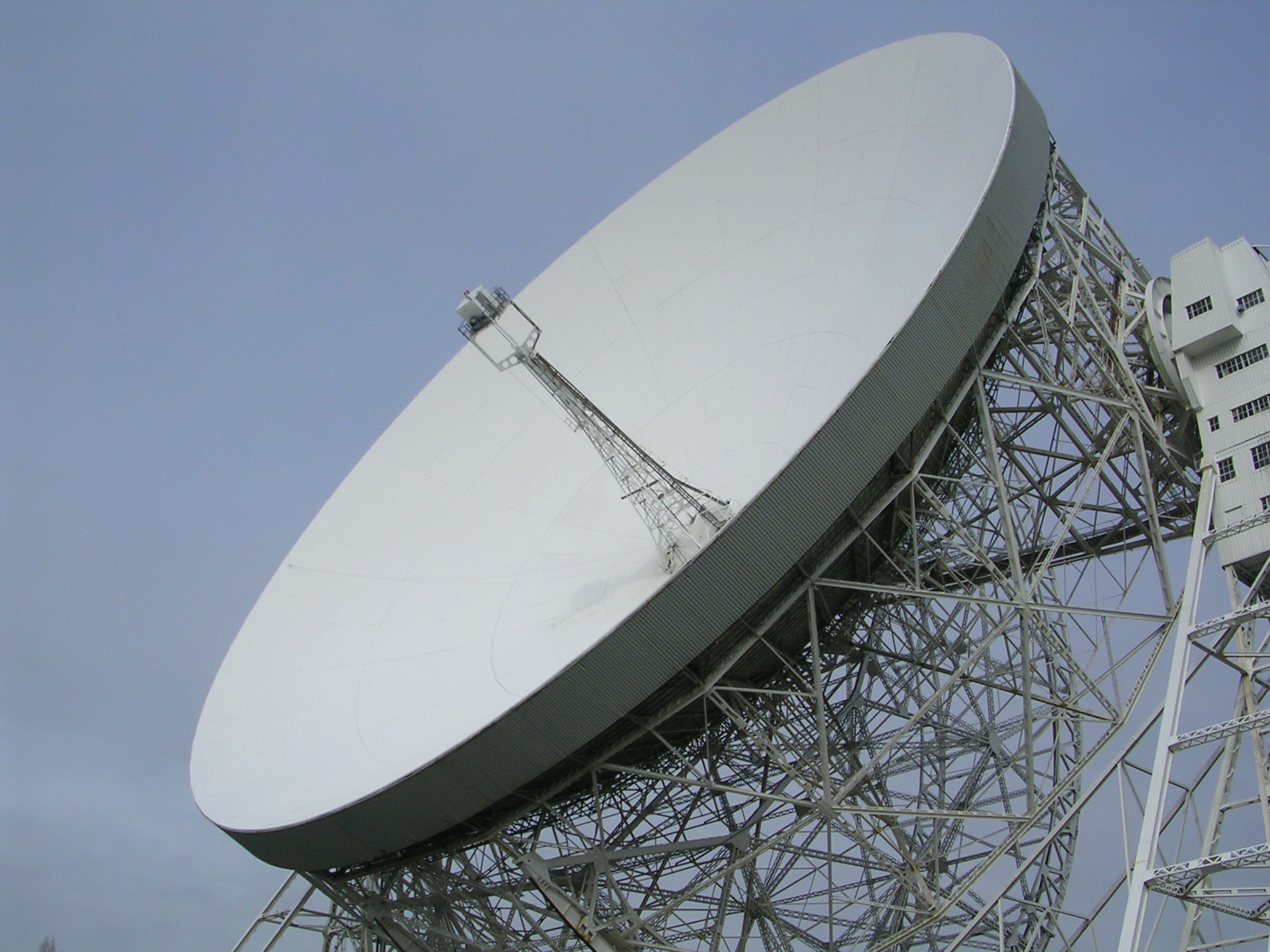
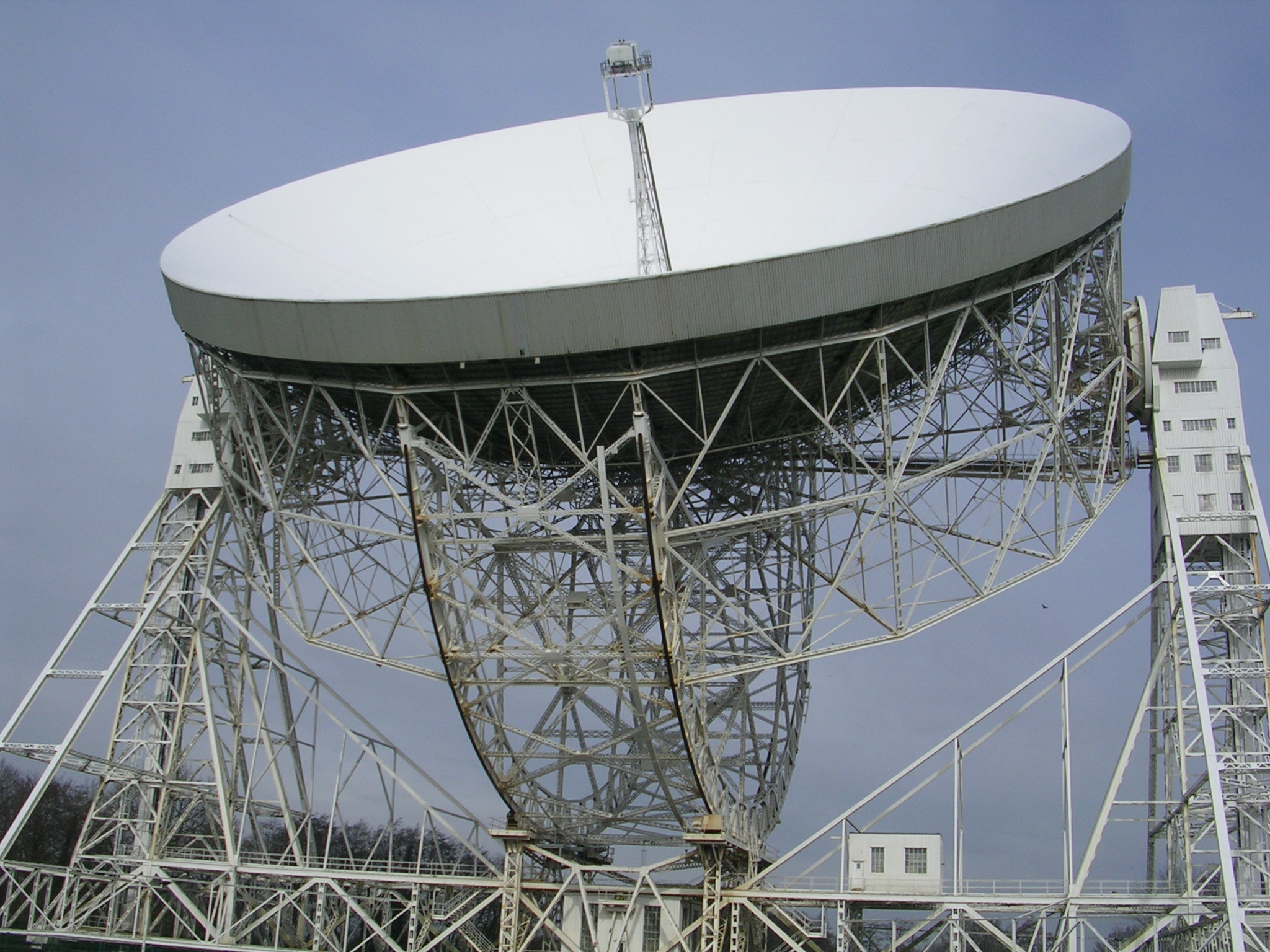 Also on site is the “Mark II”:
Also on site is the “Mark II”: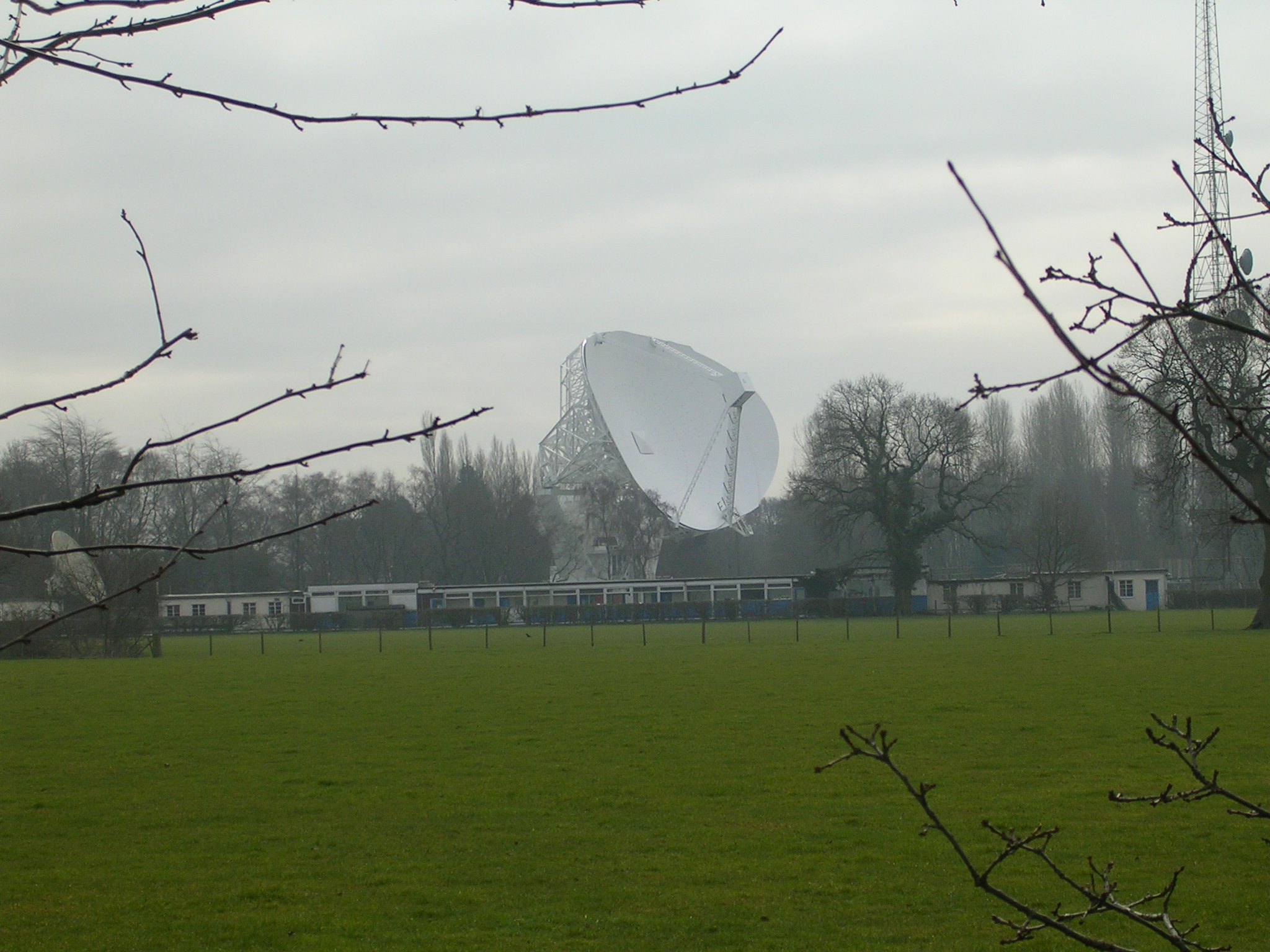 And a smaller unit, the “42ft”:
And a smaller unit, the “42ft”: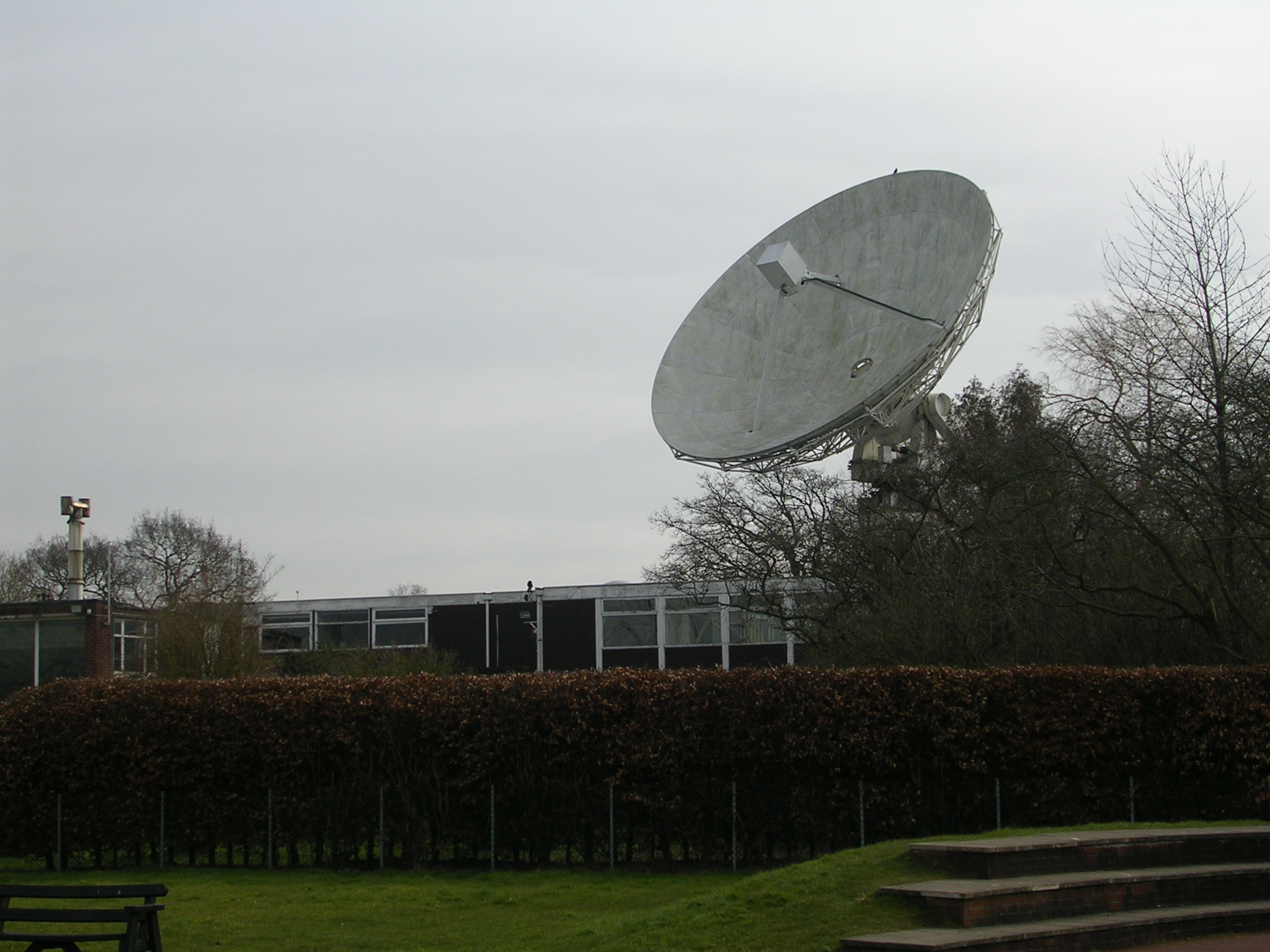 I ended my visit with a stroll in the extensive gardens.
I ended my visit with a stroll in the extensive gardens.
Poppies Two
I was lucky enough to be in London last year to see the amazing display of 888,246 ceramic poppies filling the moat of the Tower of London. Most of them were sold for charity, but the display raised such public interest that a small quantity were retained and sent on a national tour. One year on it’s Liverpool’s turn, and the poppies were installed at the front of St George’s Hall, just in time for Remembrance Sunday.
I must add a note of congratulation to the organisers of this display: It would have been so easy to keep the crowds a safe distance from the poppies using the usual ugly steel fencing panels. It was a stroke of genius to use sandbags instead.
Forty Years of Station Design
Merseyrail Chocolate Stations
The Merseyrail system was created in the 1970s, and the new underground stations all featured the same design style, with what was then new and high-tech plastic panelling, in a chocolate brown colour. These have survived forty years of wear and tear remarkably well, but over the last year or so refurbishment of the stations has been under way, and soon the 70s panelling will be no more. It occurred to me the other day that Moorfields was the only example left so I went to take a few photos before it too is refurbished early next year: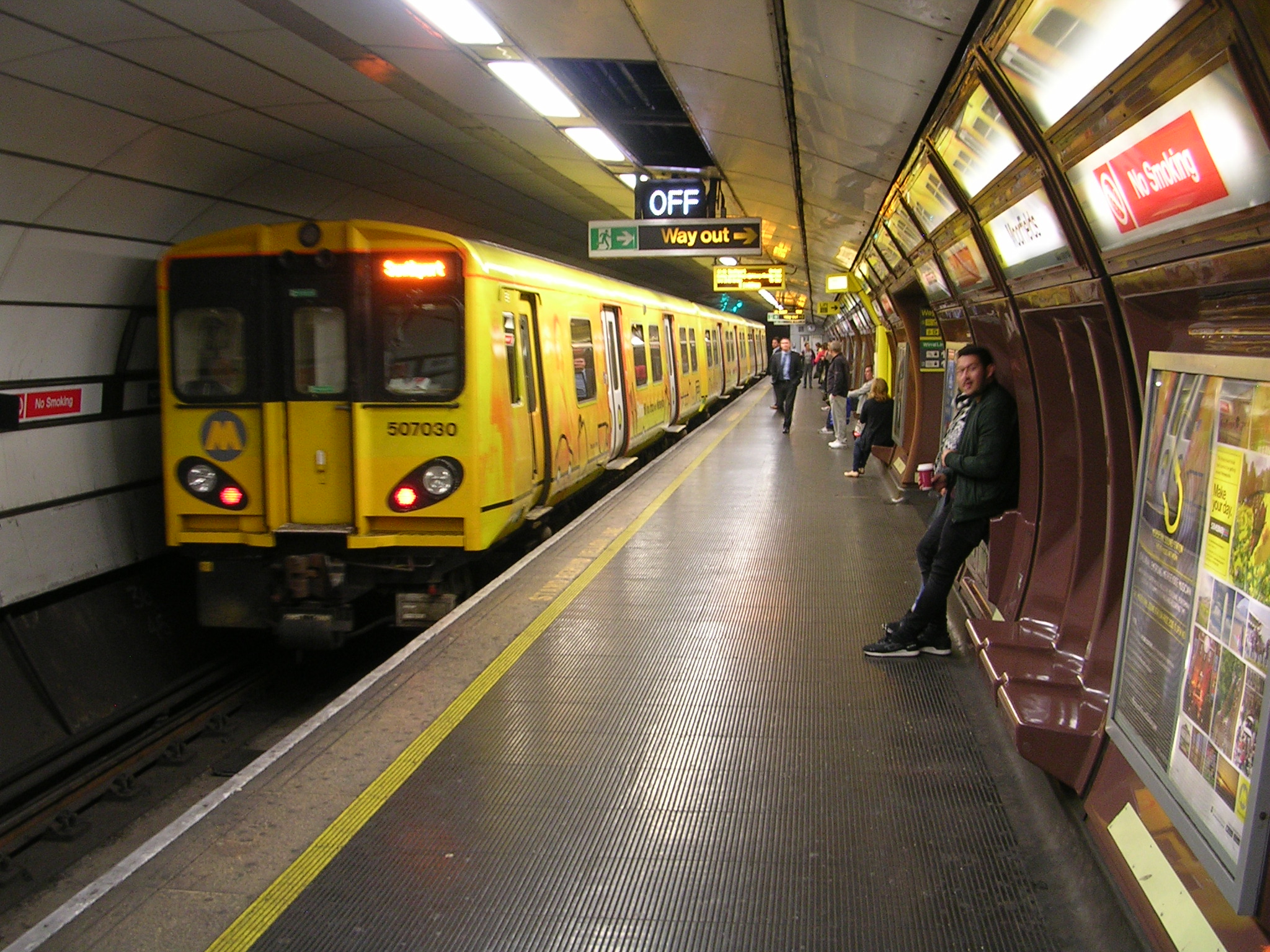
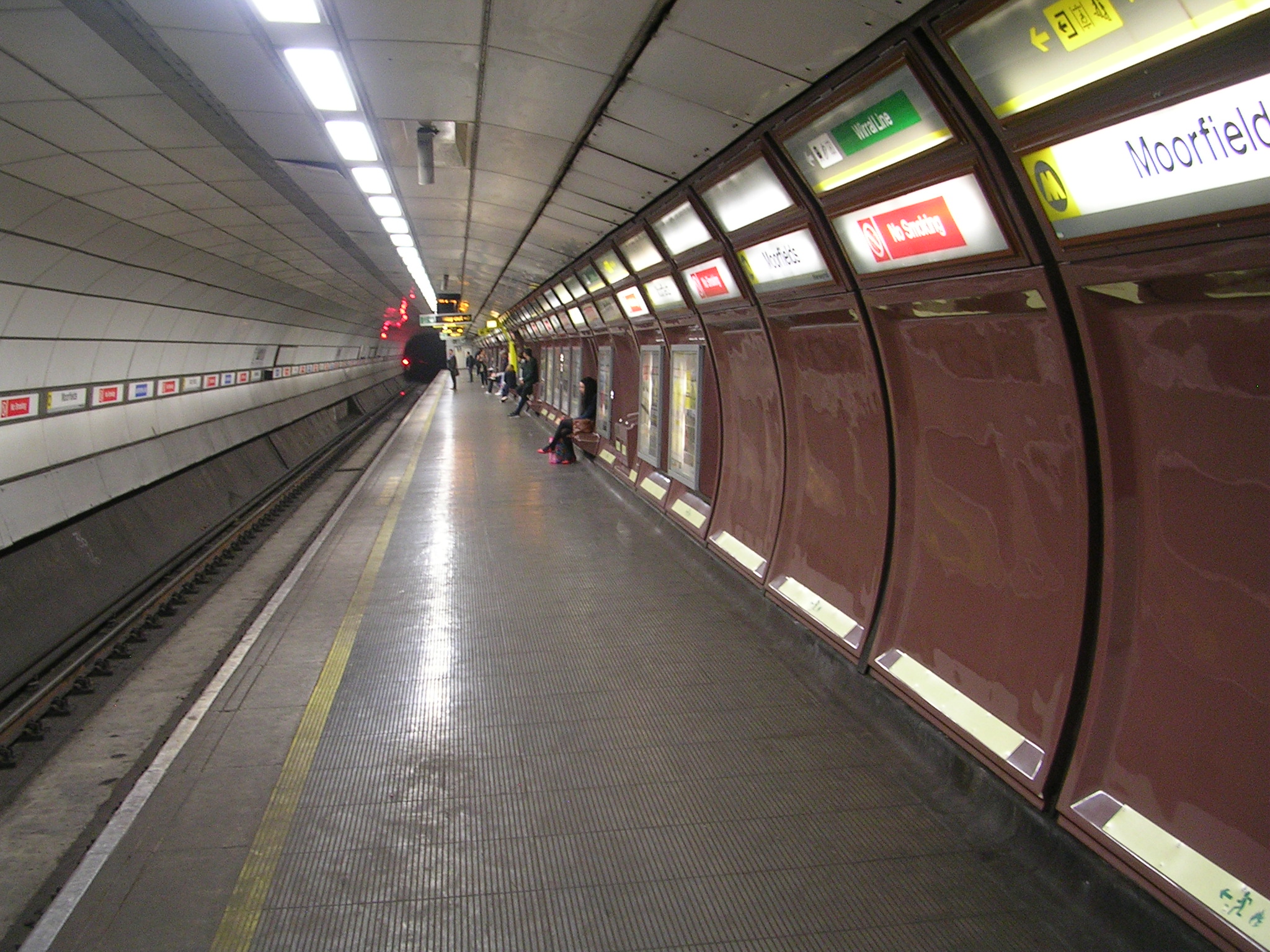 Note the former litter bins, which were plated over due to security concerns and are now used as perch seats:
Note the former litter bins, which were plated over due to security concerns and are now used as perch seats: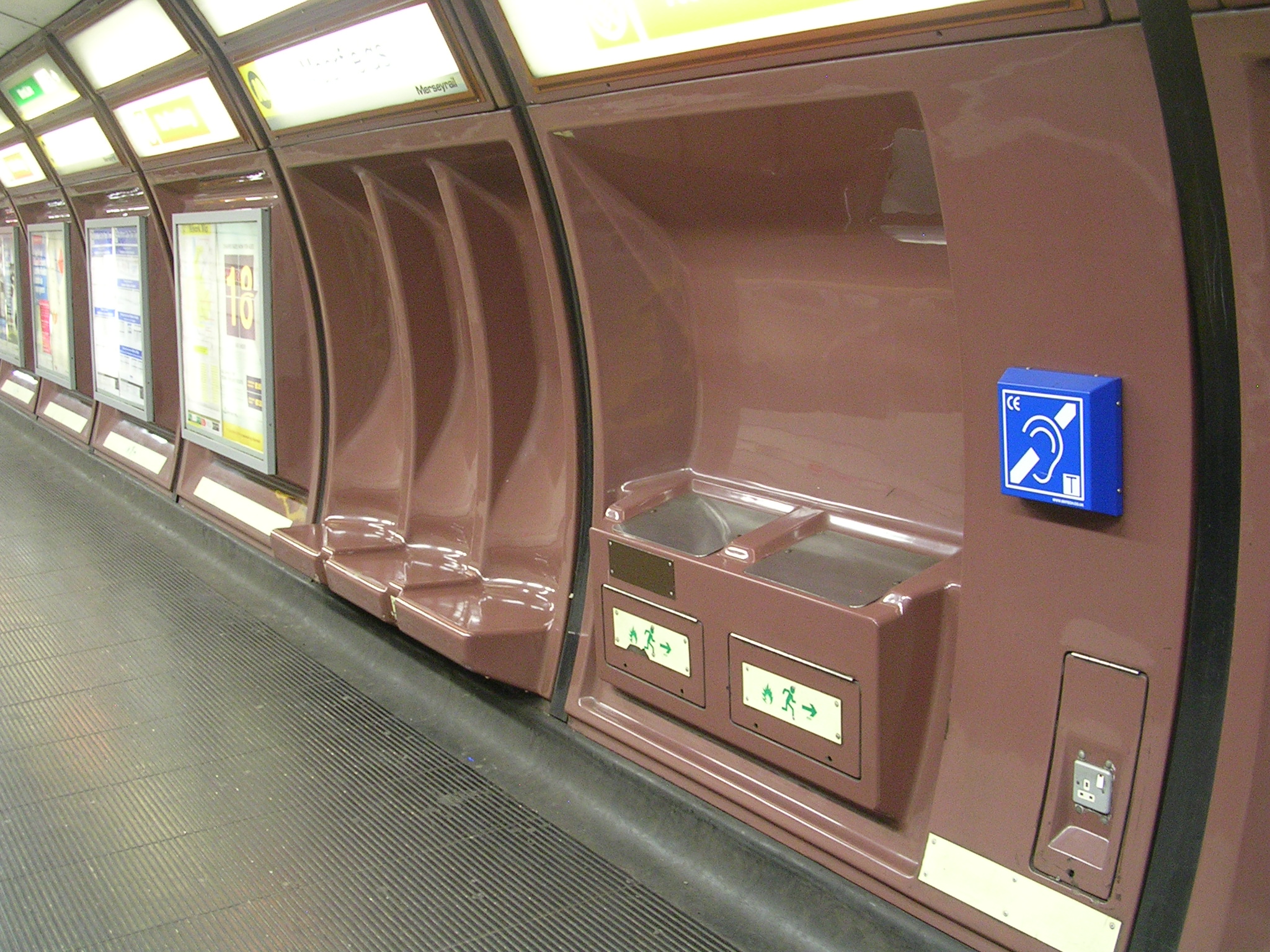
Manchester Victoria
Moving forward to the present day, the long neglected Manchester Victoria has just reached the end of a major refurbishment, and has gained a spectacular new roof replacing the previous very leaky one: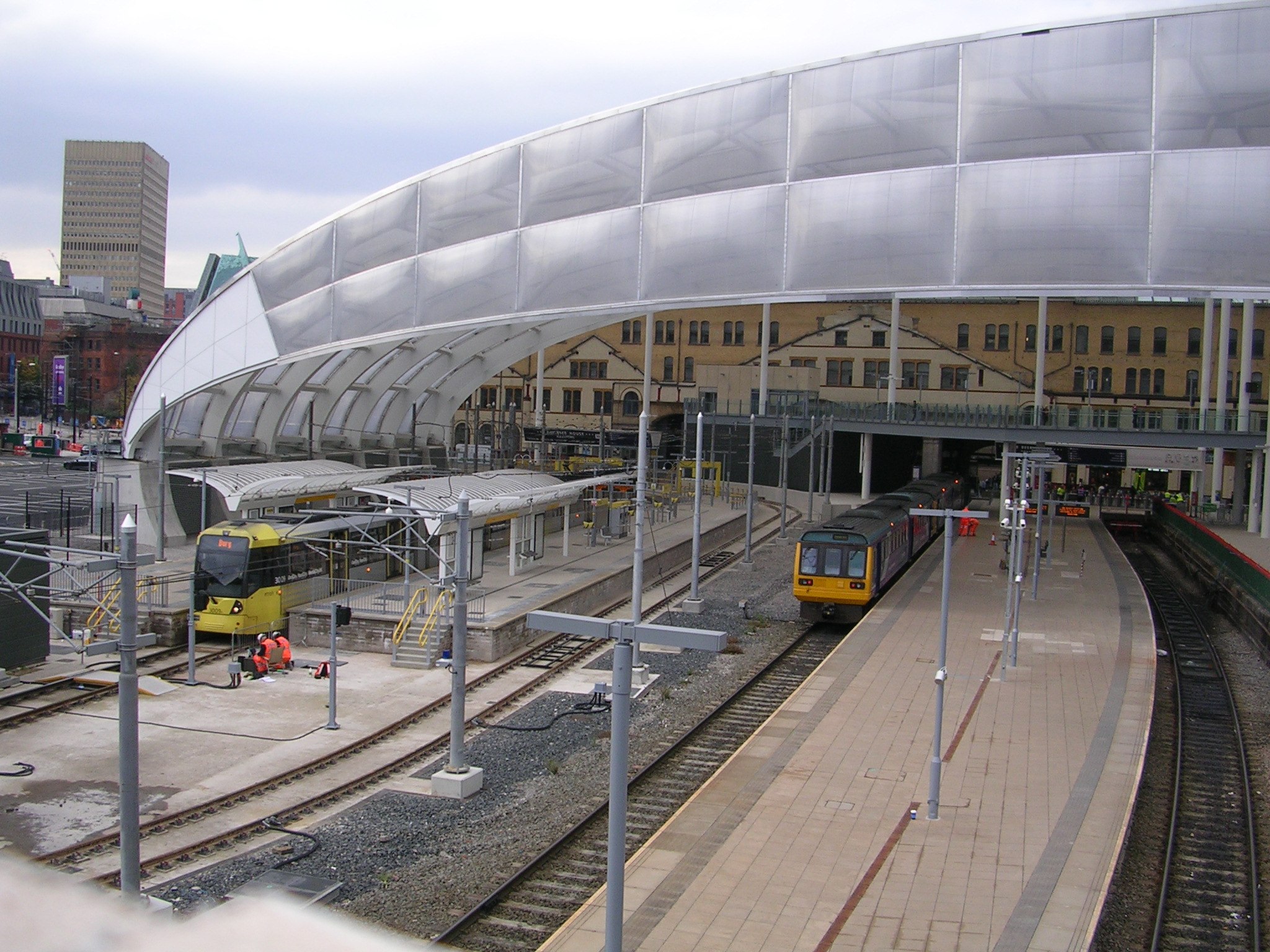
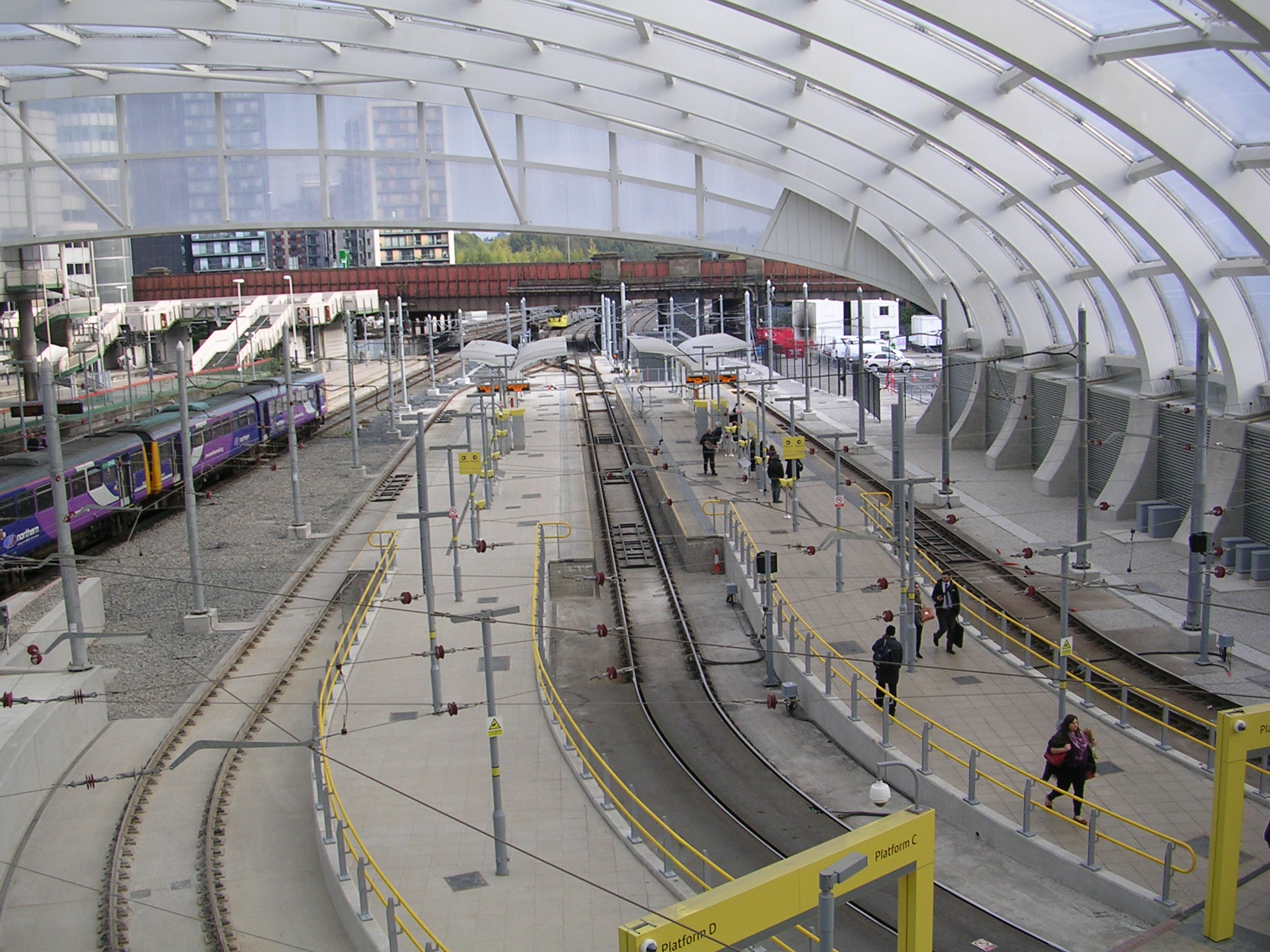 The refreshment rooms and other internal buildings have been preserved, although they look a little out of place under the new roof:
The refreshment rooms and other internal buildings have been preserved, although they look a little out of place under the new roof: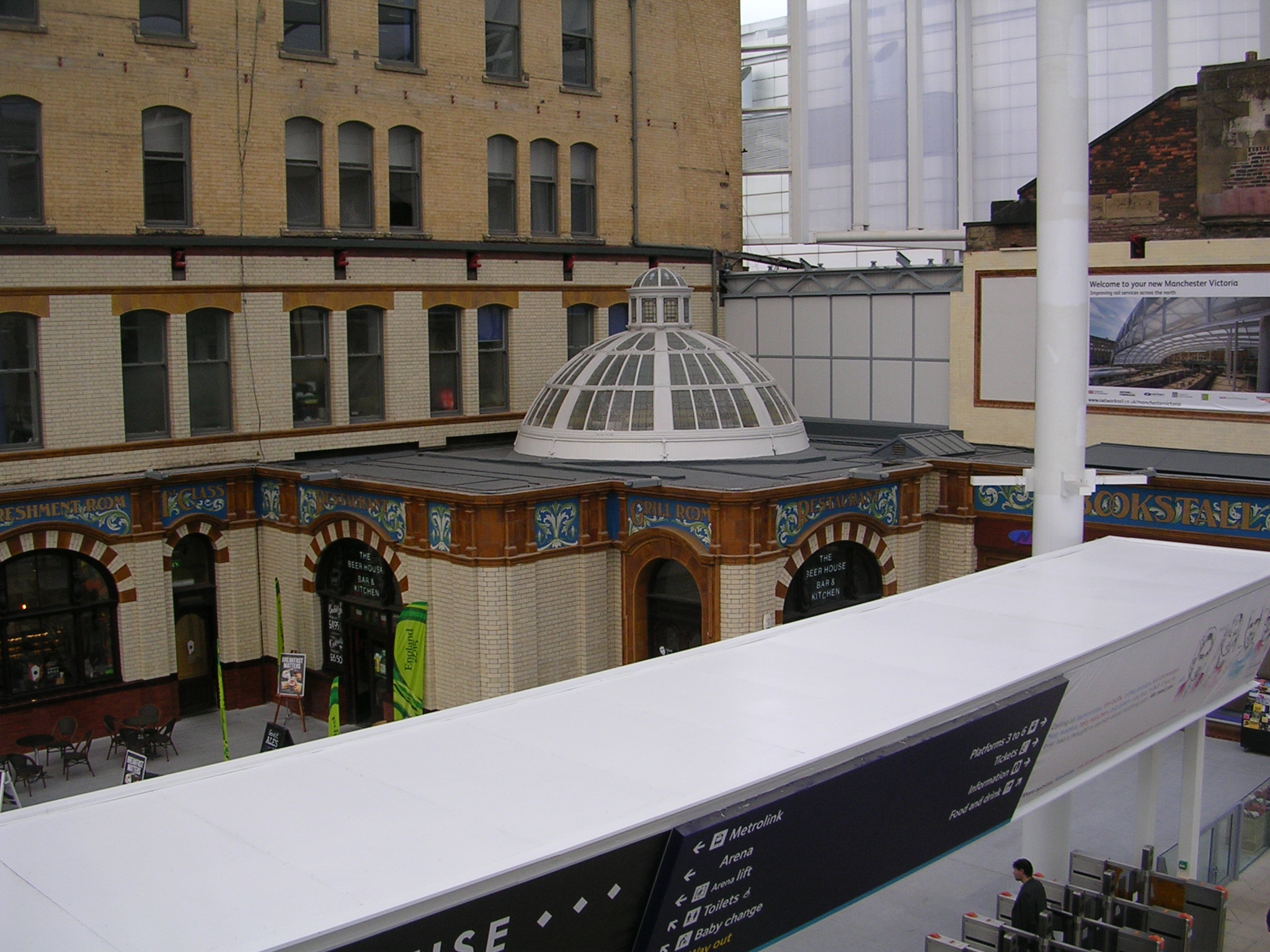
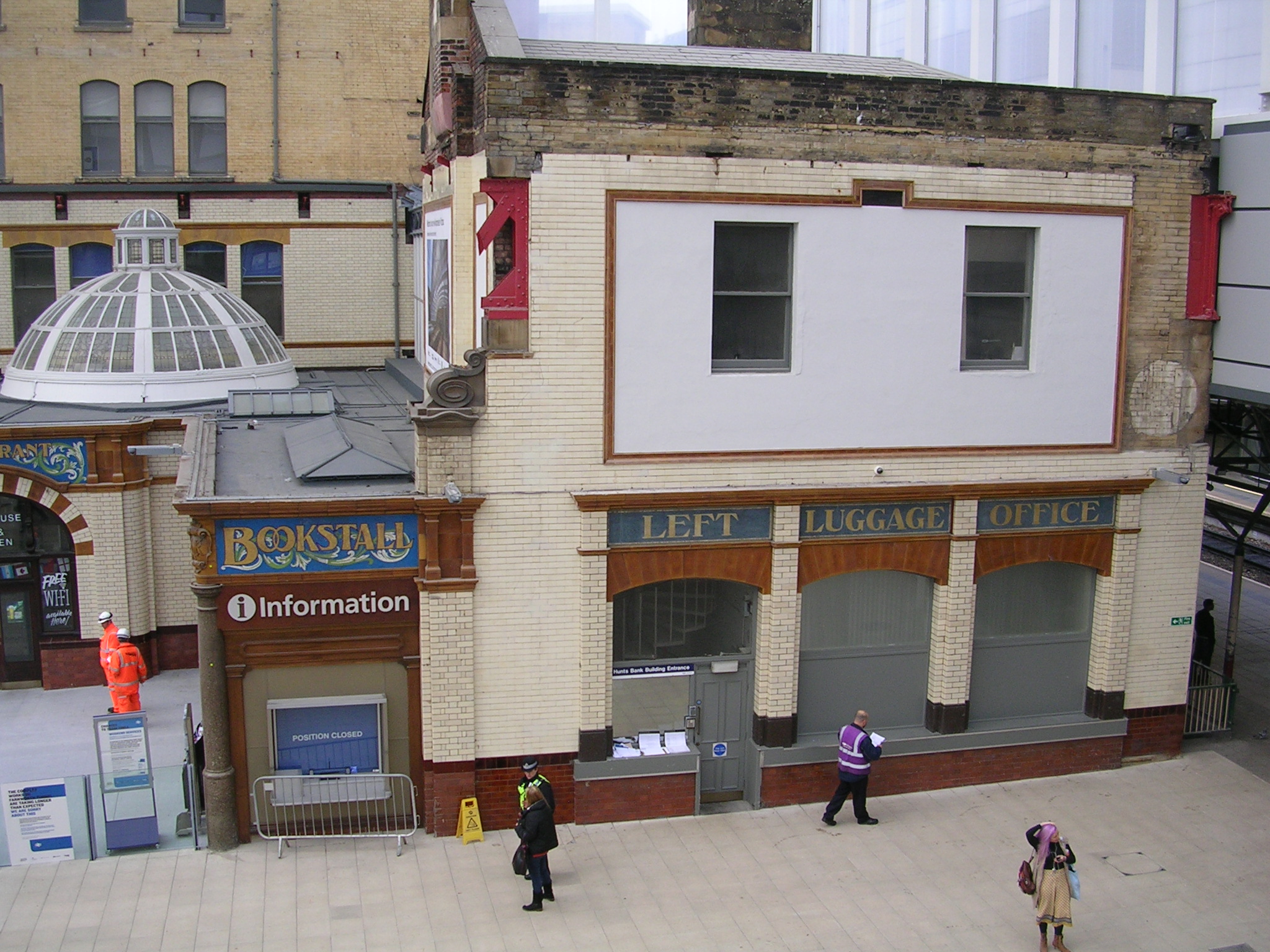 Inside the bar you can look up into the dome. Probably not a good idea after a few pints:
Inside the bar you can look up into the dome. Probably not a good idea after a few pints: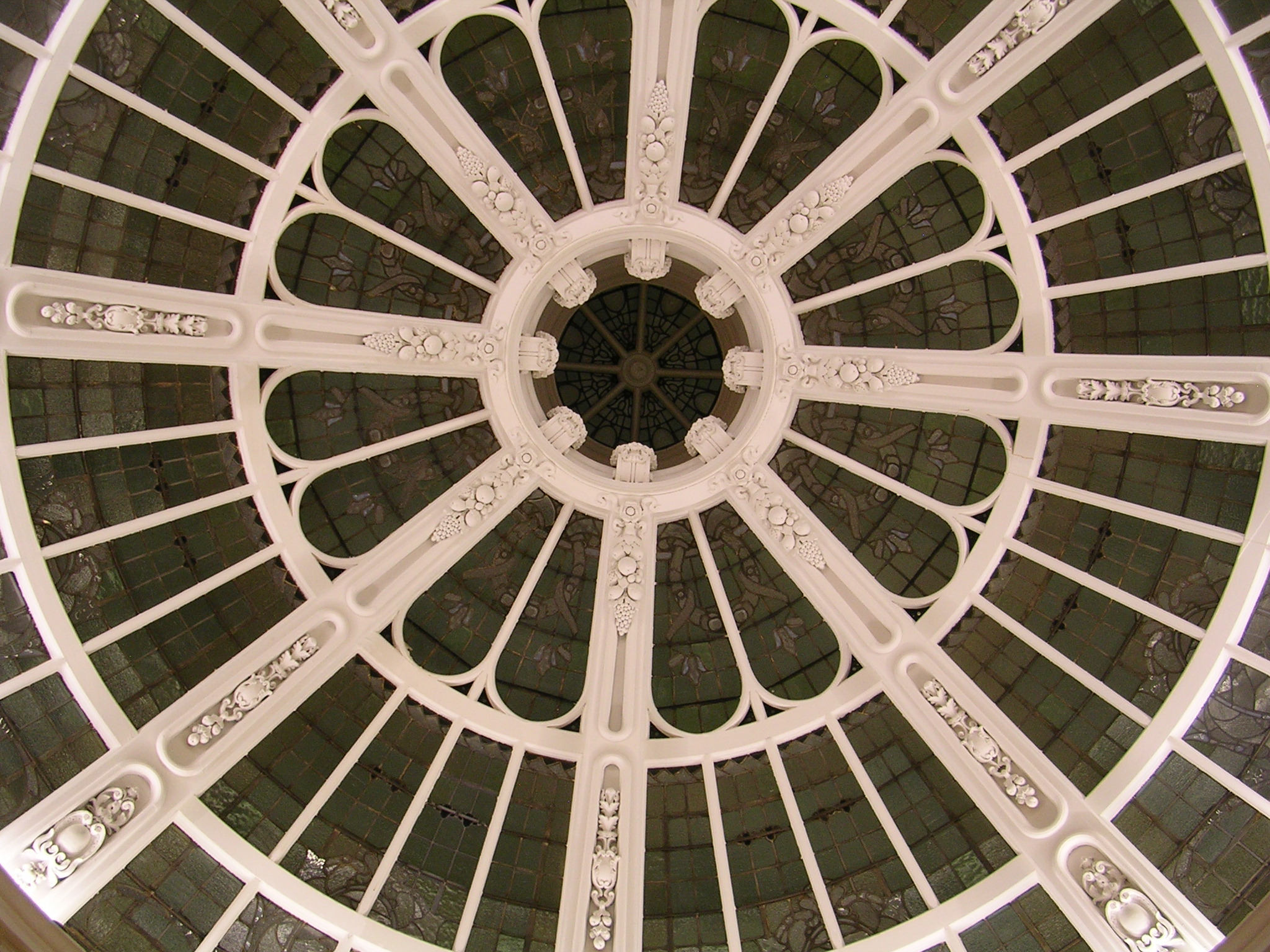 Also under the roof is a this complex junction for the trams:
Also under the roof is a this complex junction for the trams: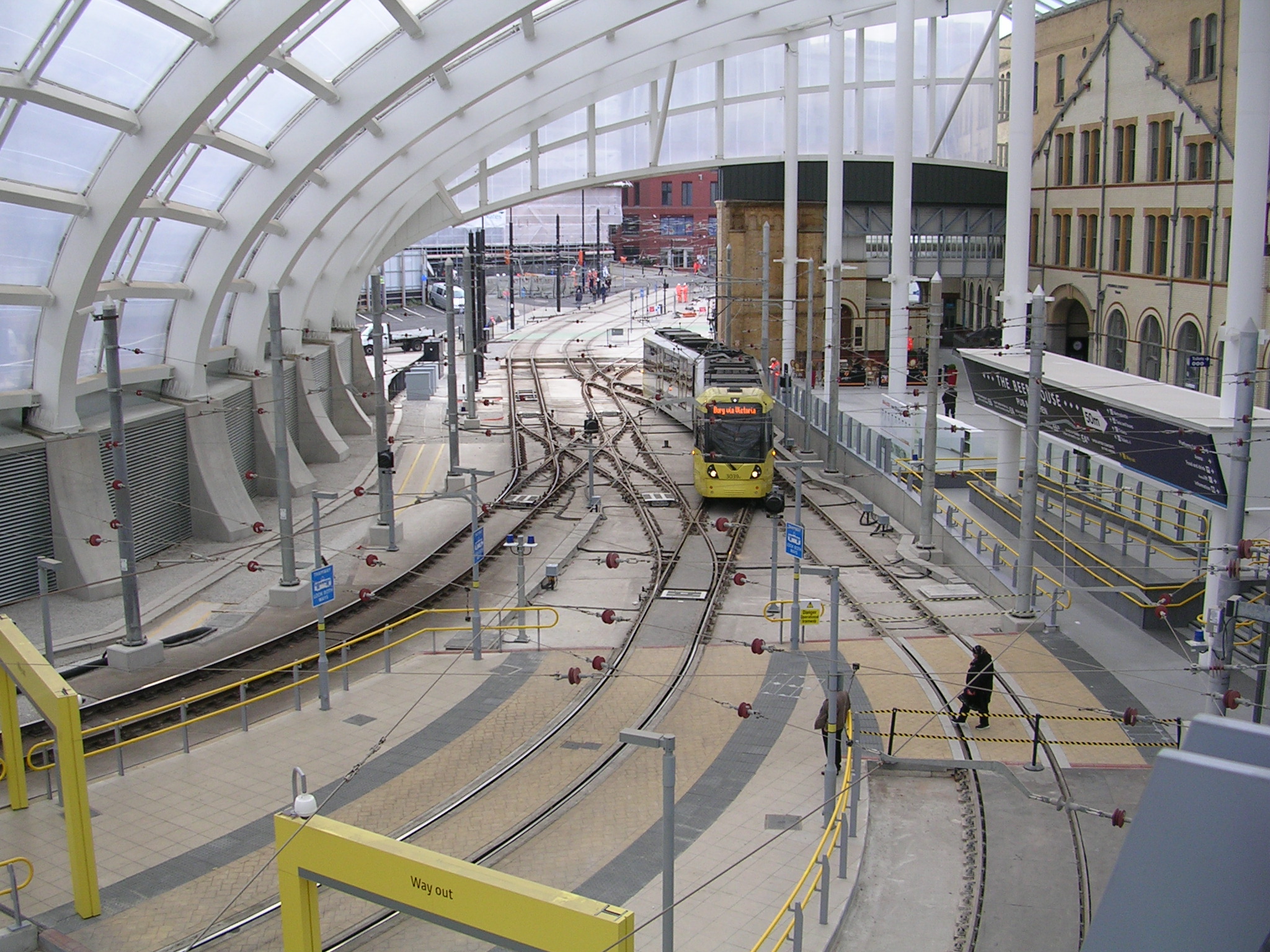
Postcards from Pittsburgh – Groundhog Day
For those of you who haven’t seen the film, I’ll explain. Groundhog Day is the 2nd of February. On a hill called Gobbler’s Knob near Punxsutawney, Pennsylvania, a groundhog by the name of Punxsutawney Phil emerges from his burrow at dawn on Groundhog Day. If he sees his shadow, then we are in for six more weeks of winter, if not then spring is just round the corner. Phil has been making these predictions for over a century now and he is always correct.
This year the unique date of 02/02/02 was officially designated as the Phillenium!
For those who have seen the film, it wasn’t actually made in Punxsutawney but in Woodstock, Illinois.
By 5am the party has already been going for two hours, and the crowd is building up in sub-zero temperatures: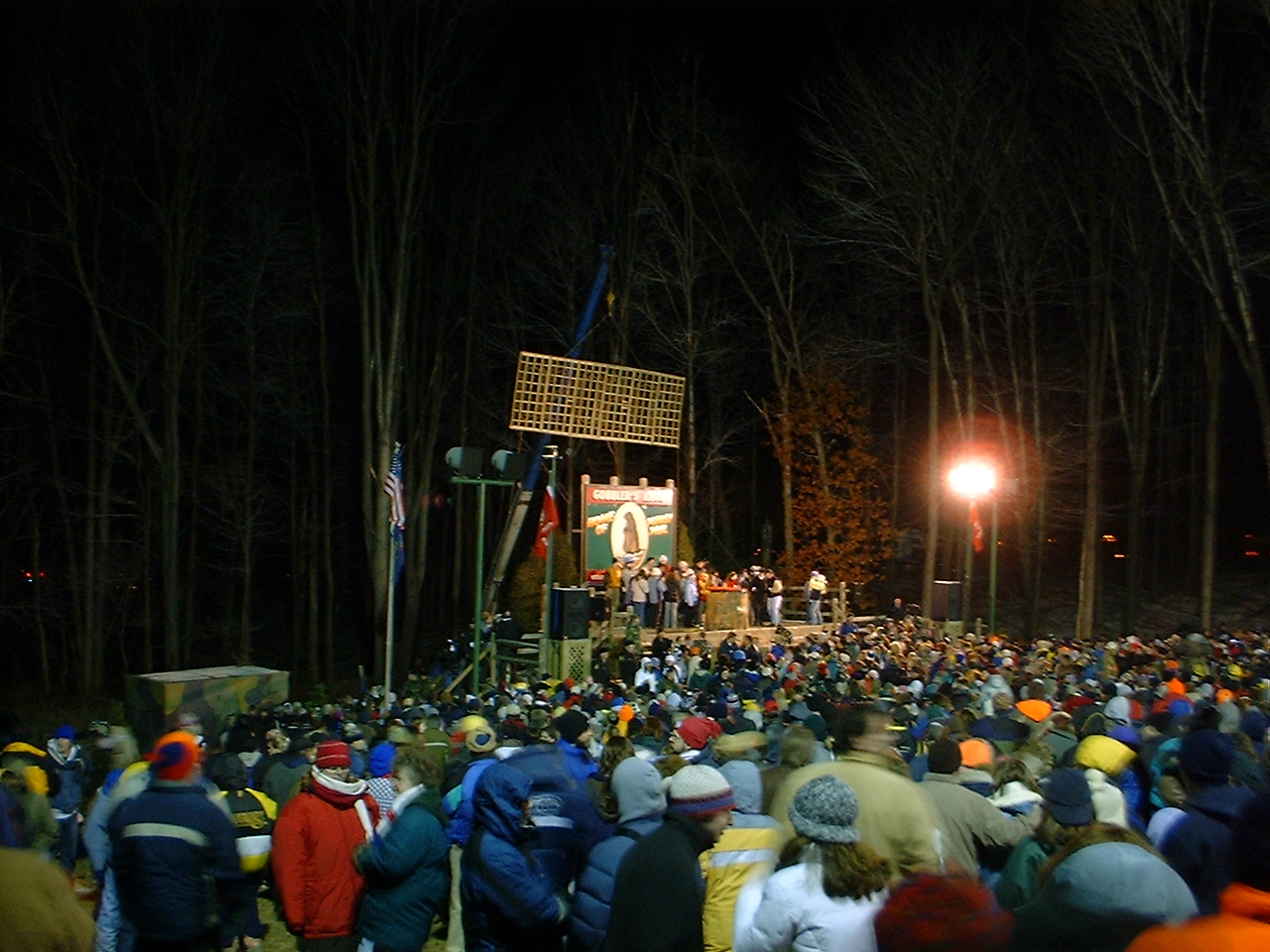 At precisely 07.26 Phil emerges from his home and is shown to the crowd of about 40,000 before he tells his prognostication to the leader of the Groundhog Inner Circle (the gentlemen in top hats) who is the only person who speaks groundhogese. [This picture would have benefitted from a telephoto lens! Sorry.] This year he saw his shadow so winter continues:
At precisely 07.26 Phil emerges from his home and is shown to the crowd of about 40,000 before he tells his prognostication to the leader of the Groundhog Inner Circle (the gentlemen in top hats) who is the only person who speaks groundhogese. [This picture would have benefitted from a telephoto lens! Sorry.] This year he saw his shadow so winter continues: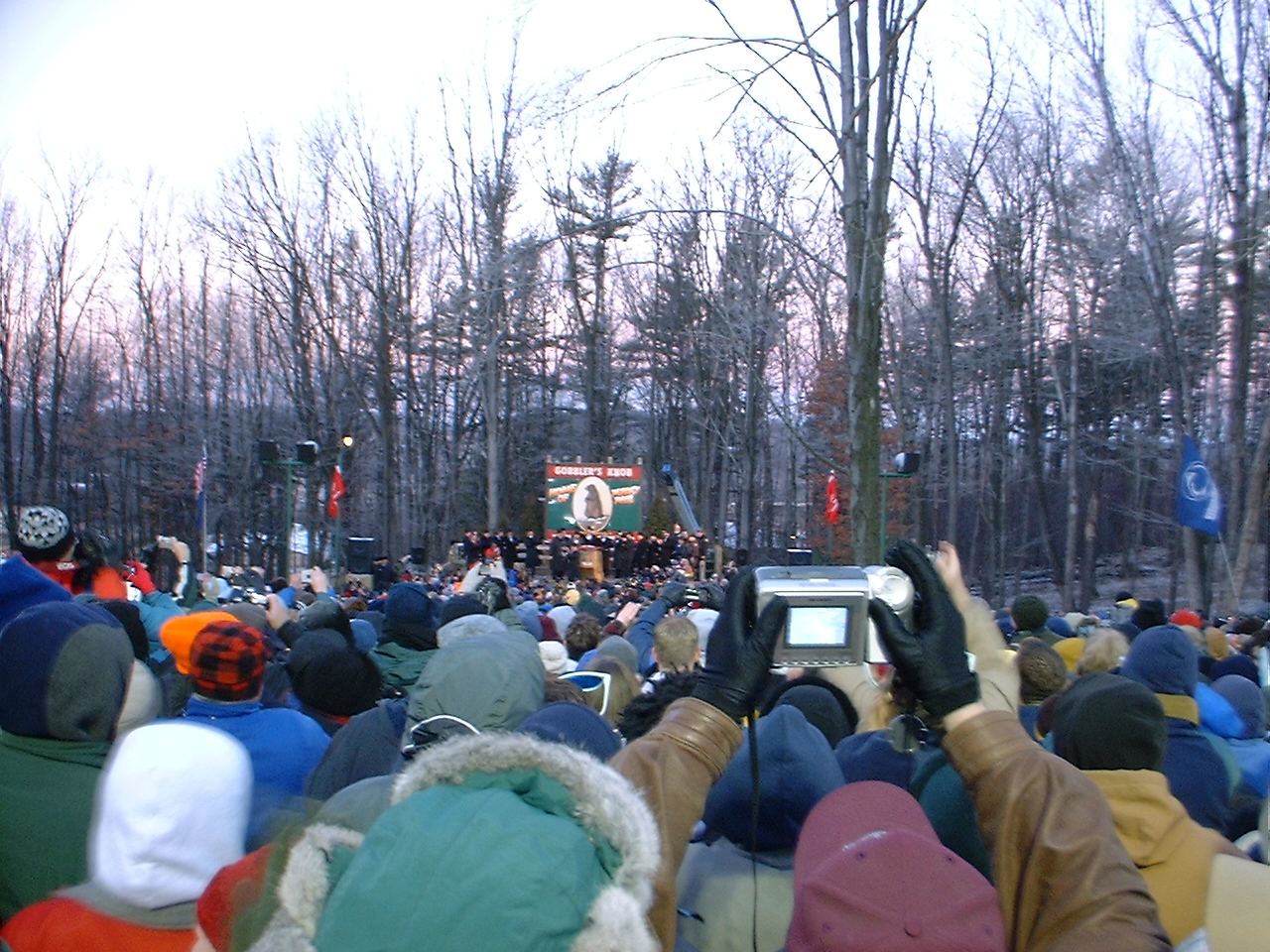 After the ceremony I made my way up to the stage to get a closer look at this famous animal, who seemed totally un-fazed by the attention he was receiving:
After the ceremony I made my way up to the stage to get a closer look at this famous animal, who seemed totally un-fazed by the attention he was receiving: As you can see, this is an important news event broadcast live by satellite:
As you can see, this is an important news event broadcast live by satellite: Every schoolbus for miles around was brought in to carry the people back to their cars or to the other events in Punxsutawney itself, although it was quicker to walk:
Every schoolbus for miles around was brought in to carry the people back to their cars or to the other events in Punxsutawney itself, although it was quicker to walk: